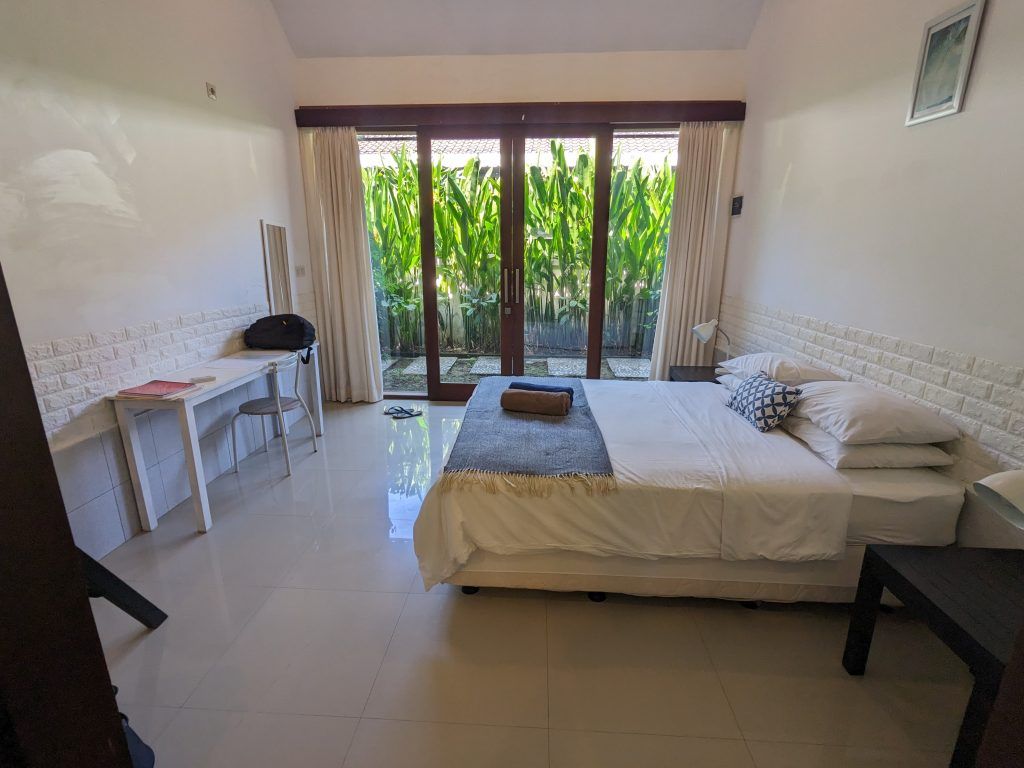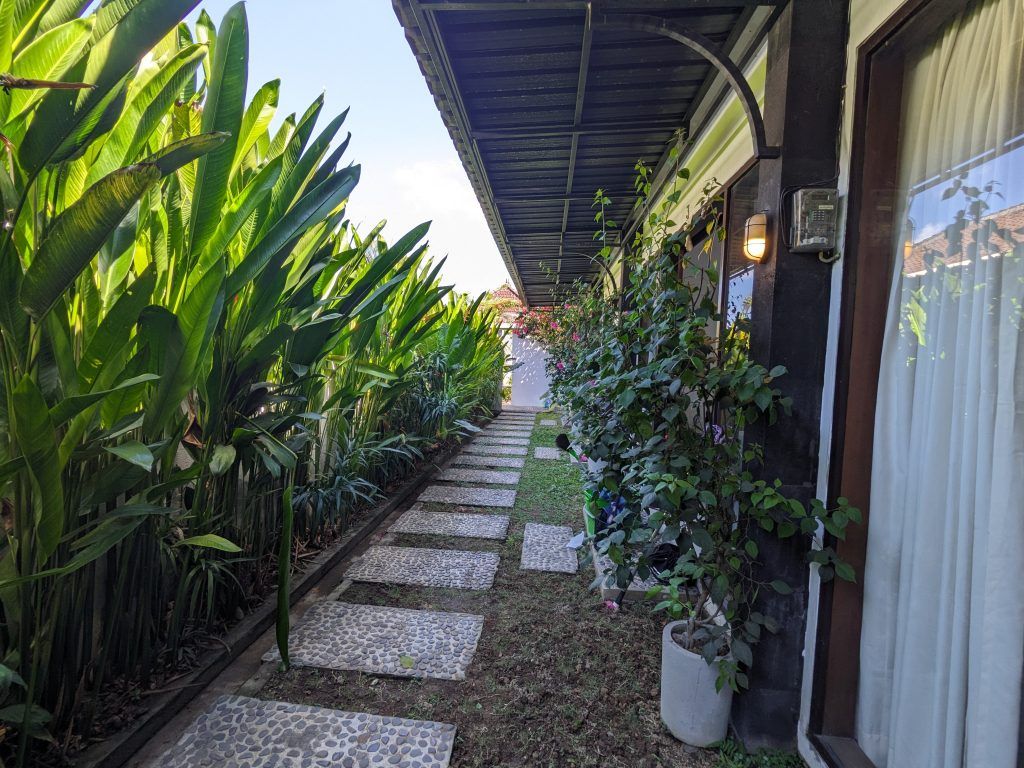When I first visited Bali over 25 years ago, it struck me as one of the most beautiful places I had ever seen. Now, going back this year, it is still magnificent. While the main tourist centers of Canggu and Ubud can be overrun at times, the rest of the island is still a rich tapestry of lush rice paddies, strident volcanos, pristine beaches, and wonderous underwater seascapes.
I spent a total of two months in Bali, so there’s a lot in this post. From the crazy Kecak Dance to Munduk, Amed, Nusa Lembongan, Pemuteran, Ubud and Canggu. Feel free to take your time and scroll through it slowly. You can get a sense of why so many people fall in love with this magical “Island of the Gods”.
I also did some really nice diving in Bali, and those experiences are documented in this post: https://theperennialpilgrim.com/diving-in-bali
The Kecak Dance
One of the most memorial experiences from my first trip to Bali was the kecak (“kechak”) dance. It depicts the Hindu story from the Ramayana in which the monkey-like Vanaras creatures, led by the monkey god Hanuman, help Prince Rama fight the evil King Ravana. It was just as fun to watch this trip as it was the first time. I’m not sure how to describe it with words. Hopefully these short videos can show its weird wonderfulness.
The monkey king decided to come down to my lap to ogle at the pretty American woman sitting next to me. It was pretty funny.
The dance ended with the monkey god stepping on and throwing real burning coconut leaves with his bare hands and feet. It was pretty impressive.
Munduk
Munduk is a village of about 6,000 people located in the higlands of north central Bali, at an elevation of about 1,200 meters (or 3,900 feet). It’s an incredibly beautiful area. Below is the view from the deck in front of my room.
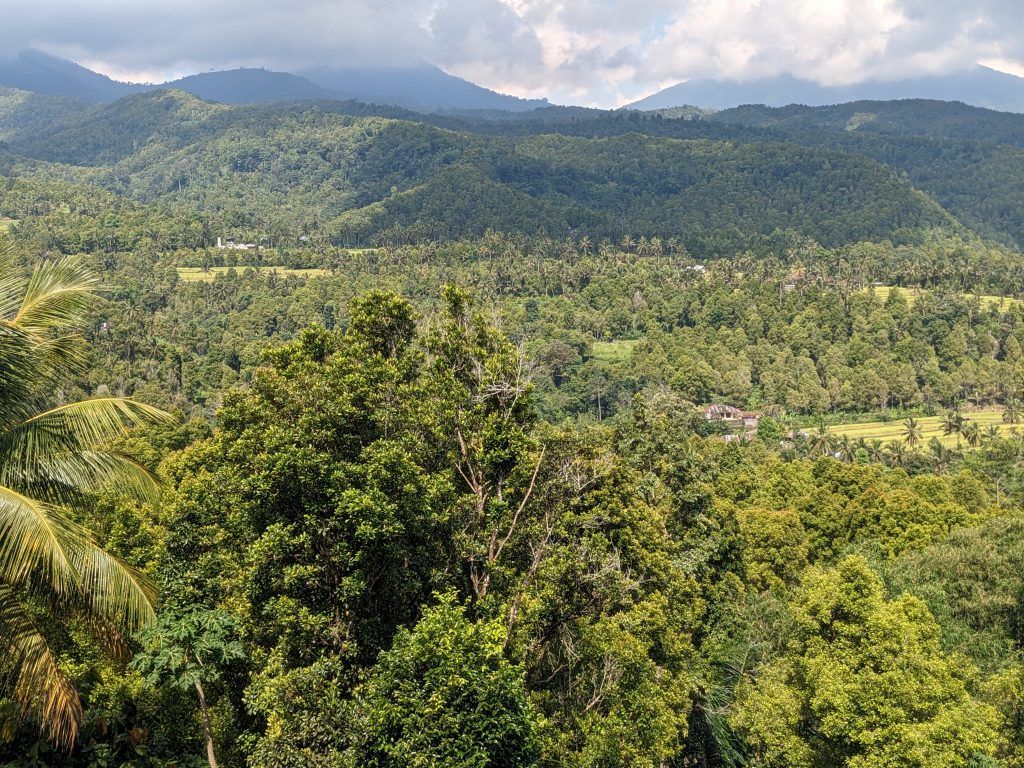
The view of Lake Tamlingan, one of three large lakes nearby.
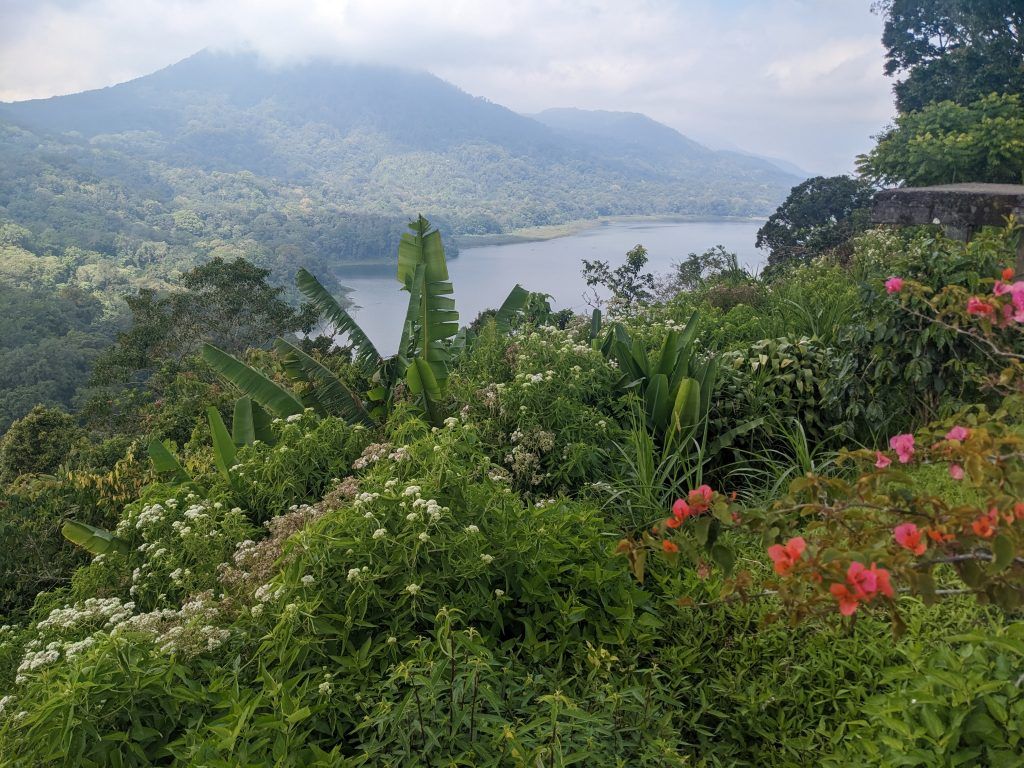
As you can see from the two videos riding a scooter through the hills here was an incredible experience, but with changes in elevation and the many hairpin turns, it definitely wasn’t comfortable. My motorcycle training in Laos came in handy.
The nearby Ulun Danu Beratan Temple is one of the iconic photos of Bali. It is on Lake Bratan and was built in 1633. There is a whole complex of small temples here. The place was packed when I was there and most of the tourists at this Hindu temple seemed to be Muslim Indonesians visiting from nearby Java.
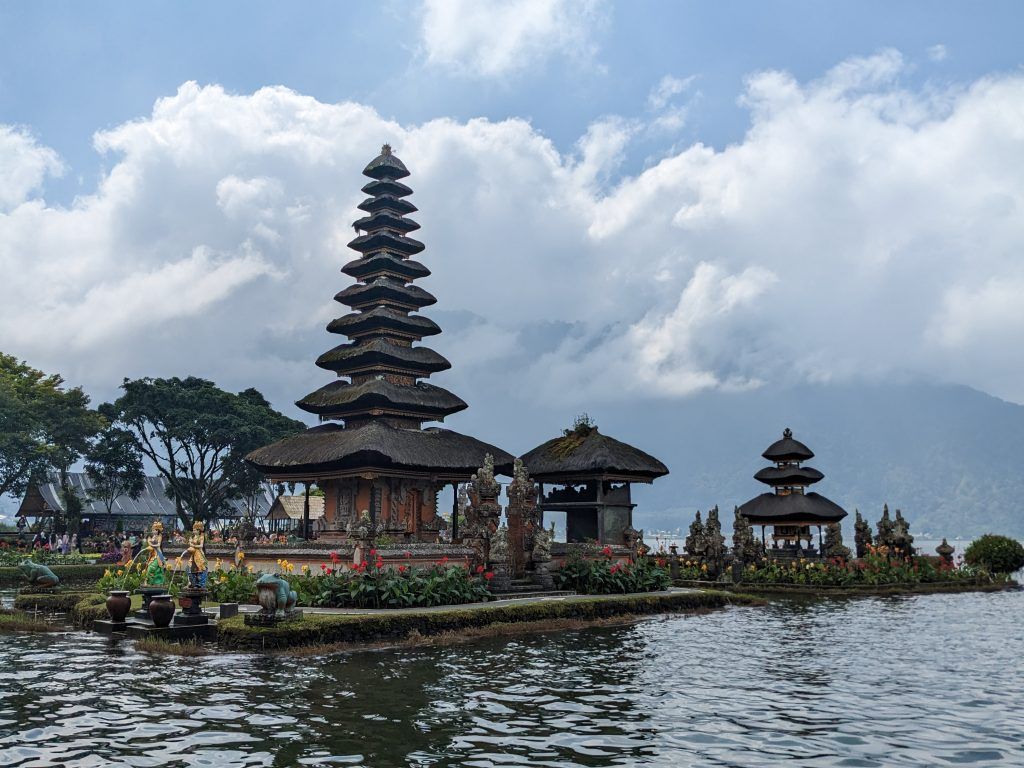
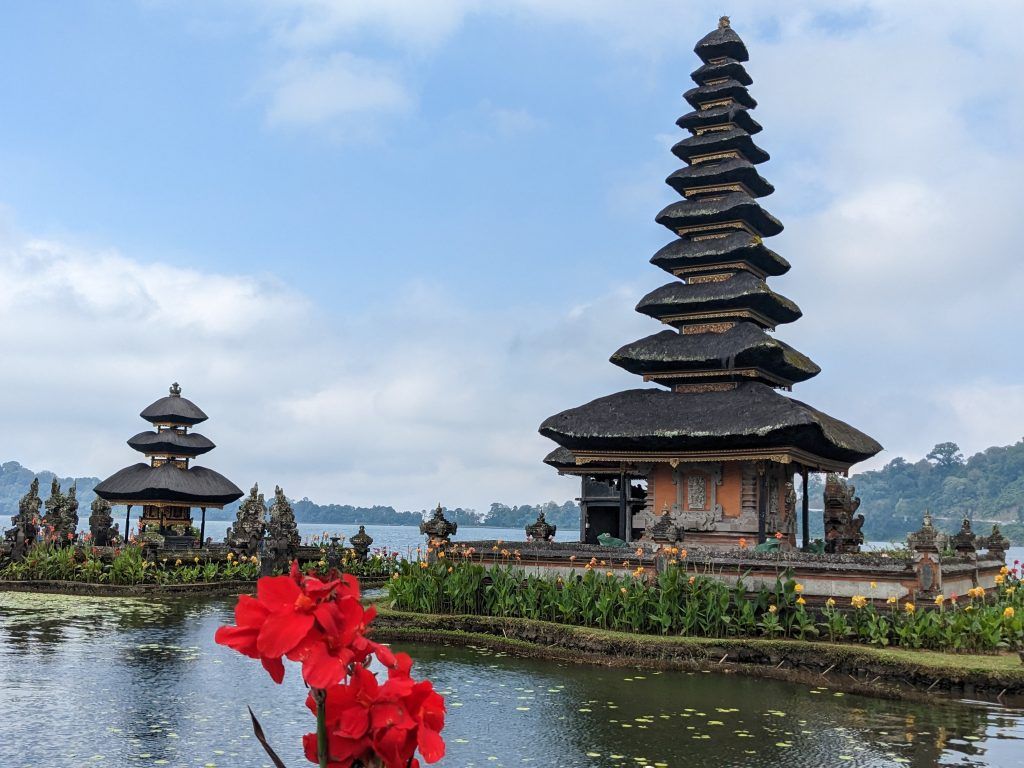
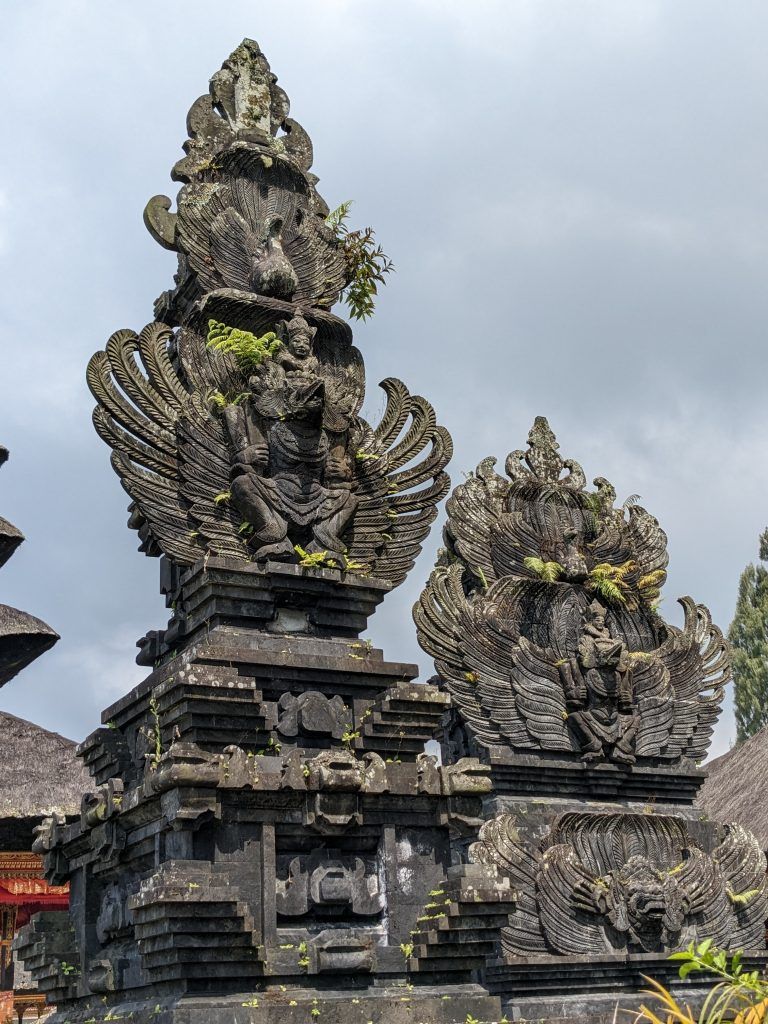
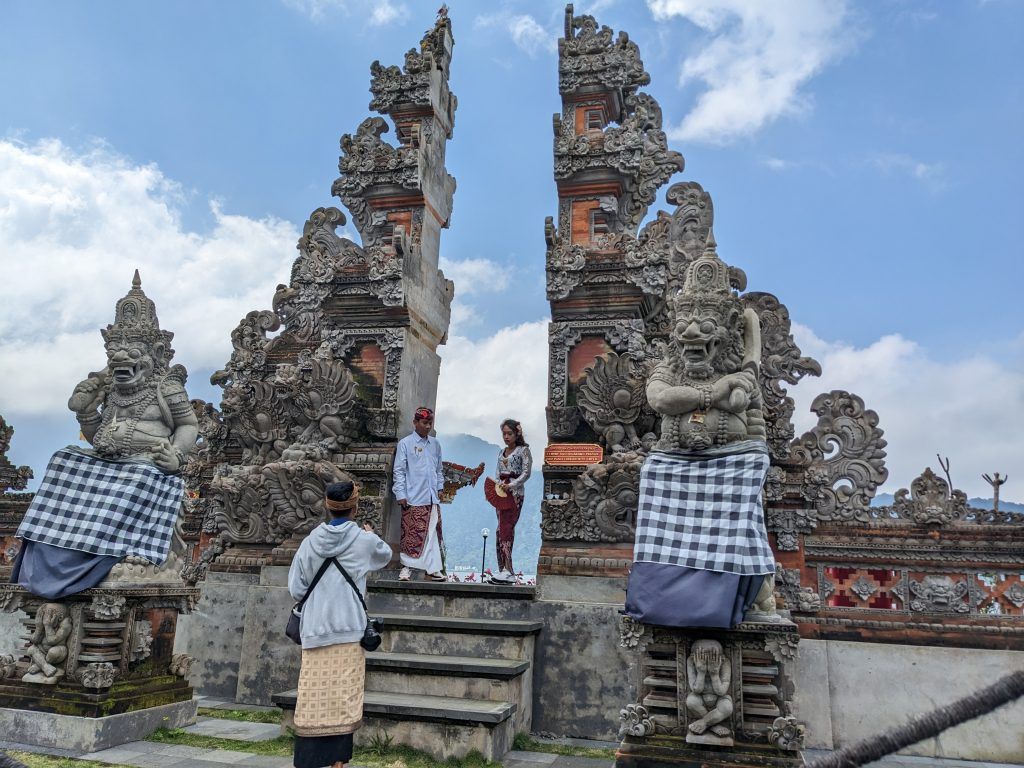
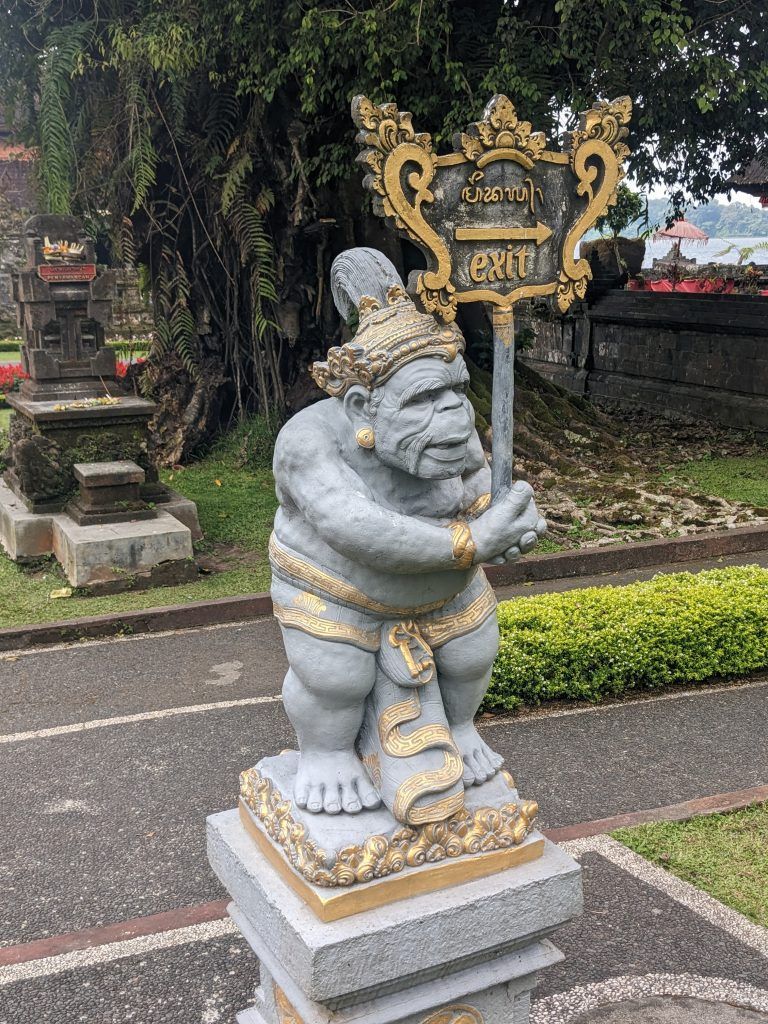
The Waterfalls
What the area around Munduk is most known for are waterfalls. They are everywhere here. The first one I visited was Gitgit Waterfall, which is about 35 meters high and, as you can hear from the video below, is pretty loud. It has a spray that extends 20-30 meters out from where it hits the rocks at the bottom.
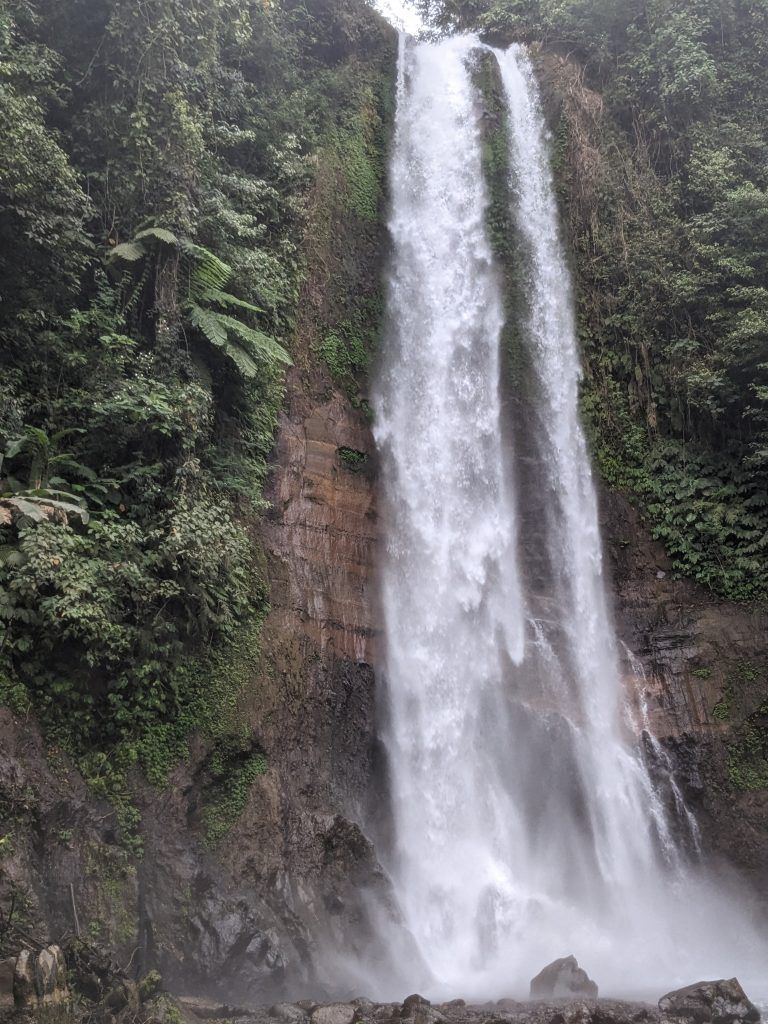
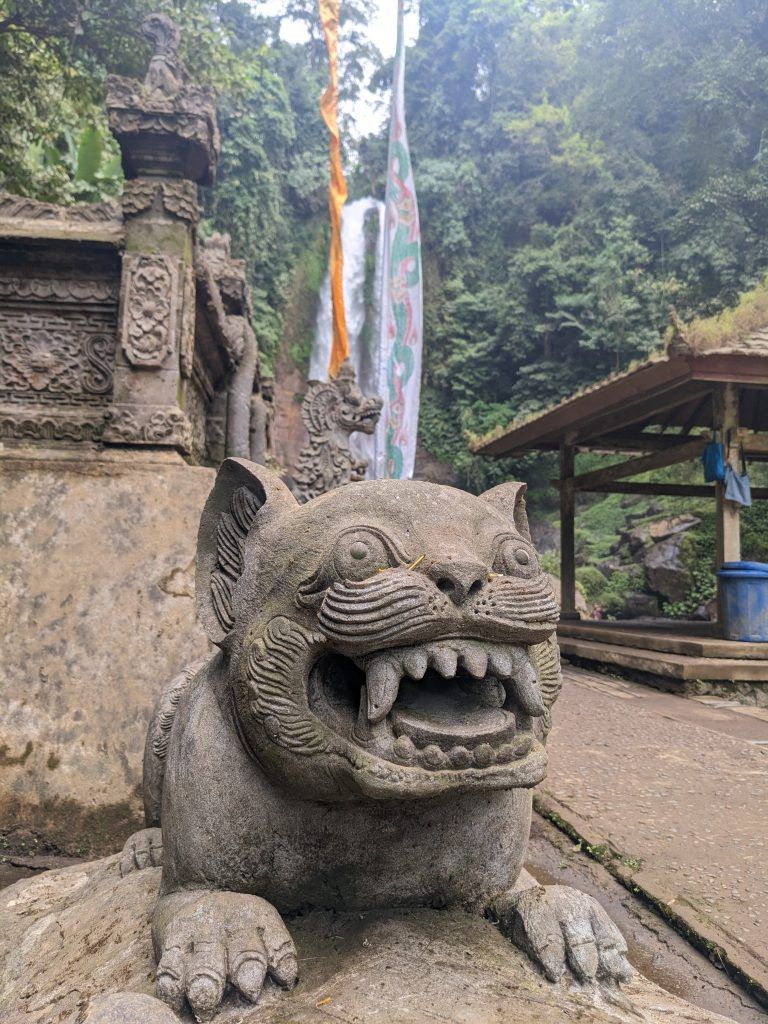
Next was the crowded, but beautiful Banyumala Waterfall. It was surrounded by jungle and the walk in and out was incredibly scenic. People could wade into the waist high waters in front of the falls.
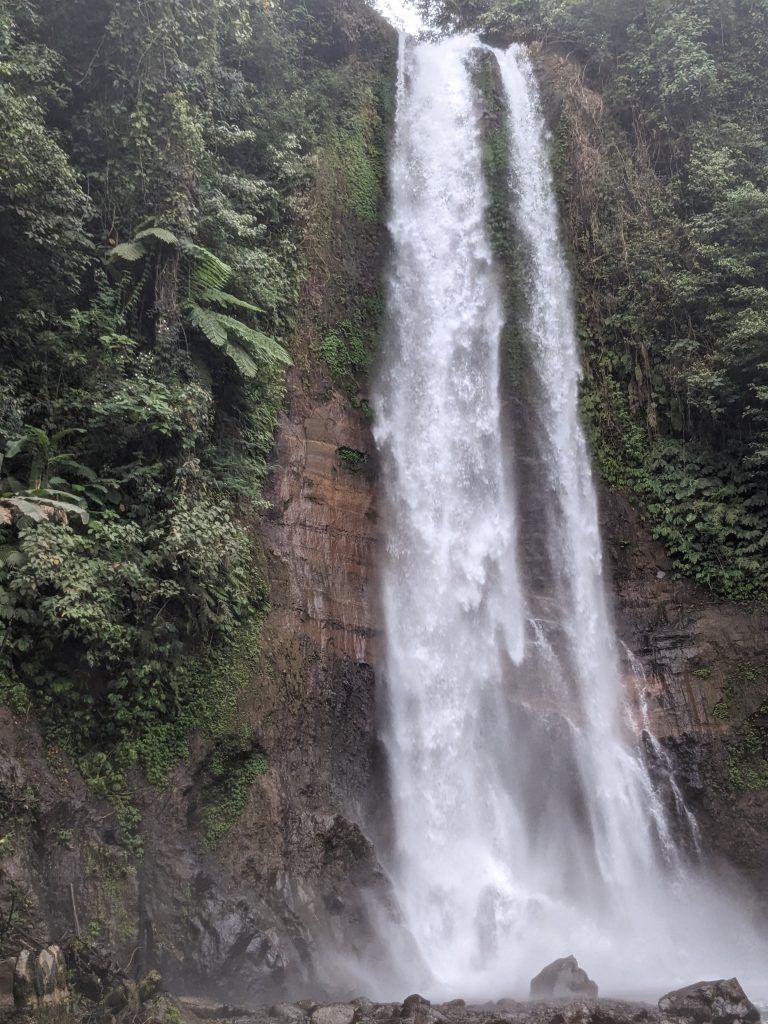
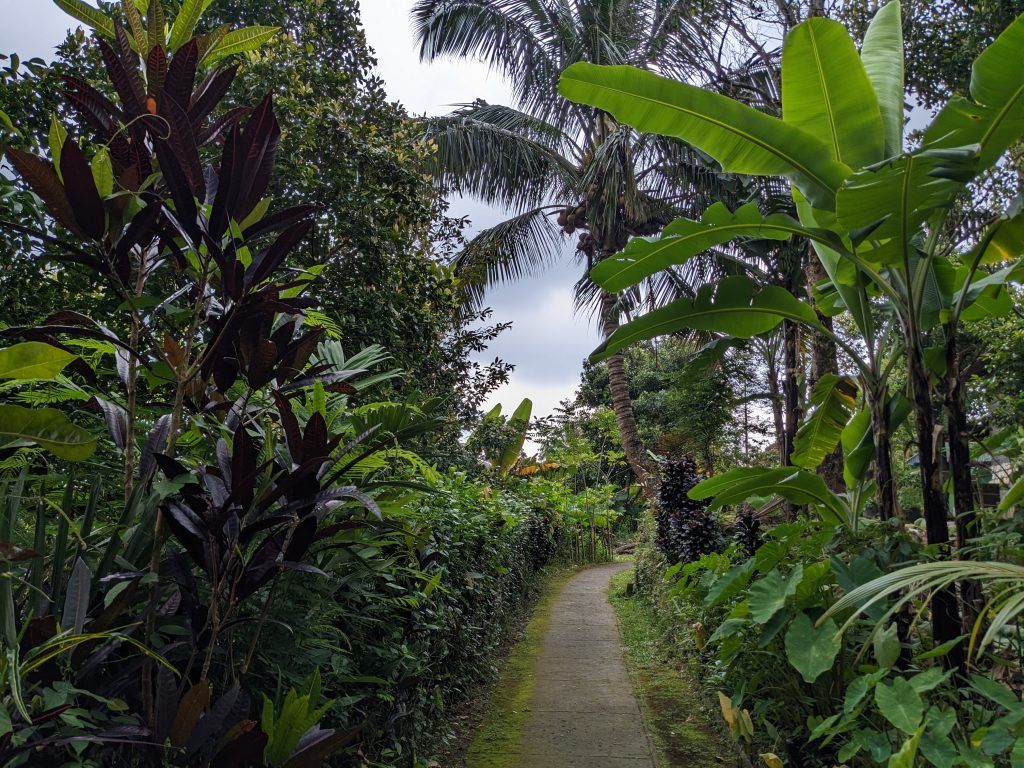
Finally, I visited the Golden Valley Waterfall. It was the smallest of the three I saw, but it still packed a nice punch as the video shows.
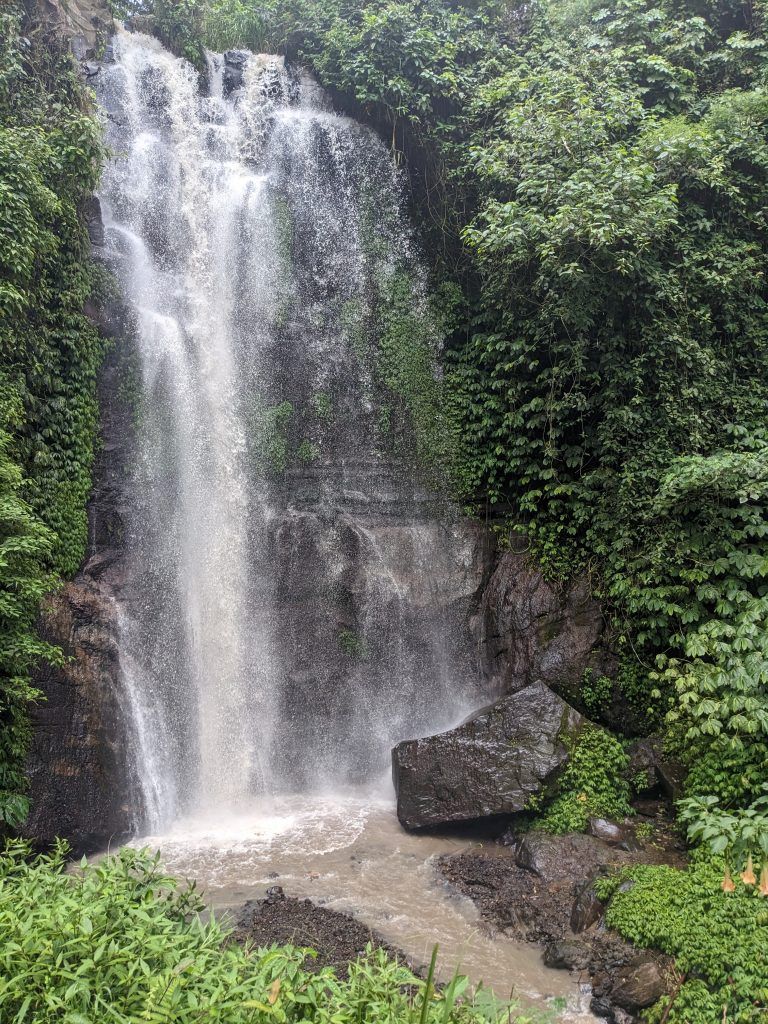
You can walk across a bamboo bridge at the very top of the falls. If you jump in, you’re going over the falls.
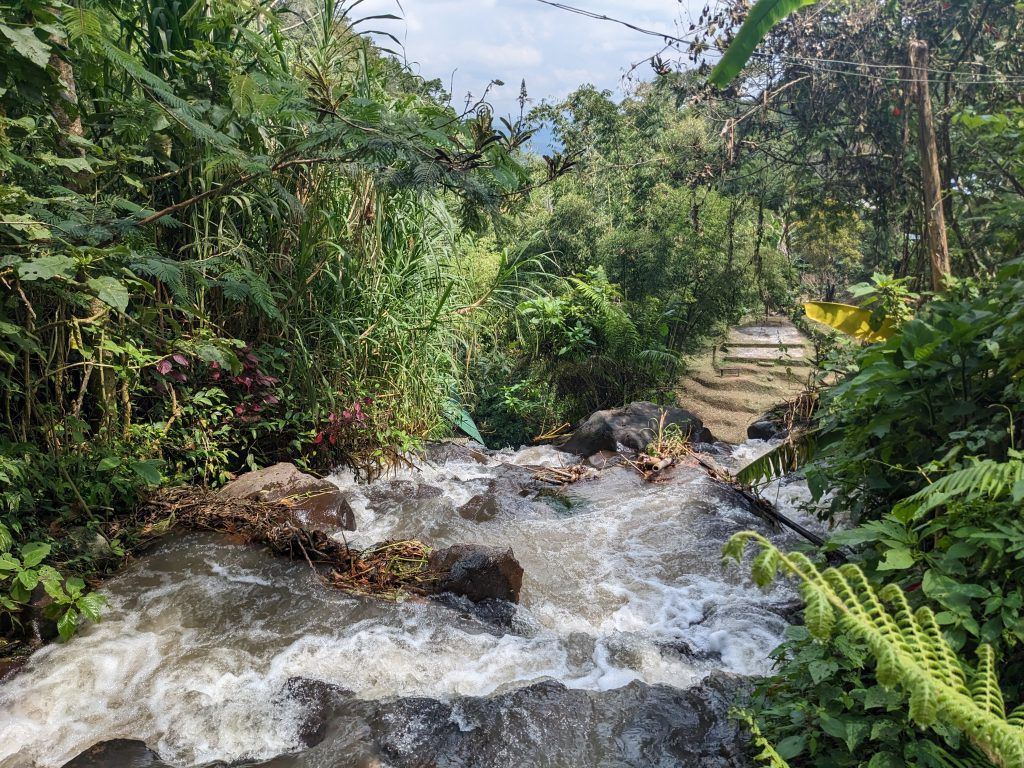
The best part about these falls is the Golden Valley ECO Cafe located in front. They are known for their kopi luwak coffee.
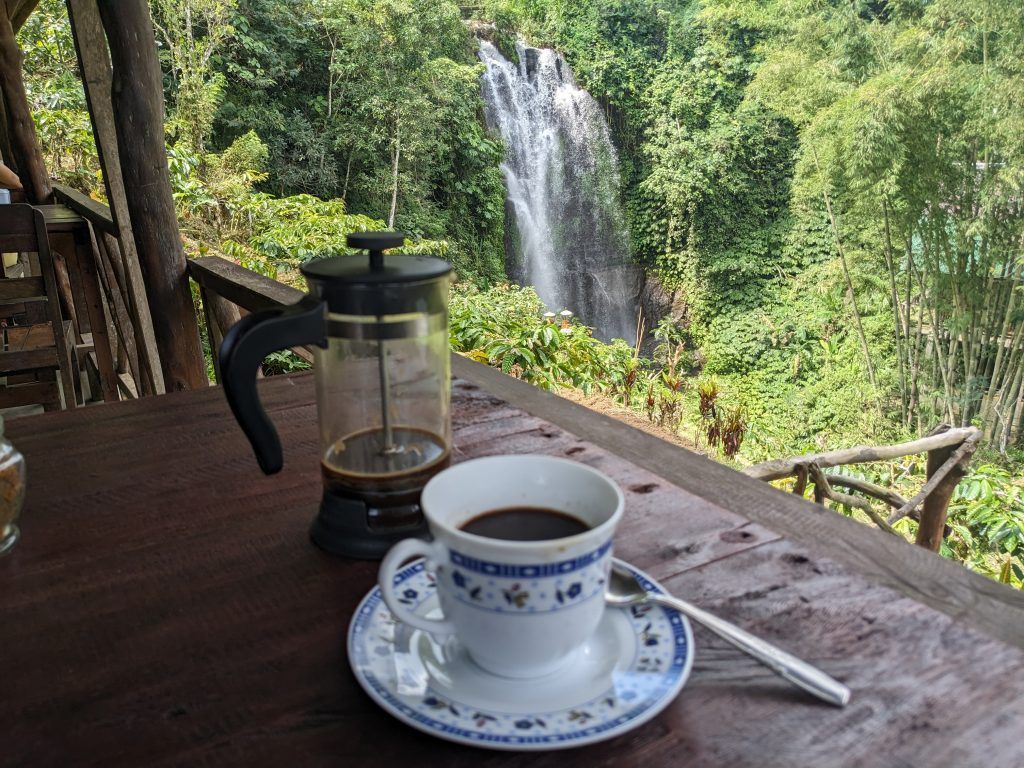
As Wikipedia states: “Kopi luwak, also known as civet coffee, is a coffee that consists of partially digested coffee cherries, which have been eaten and defecated by the Asian palm civet. The cherries are fermented as they pass through a civet’s intestines, and after being defecated with other fecal matter, they are collected. Although kopi luwak is a form of processing rather than a variety of coffee, it has been called one of the most expensive coffees in the world, with retail prices reaching US$100 per kilogram for farmed beans and US$1,300 per kilogram for wild-collected beans.”
Kopi luwak’s claim to fame came from this funny scene between Morgan Freeman and Jack Nicholson in the movie “The Bucket List”
I only paid $4 for my cup. For me it wasn’t a big deal, it tasted like thick, rich coffee, which I liked. But I couldn’t judge anything special about the flavor. They grow the beans right there and harvest the civet scat from those that roam in their area. Other sources capture the cats and, unfortunately, don’t always treat them well.
I stayed in a really nice guesthouse overlooking the nearby valley. There was a nice infinity pool area; but the weather was not that hot while I was there, so I didn’t see anyone use it.
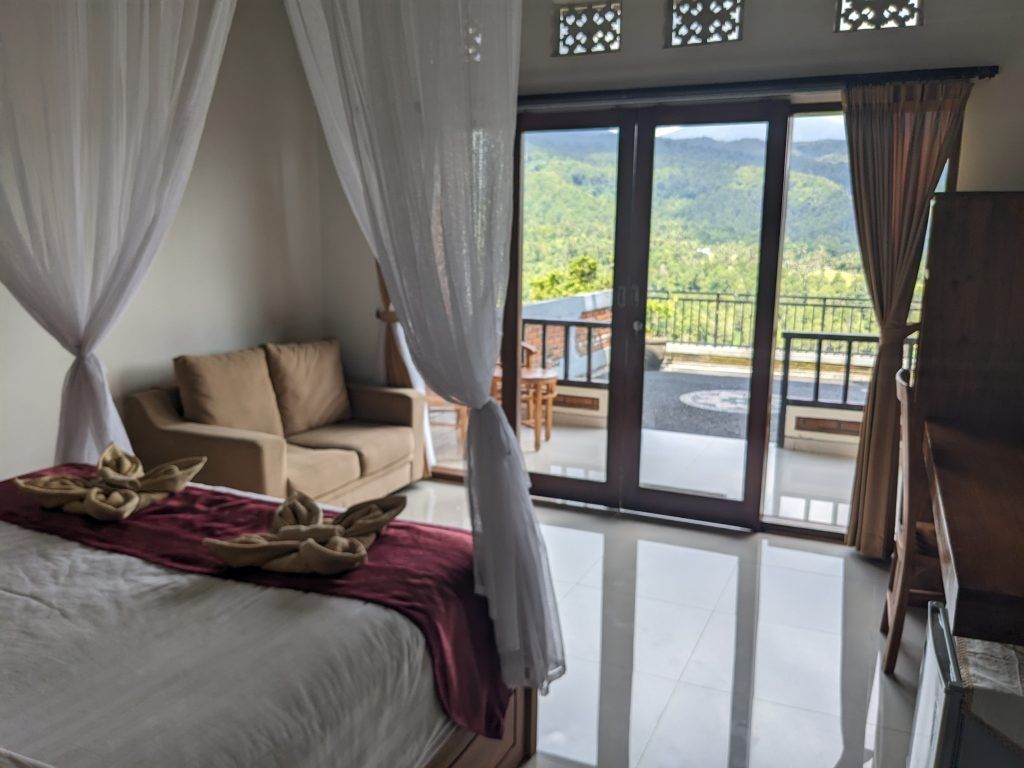
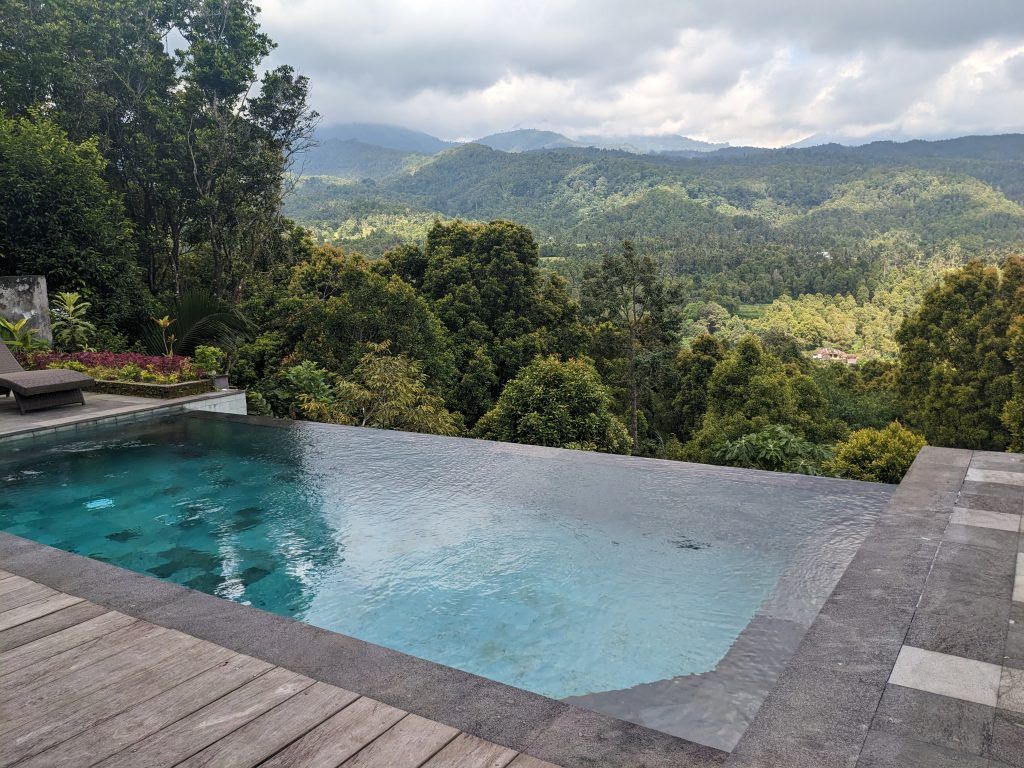
Amed
Amed is on the northeast tip of Bali. It’s a small town with a ton of amazing nearby dive sites and a small, but steadily growing expat community. It’s near Mount Agung, Bali’s largest volcano, which helped create the many soft, black sand beaches ringing the area.
Watching the sun set behind Mount Agung from a relaxing restaurant and bar overlooking parts of the town.
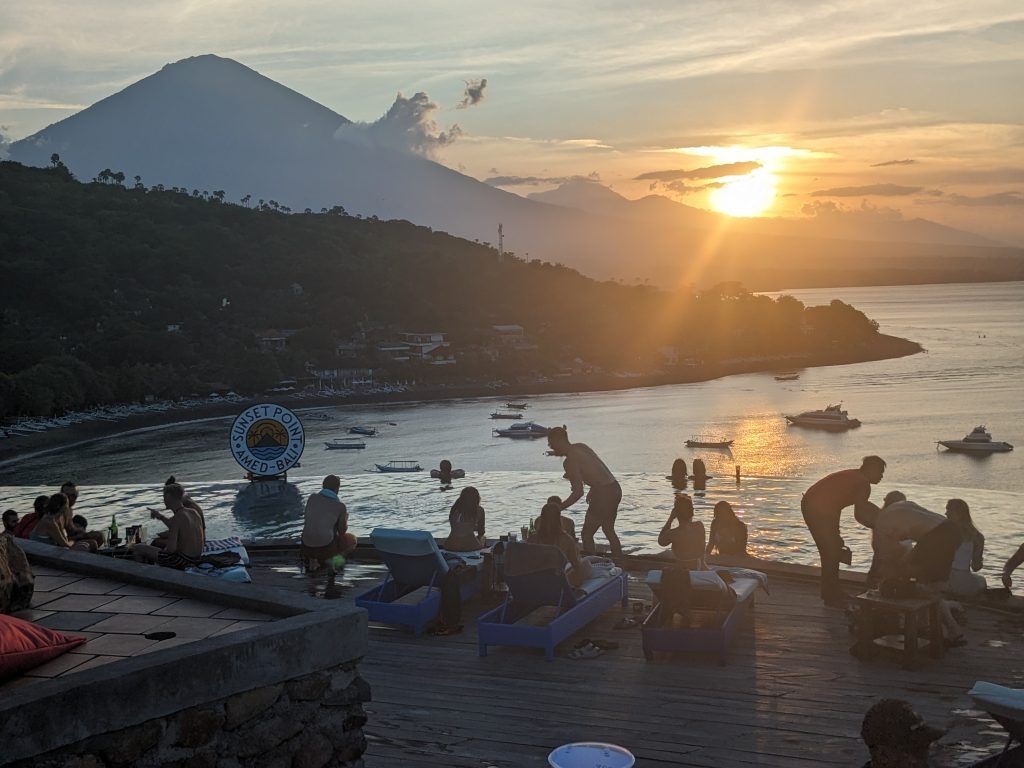
We rode our scooters up to a mountain plateau called Lahangan Sweet which has spectacular views of both the coast and Mount Agung.
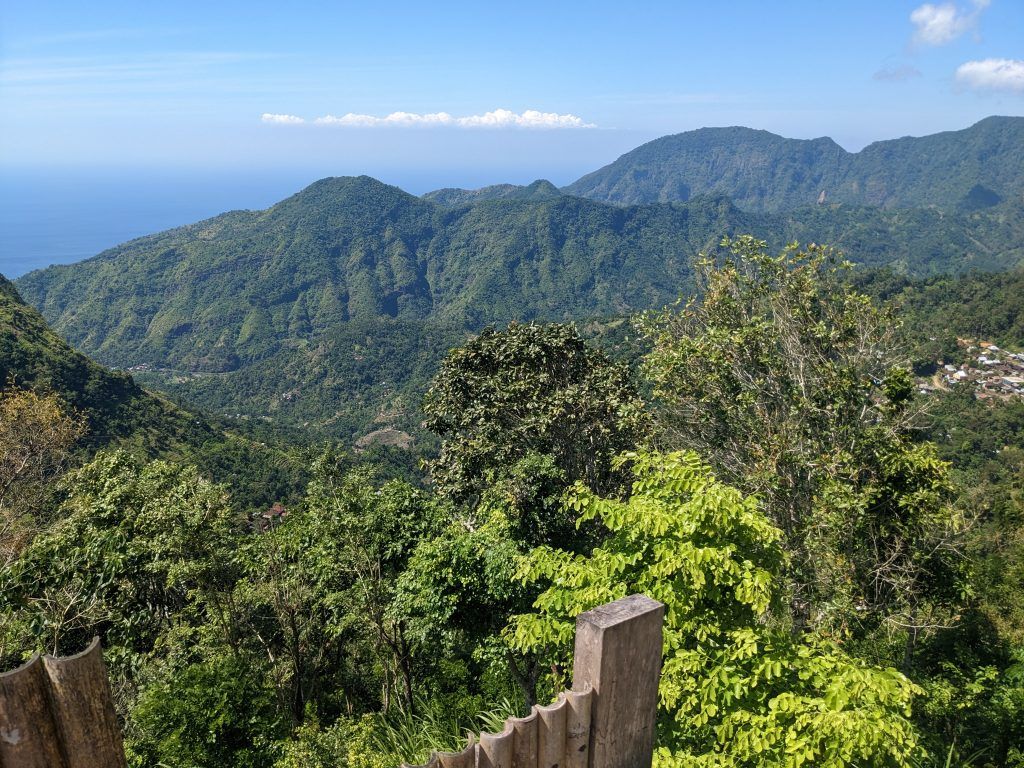
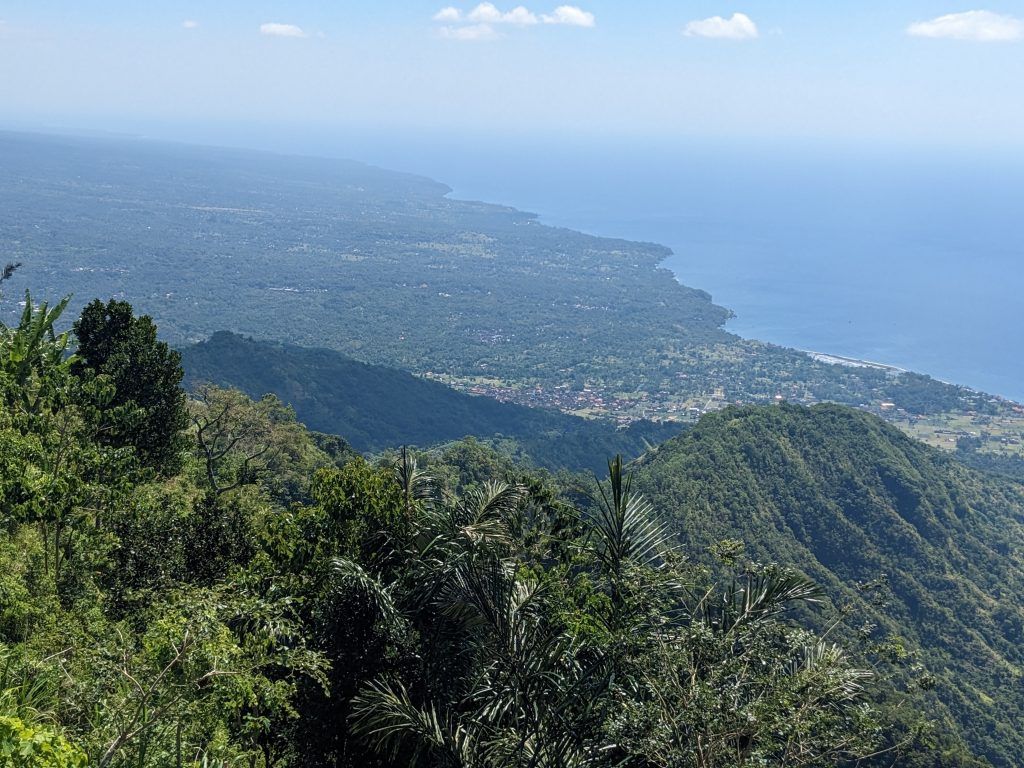
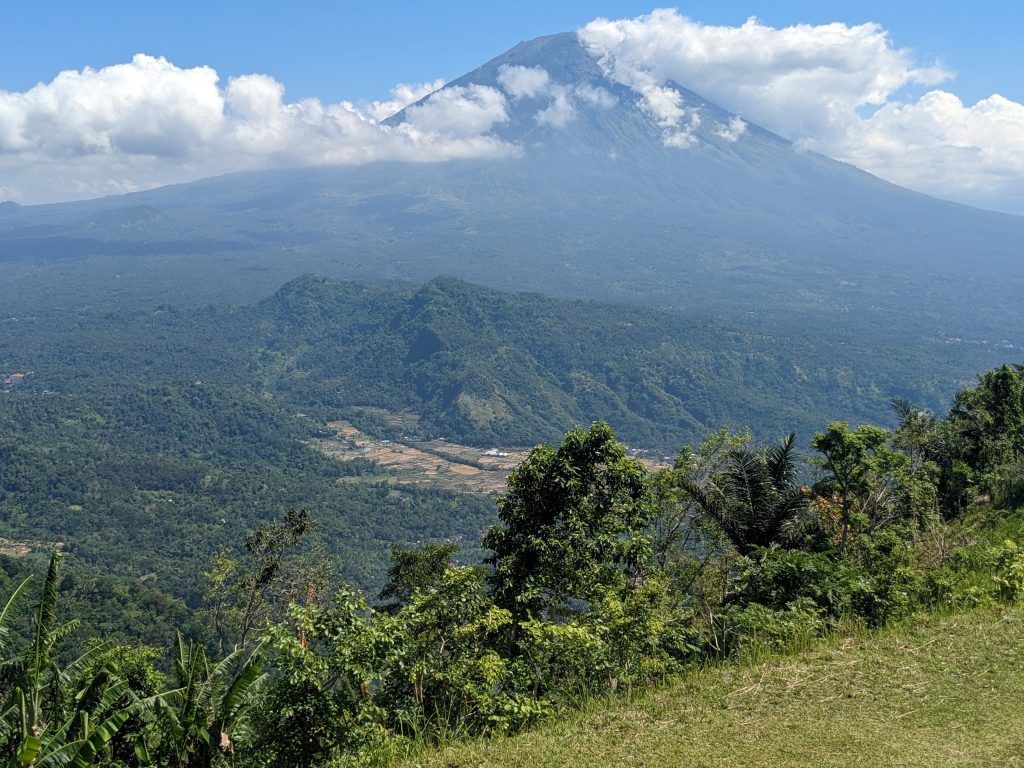
I have a friend from Hermosa Beach who’s lived in Bali for over 8 years now and has just recently moved up to Amed from Canggu in the south. He dives or snorkels almost every day here.
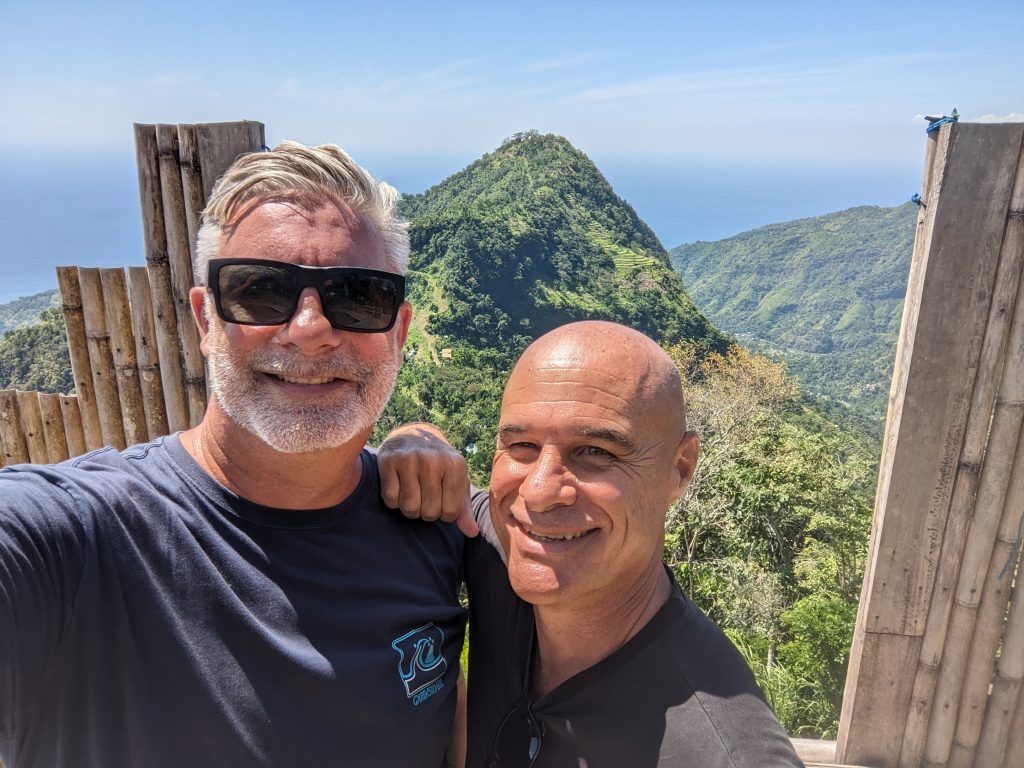
There is a two year old lighthouse near Amed on the northeast side of Bali. You can pay a small fee to climb to the top, where it offers a great view to the island of Lombok off in the distance.
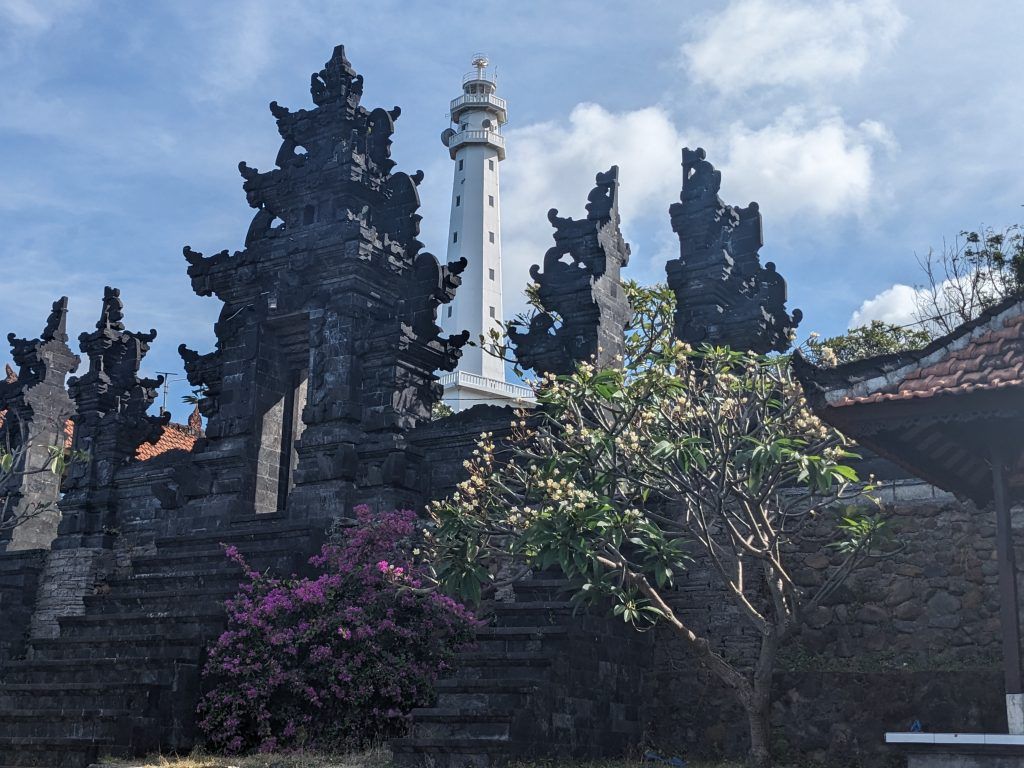
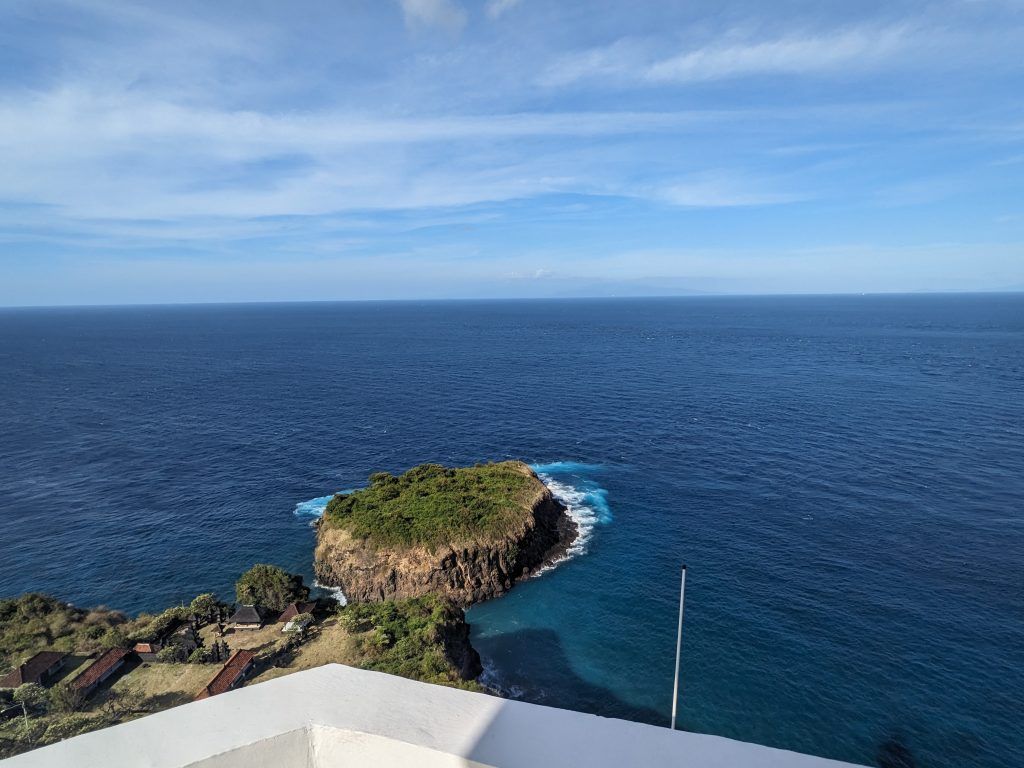
Just a 30 minute ride from Amed is the wonderful water temple of Tirta Gangga. It was built in 1946, mostly destroyed in a 1963 eruption of Mount Agung and then rebuilt in 1979.
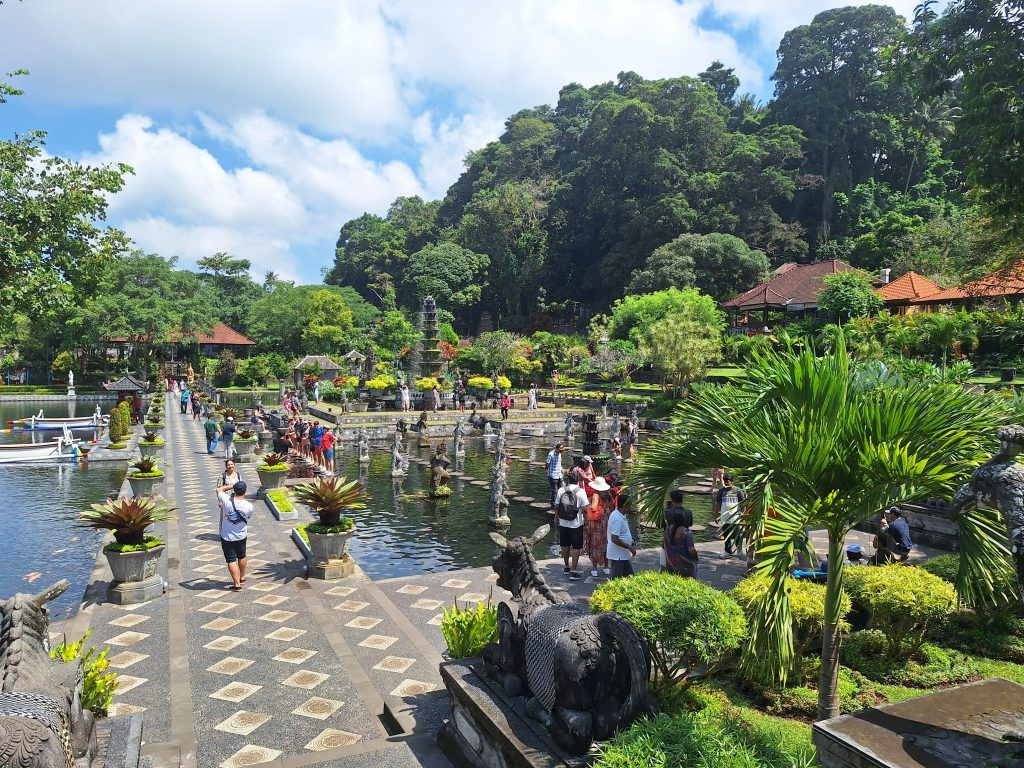
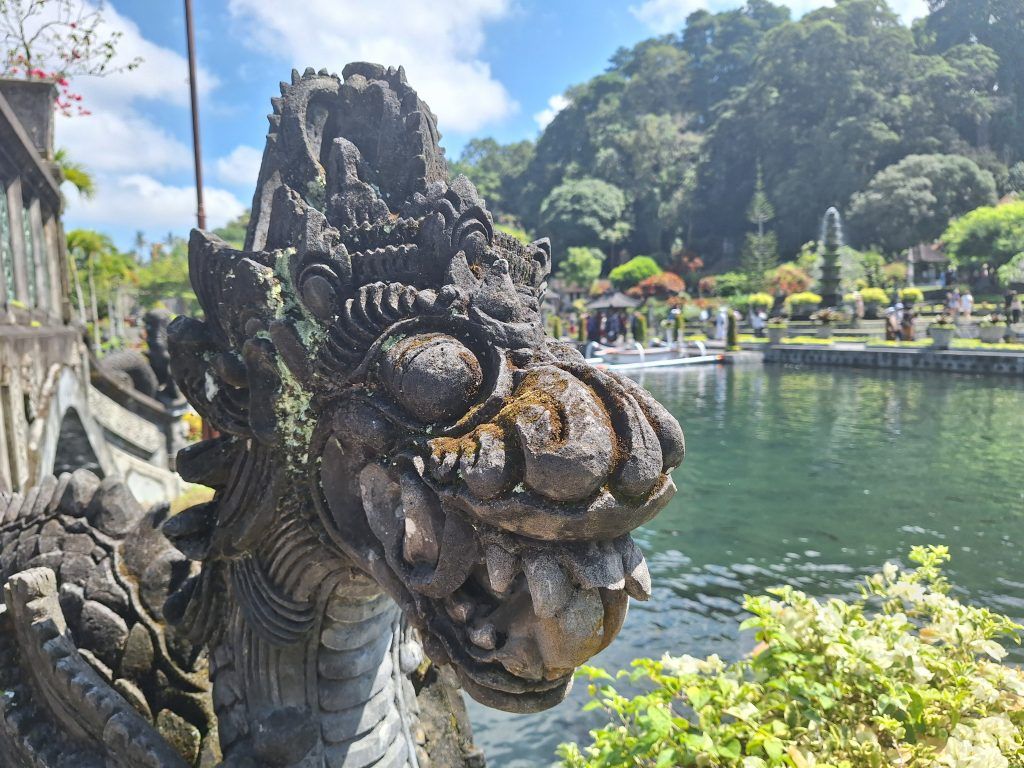
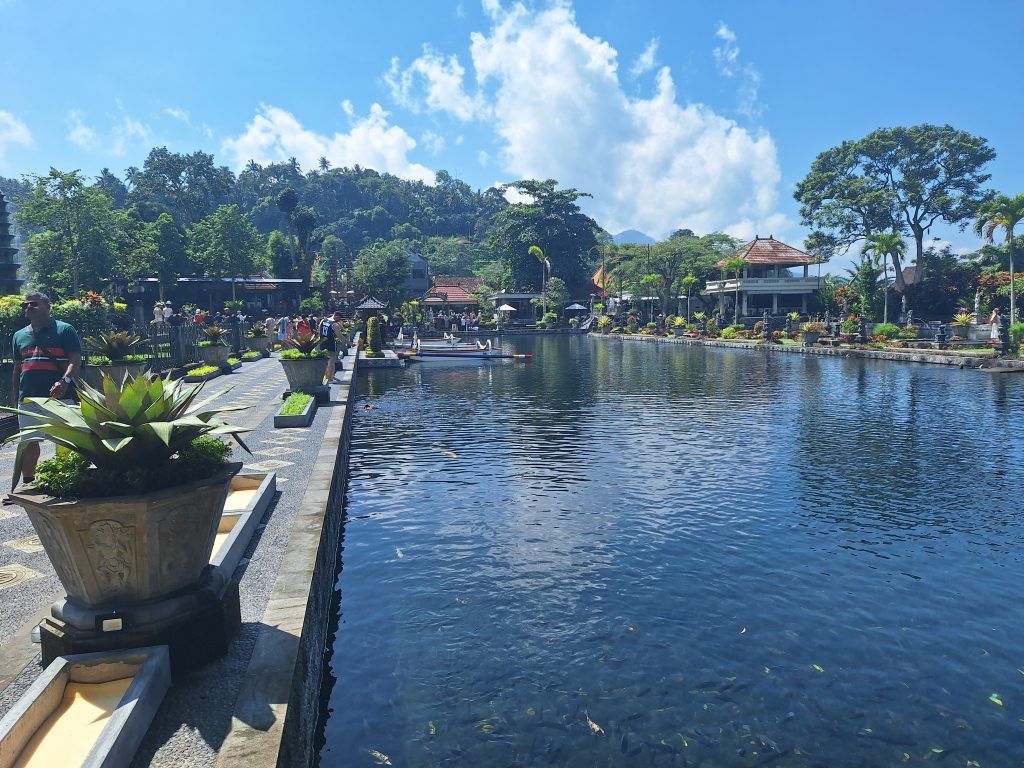
One of the views on the ride to the temple.
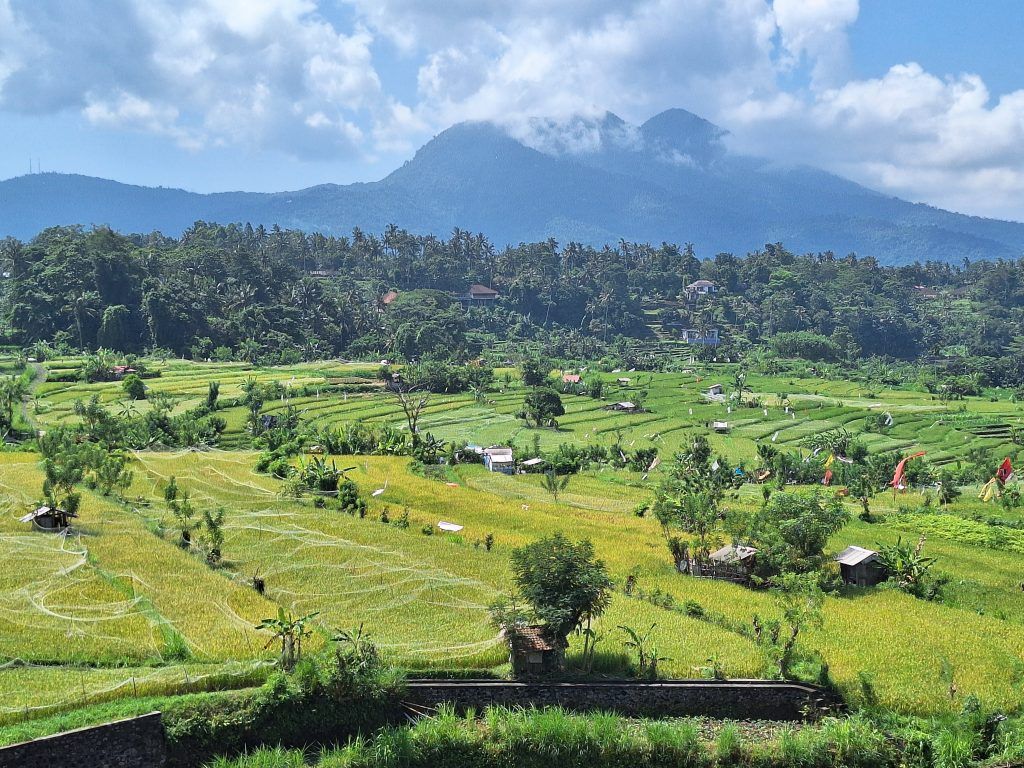
A view of the beach in front of my guesthouse.
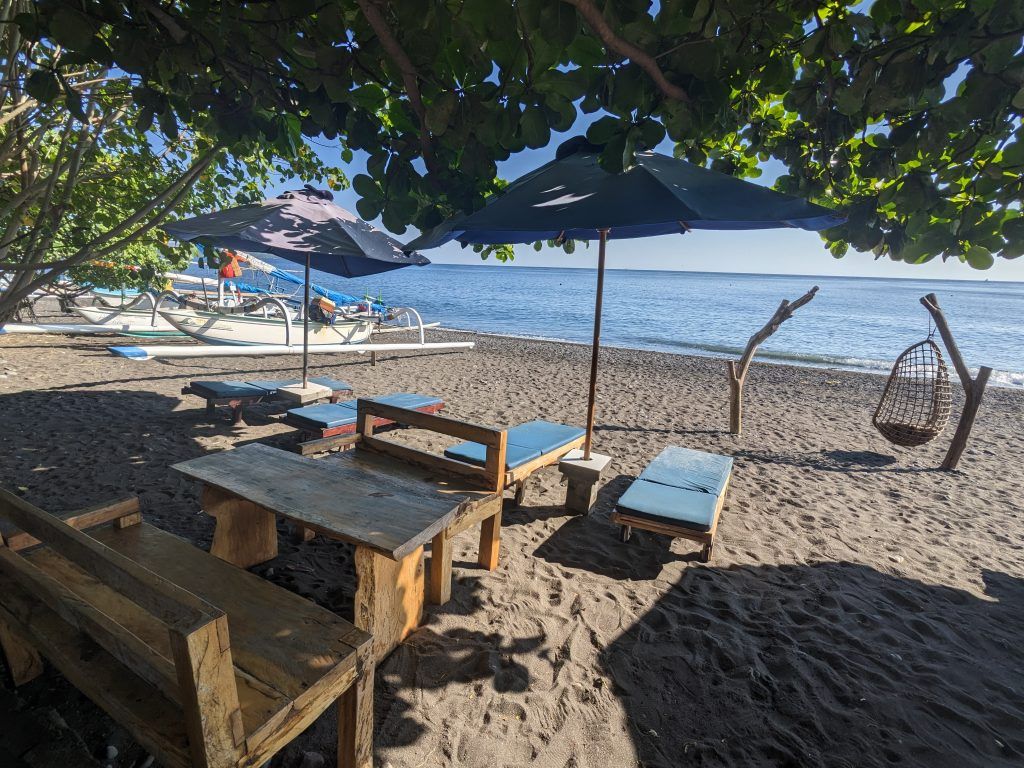
I had another beautiful Bali guesthouse room in Amed, with a typical huge Balinese bathroom.
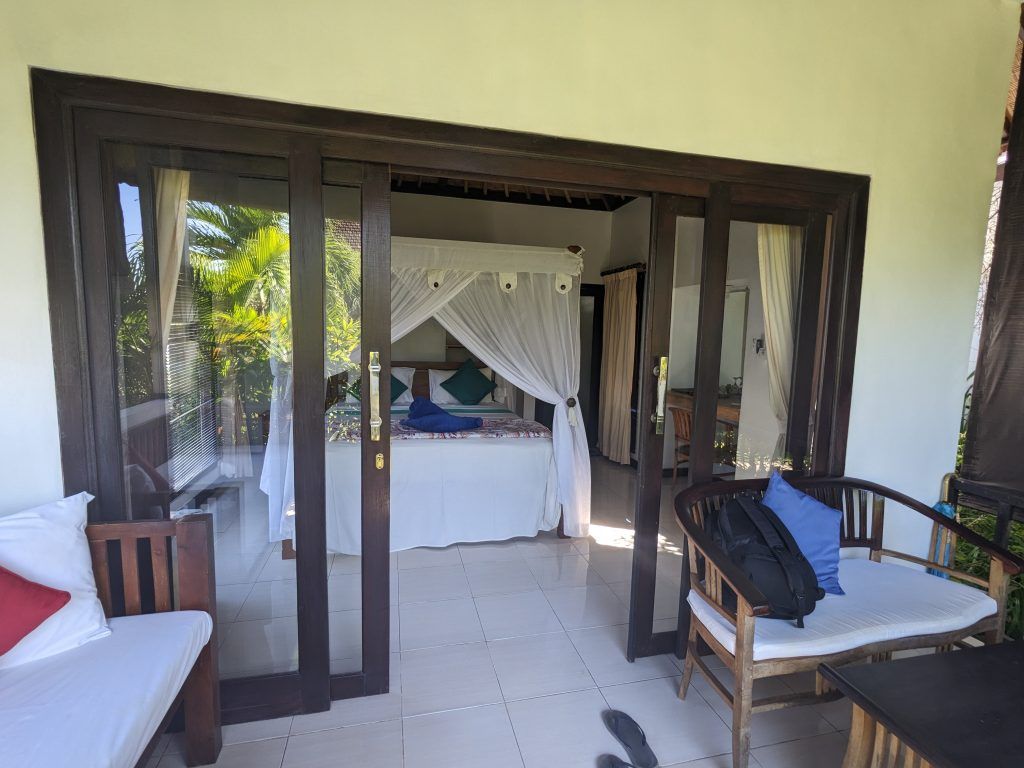
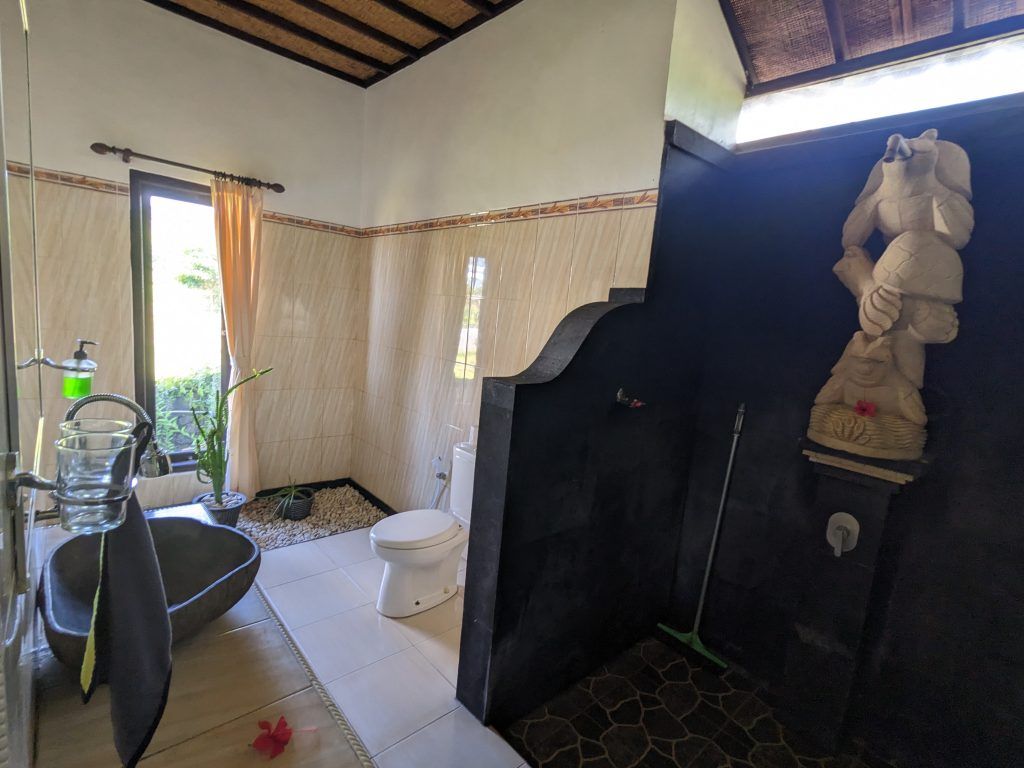
The view from outside my front door.
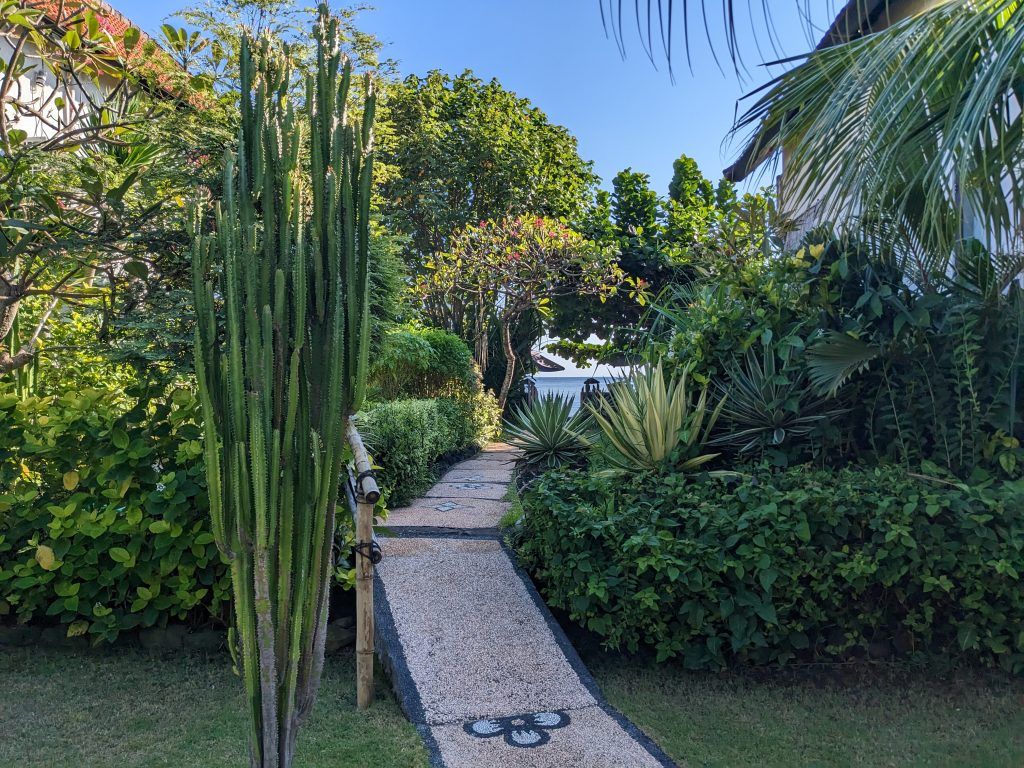
The view of Mount Agung from my porch.
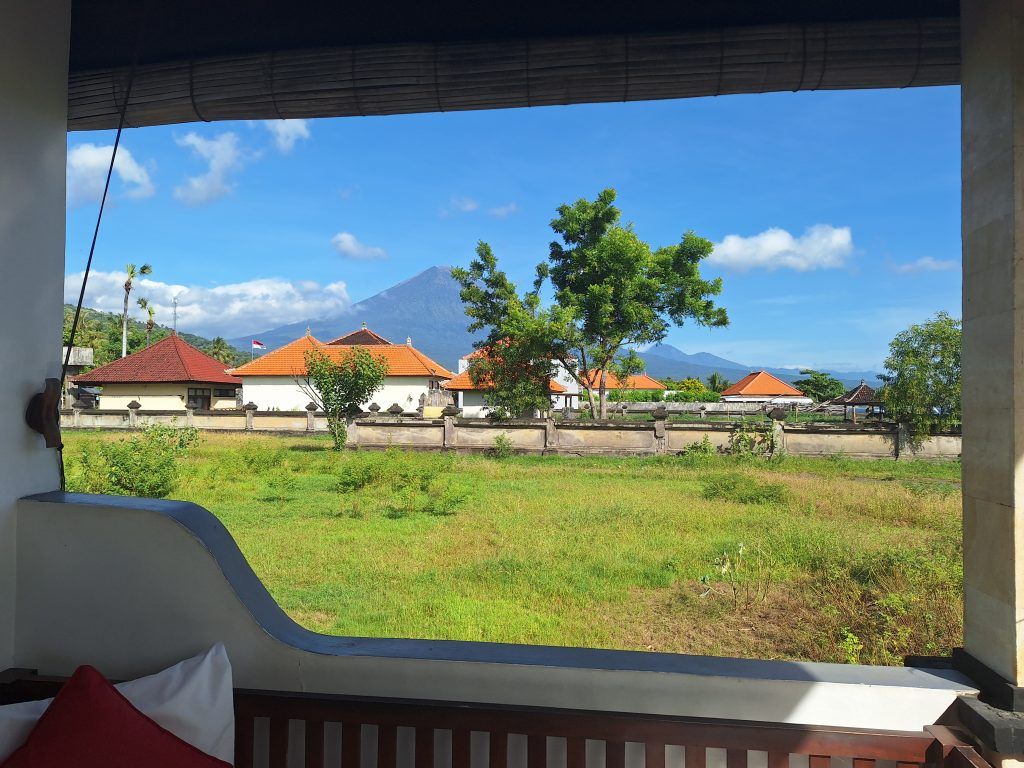
The second time I stayed in Amed I was in a bit more modest, but still nice, guesthouse with an inside bedroom and a partially outside kitchen and working area, with a nice pool in the middle.
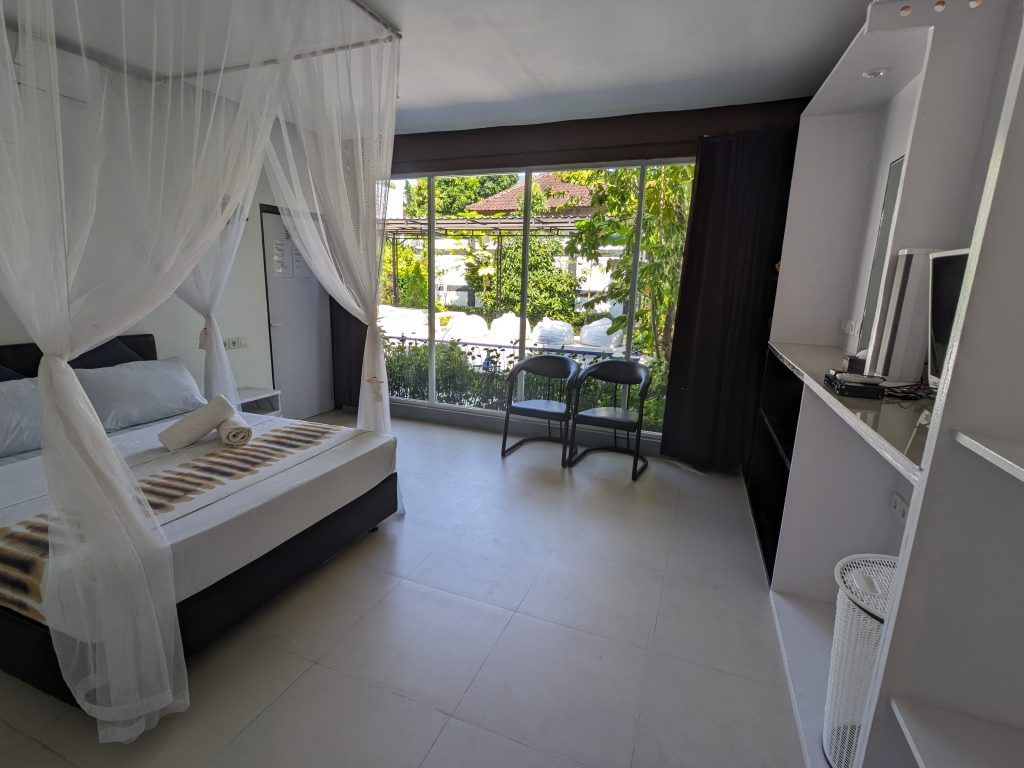
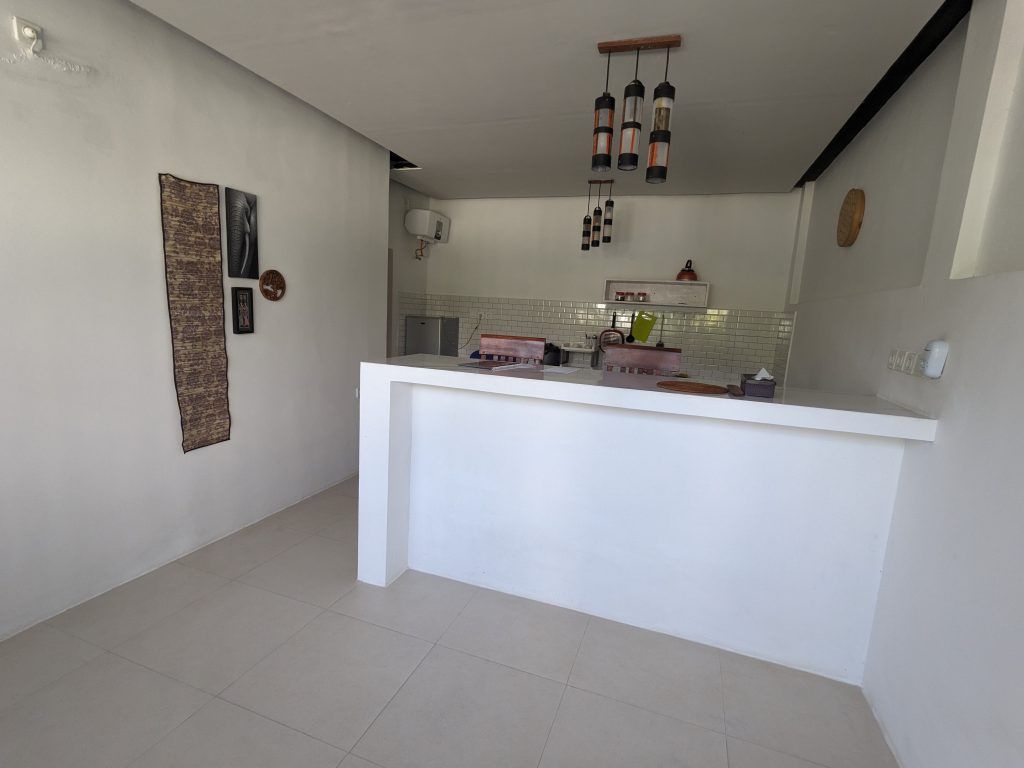
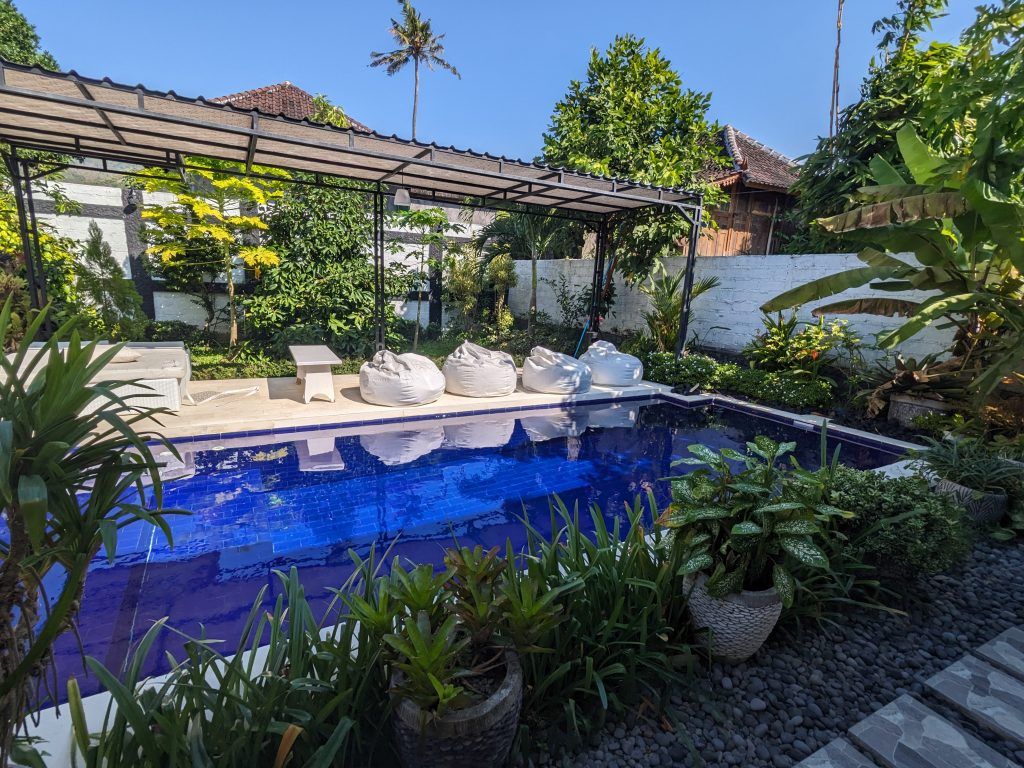
Nusa Lembongan
Nusa Lembongan is a small island about a 30 minute ferry ride from Bali. It’s a relaxed place with some really nice beaches, a flat landscape and a relaxed vibe. What it’s really known for is excellent scuba diving and some nice, consistent surf breaks. I was able to surf there three days, dive three days and spend my final day tooling around on a scooter.
There are a number of reef breaks that are extremely tide dependent. The only catch is you need to take a short boat ride out to the reef. Here’s a nice video of what it looks like.
Someone even got a picture of me finishing off a nice, small wave.
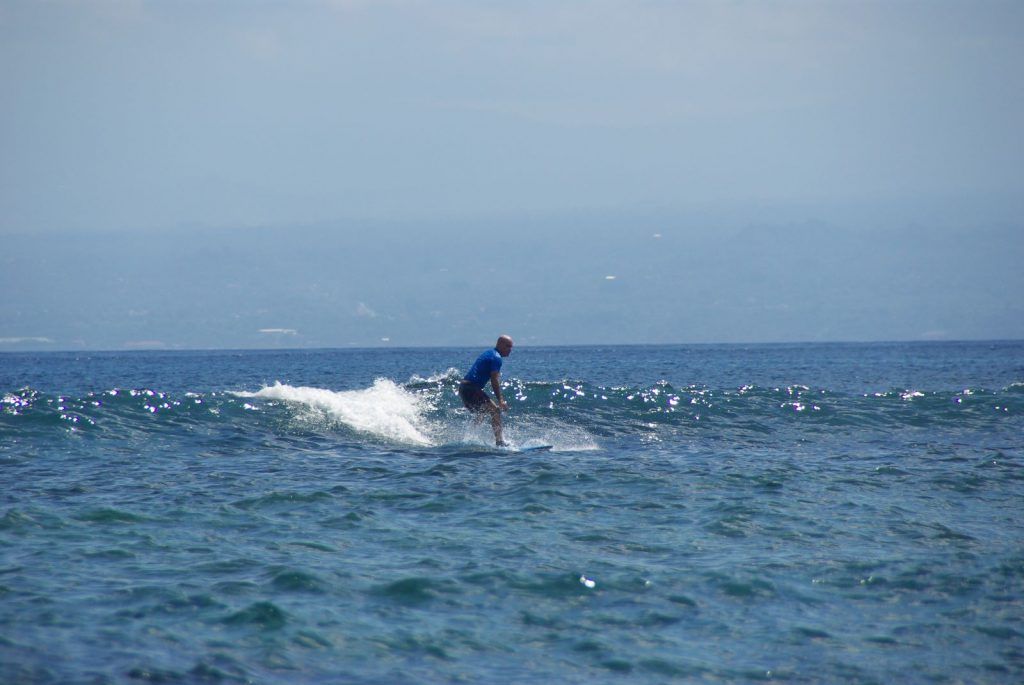
I went out surfing with the wonderfully named Monkey Surf School from the main beach.
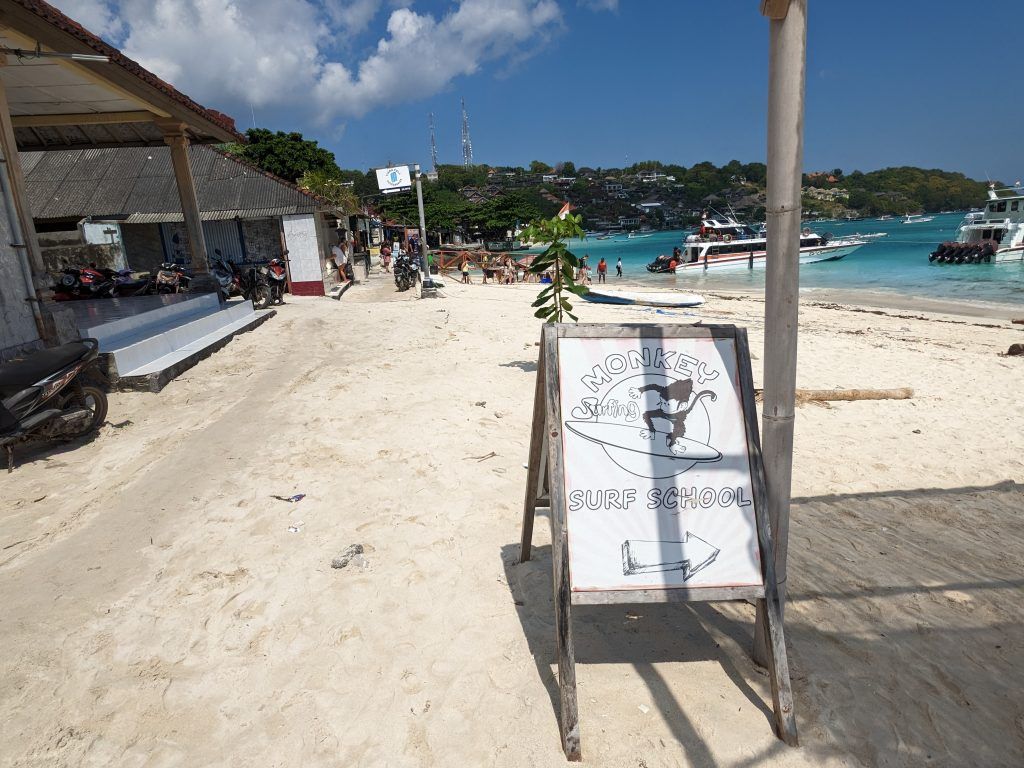
The view of the main beach and from the small hill behind it. The mountains in the background are from Bali.
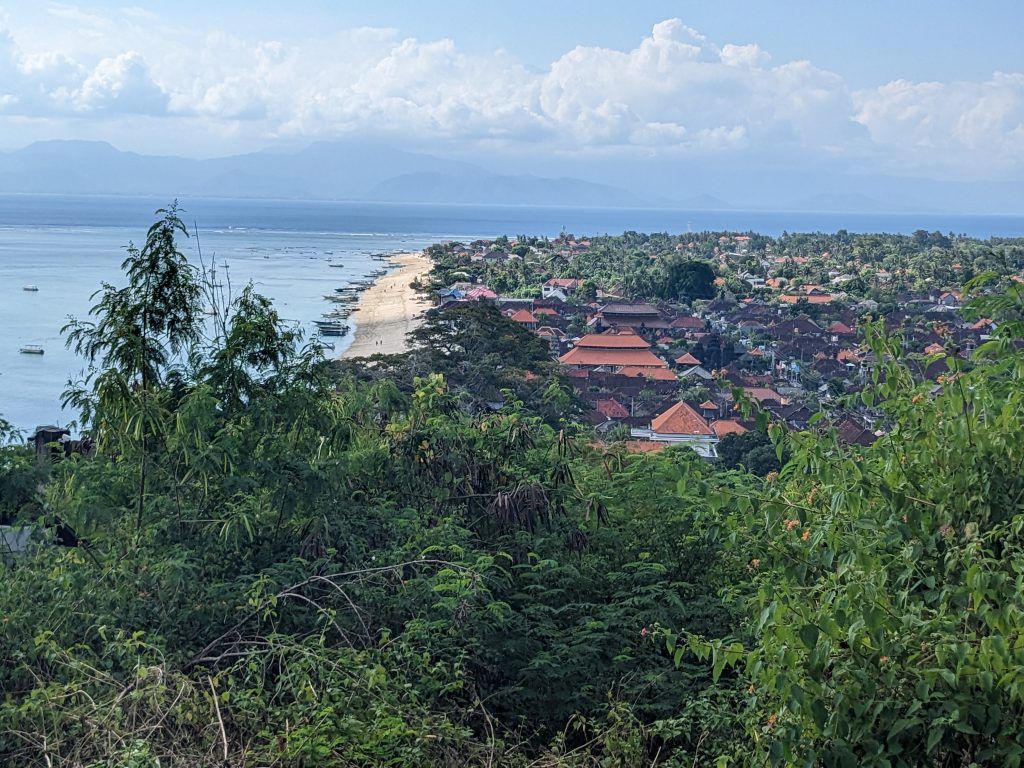
The main street of the village I stayed in.
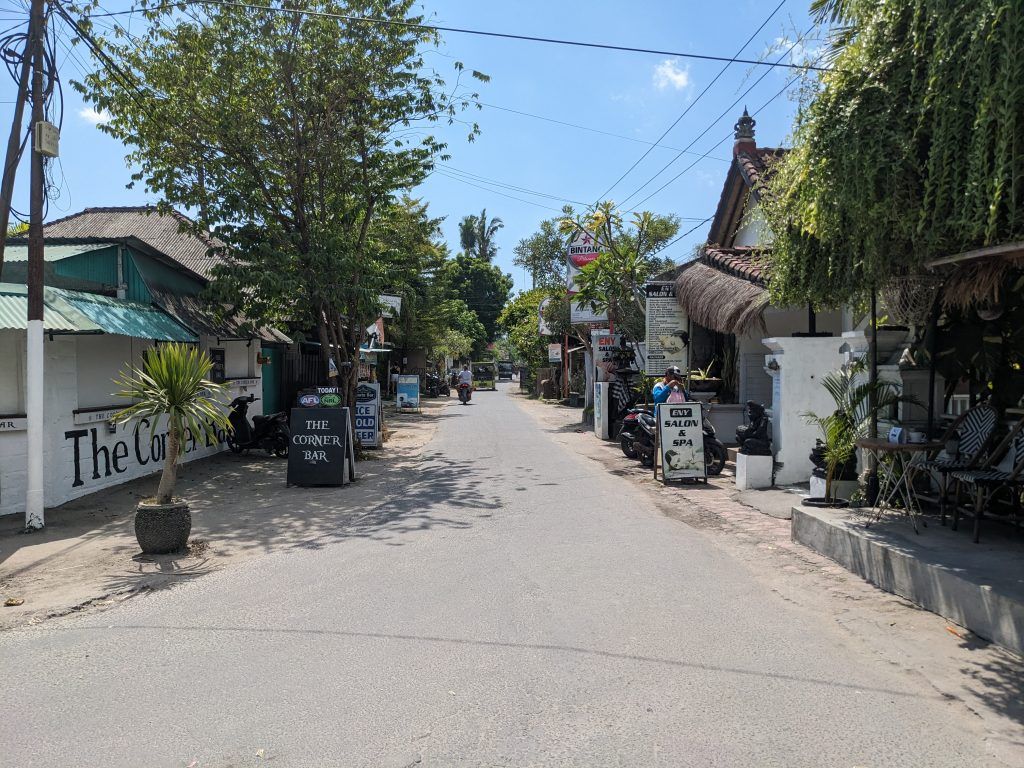
A small temple entranceway around the corner from the surf shop.
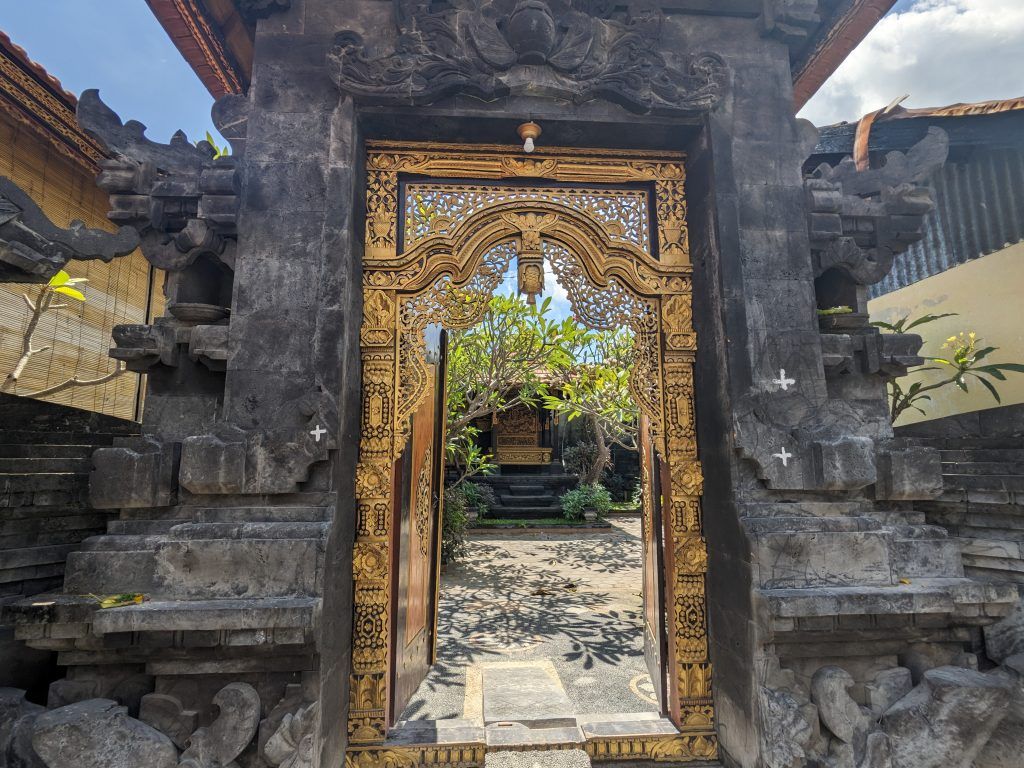
A nice rainbow the morning before one of my dives.
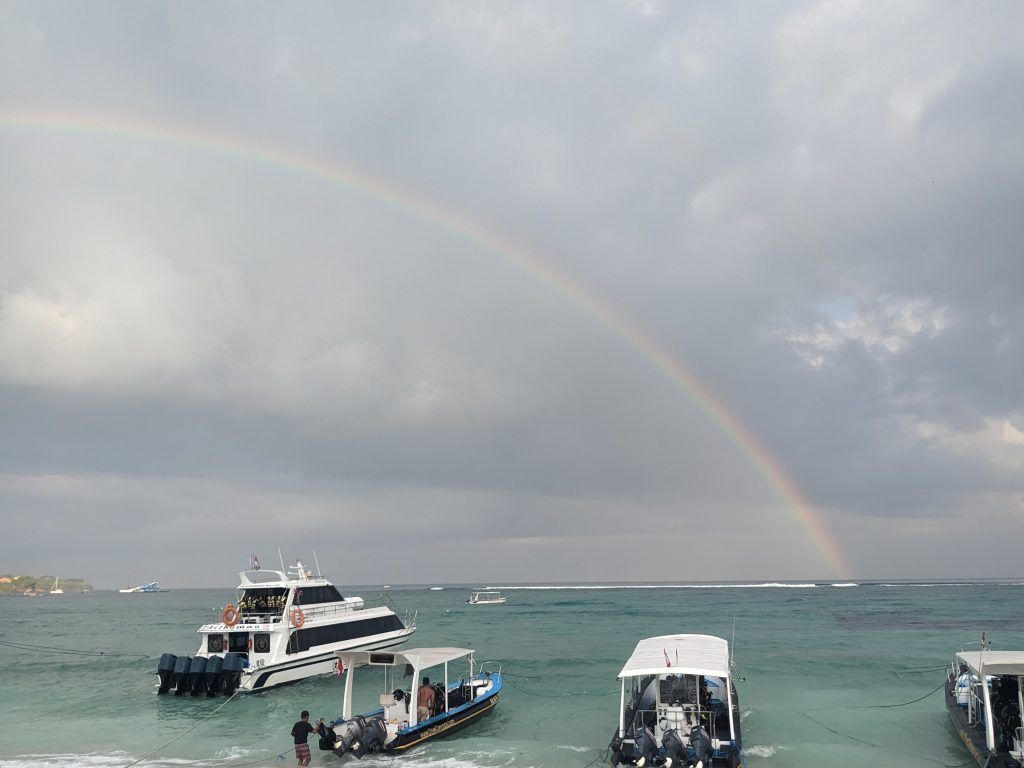
The view of the nearby island of Nusa Penida as we were sailing to one of the dive sites.
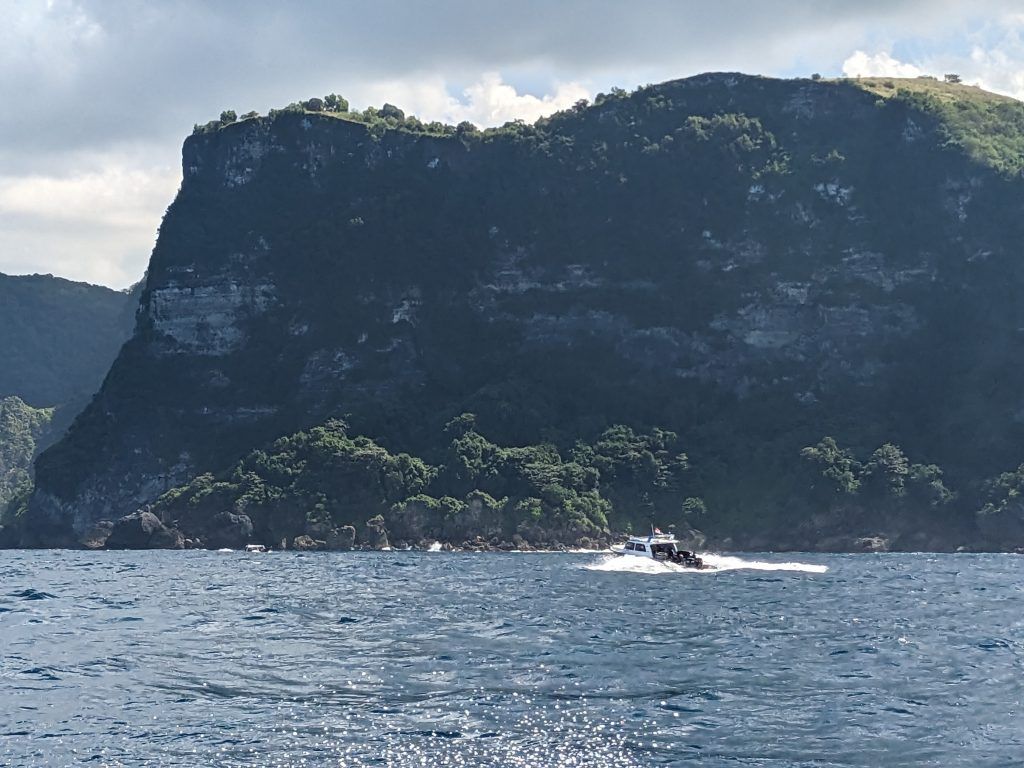
The island itself is rather flat and nondescript, but this is Southeast Asia, so it’s still beautiful.
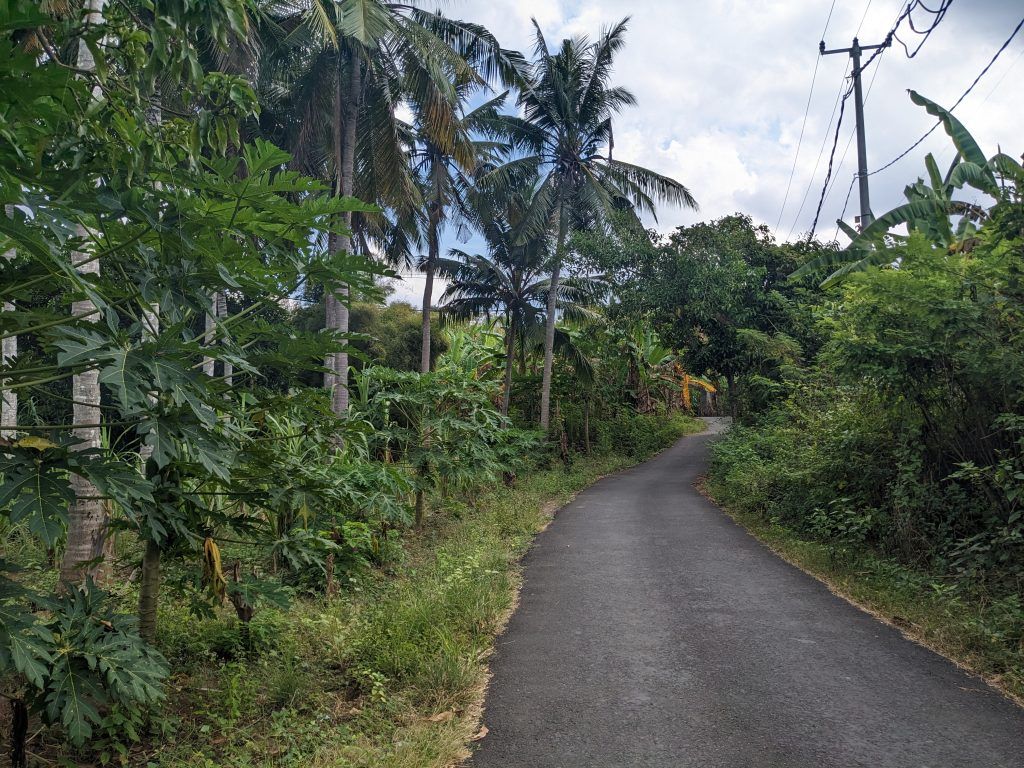
The view from the small nearby island of Nusa Ceningan looking backwards towards the much larger Nusa Penida.
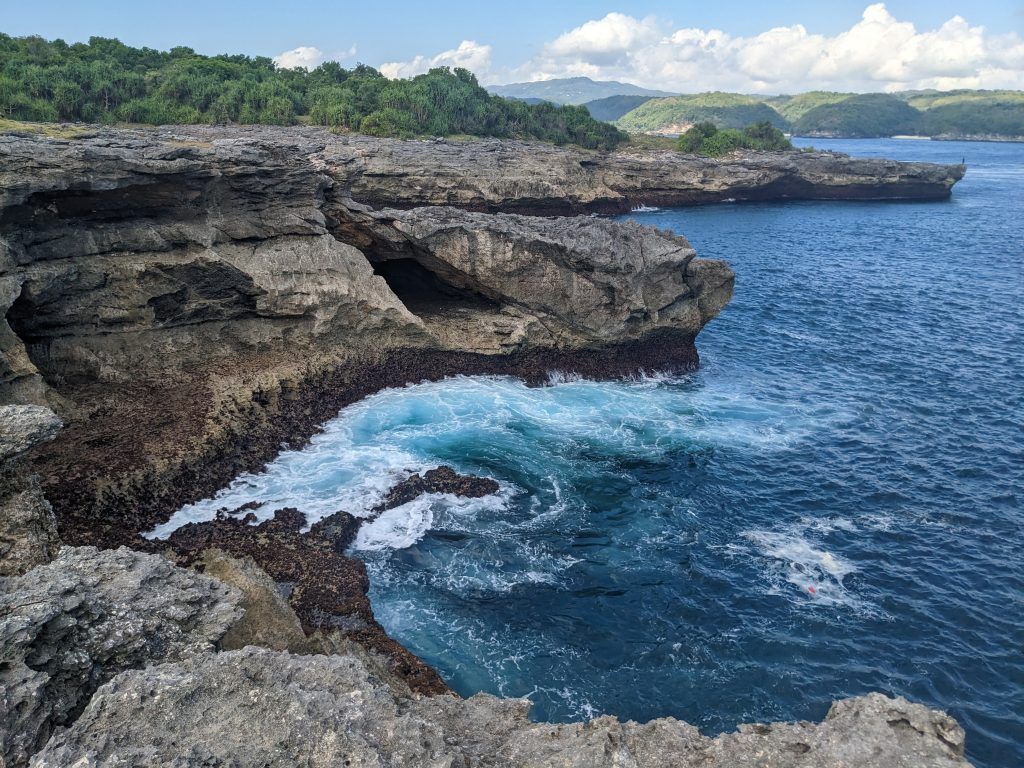
I stayed in another really nice, inexpensive four unit guesthouse in Lembongan.
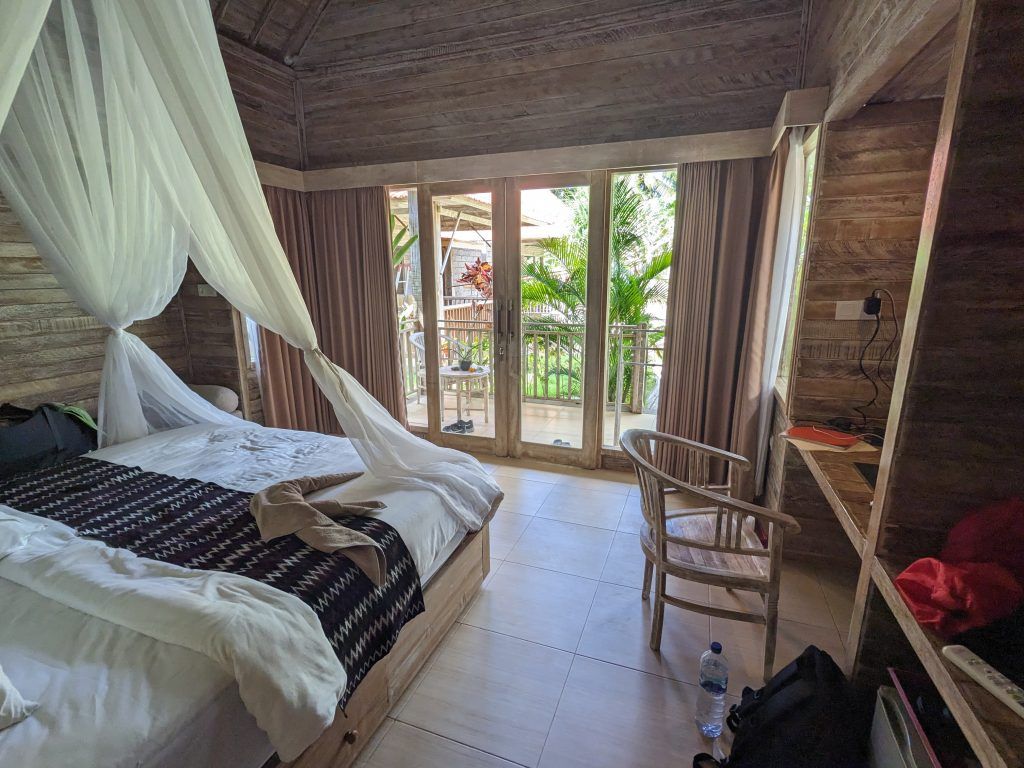
Pemuteran
Pemuteran is a small fishing village in the Northwest coast of Bali. It’s an incredibly peacefull place and is known primarily for its world class scuba diving at the nearby island of Palau Mengangan. I did two dives there, which I documented in my other Bali blog post.
The walk down the small road to my guesthouse.
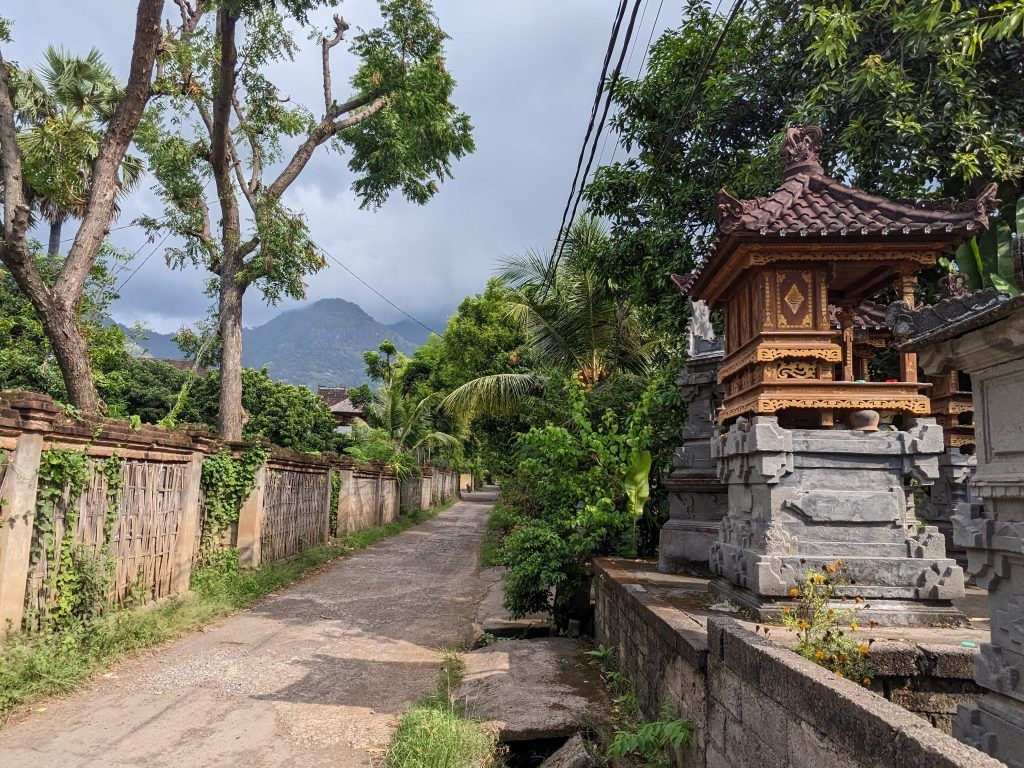
The main street of this small village.
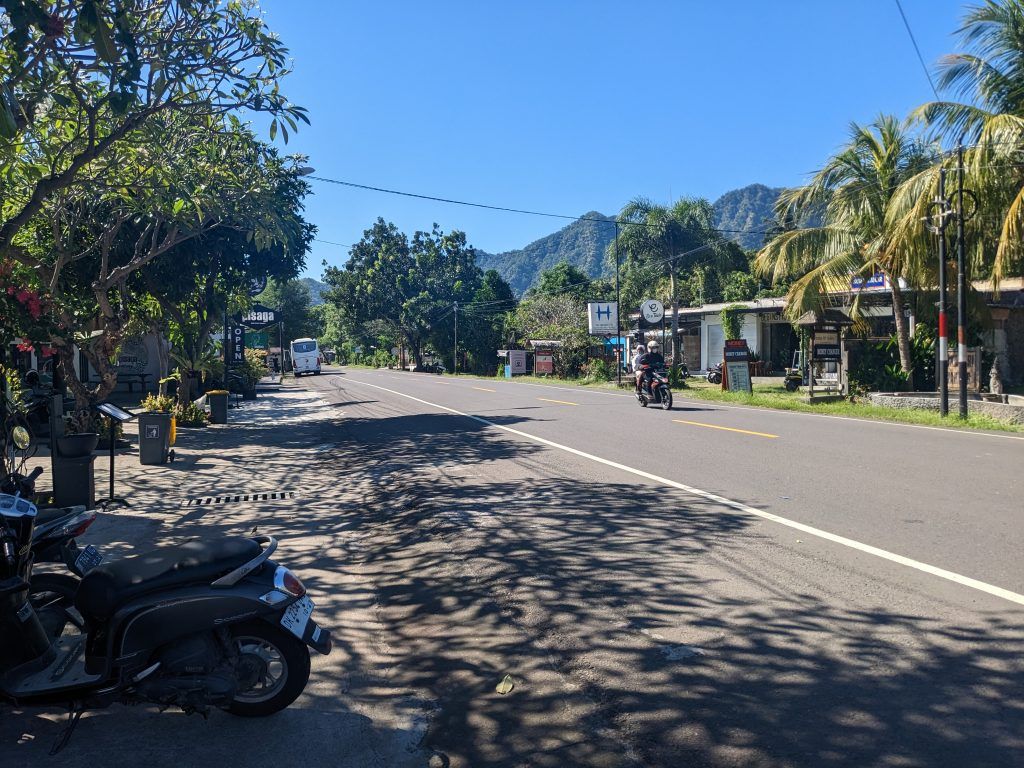
The Temples
What Pemuteran is also known for is a number of Hindu temples with incredible water views.
The Tirtha Segara Rupek Temple is not mentioned in any guidebooks or blogs, I just saw it on Google Maps with some nice reviews, and it looked like a nice 40-50 minute scooter ride from Pematuran. So I went there. The drive was amazing and the temple was a nice treat. It’s a small Hindu temple on the very west side of Bali that has a view of the across the way of Java.
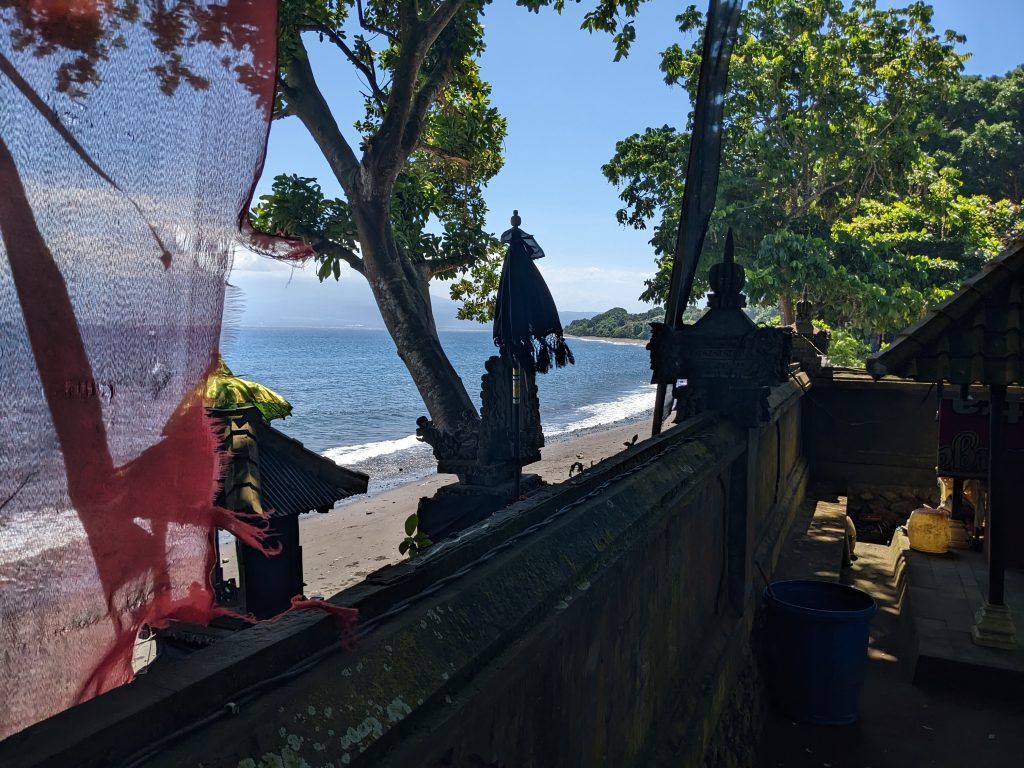
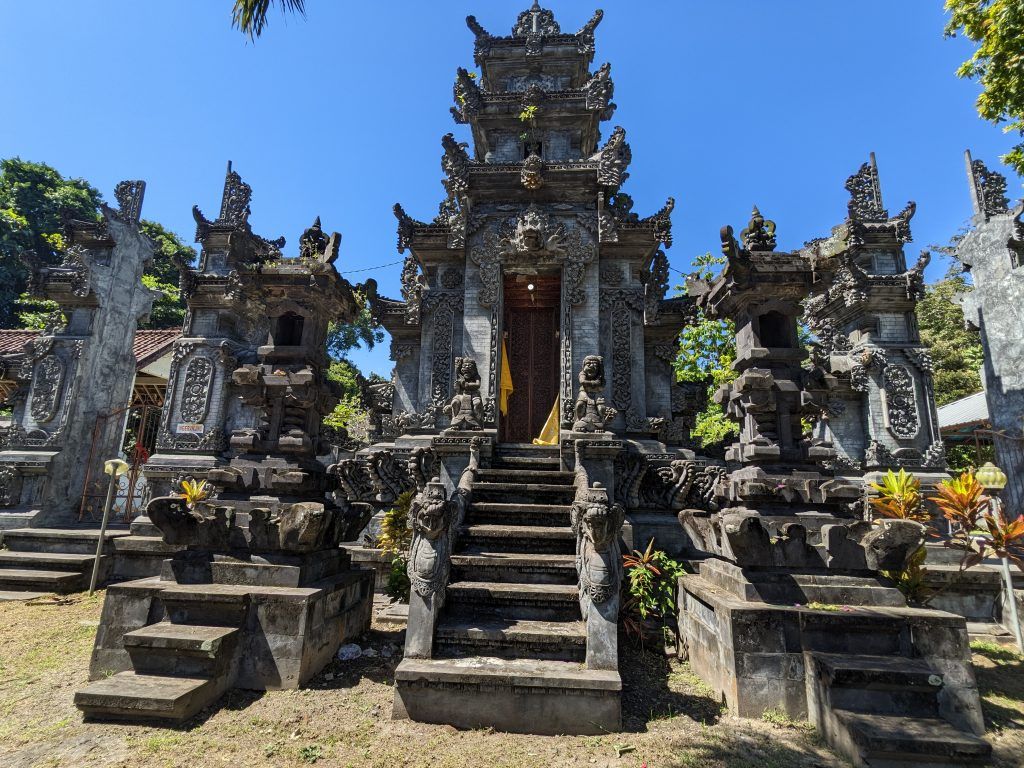
Pura Pulaki is a temple across from the beach just outside of Pemuteran. It was built 1489 and it’s known for the many monkeys running rampant through the grounds. While I was there a few groups of worshippers came through and each group gave some money to some local kids with sticks that would chase the monkeys away. Otherwise they might try to grab the offerings the groups were bringing up to the main temple.
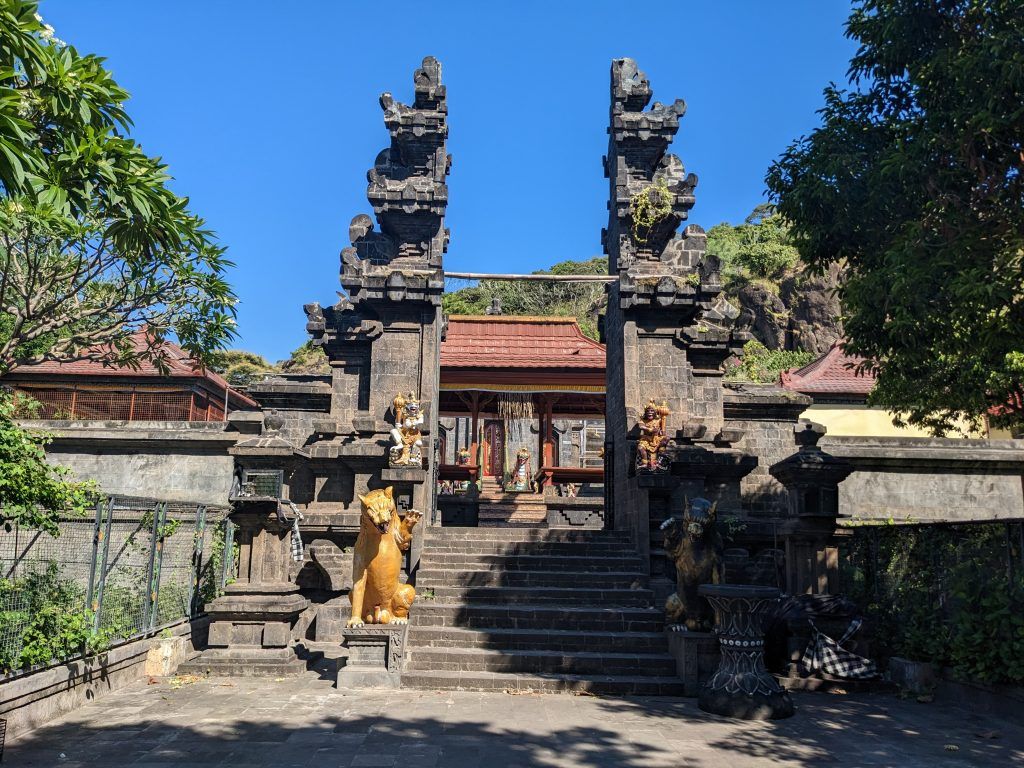
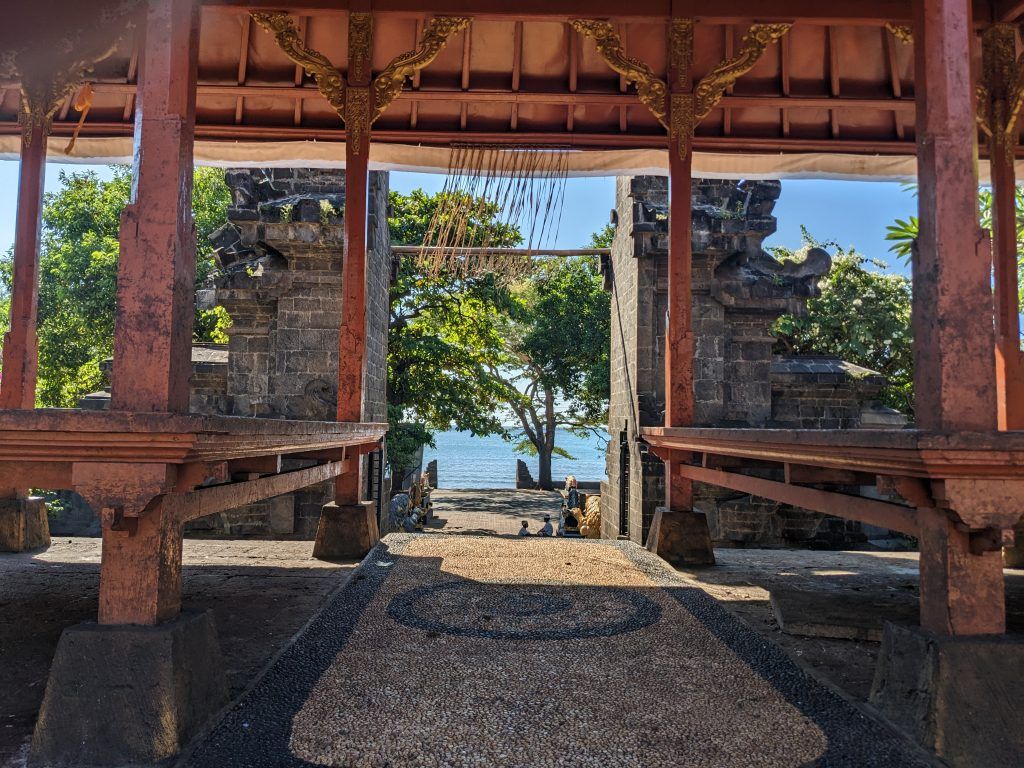
The monkeys playing Frogger as they crossed the road, dodging the scooter traffic between the two temples.
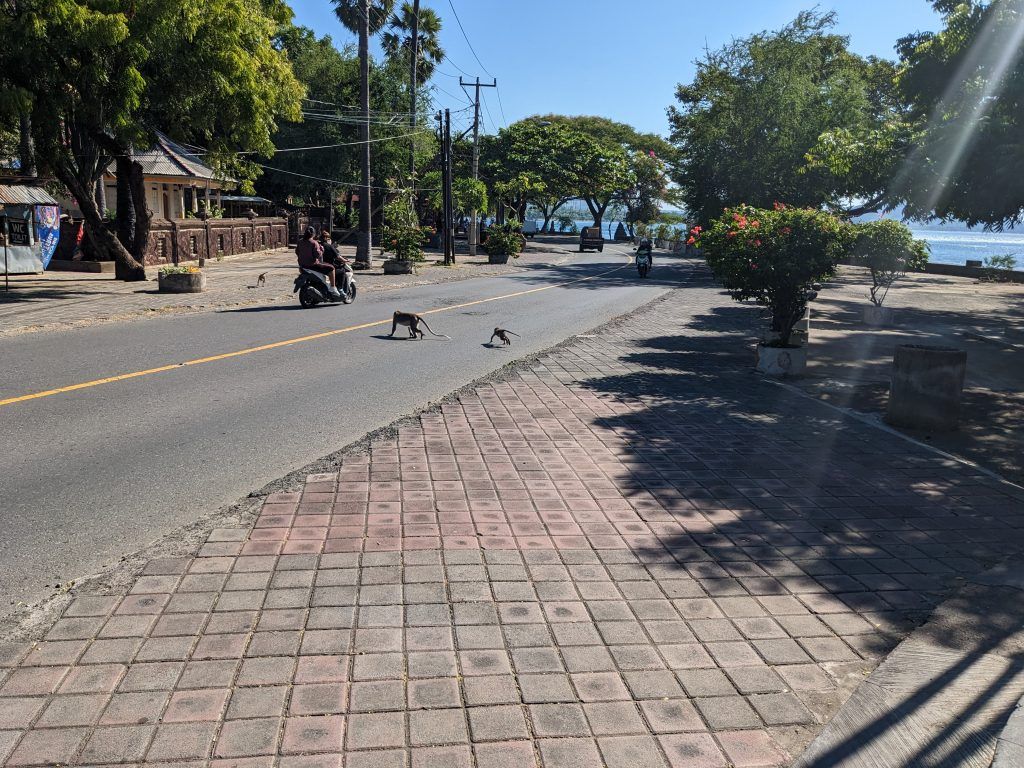
Pura Pabean is just across the road from Pulaki on a small hill that overlooks the sea. It’s a nice little temple in an incredibly beautiful setting.
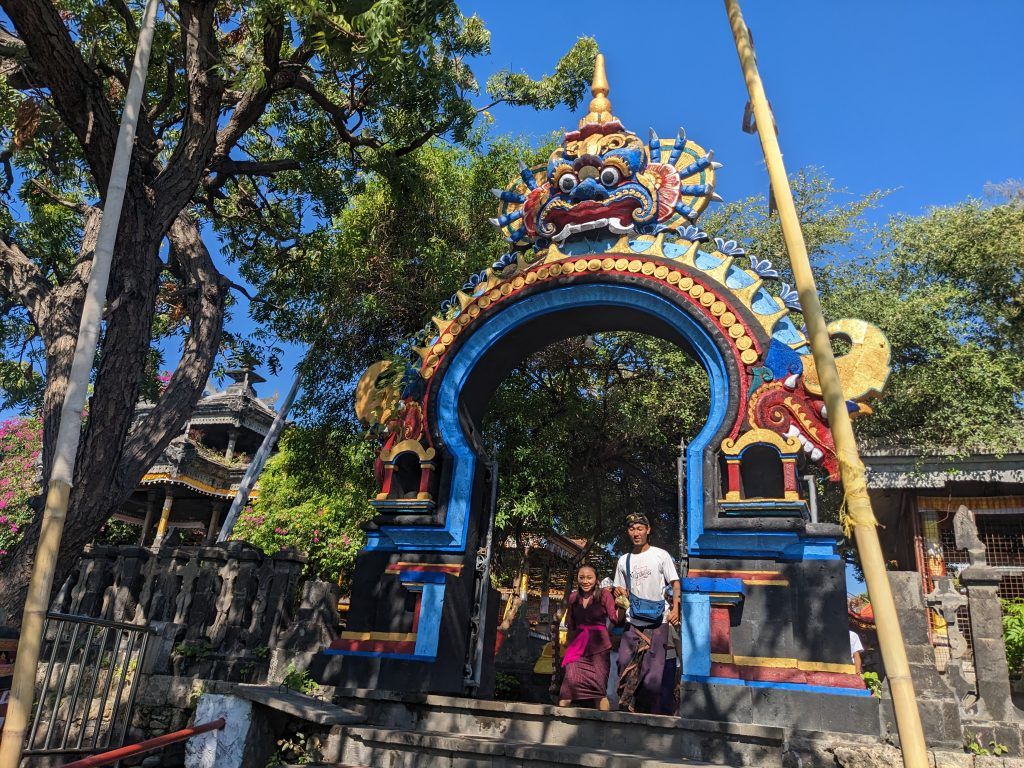
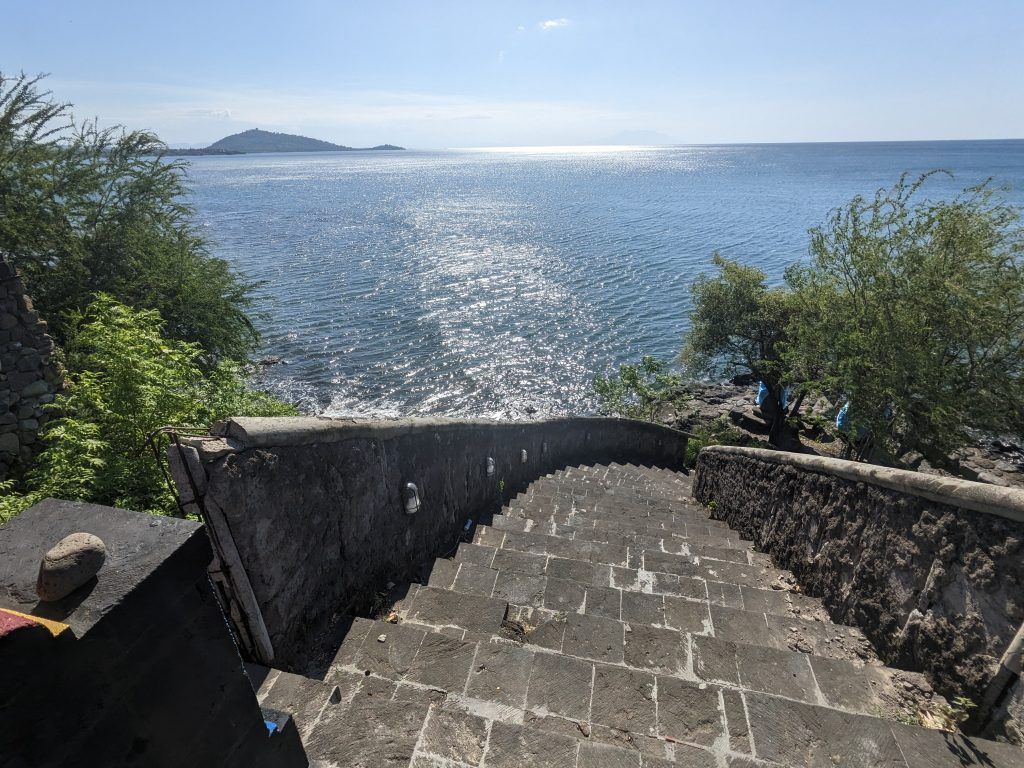
Pura Melanting is a beautiful Hindu temple set inside the hills a little east of Pemuteran. The walls of the temple are decorated with statues and scenes from Hindu mythology, as well as depictions of local Balinese culture. It was estimated to have been built in the 14th century and has held up incredibly well over the past six plus centuries.
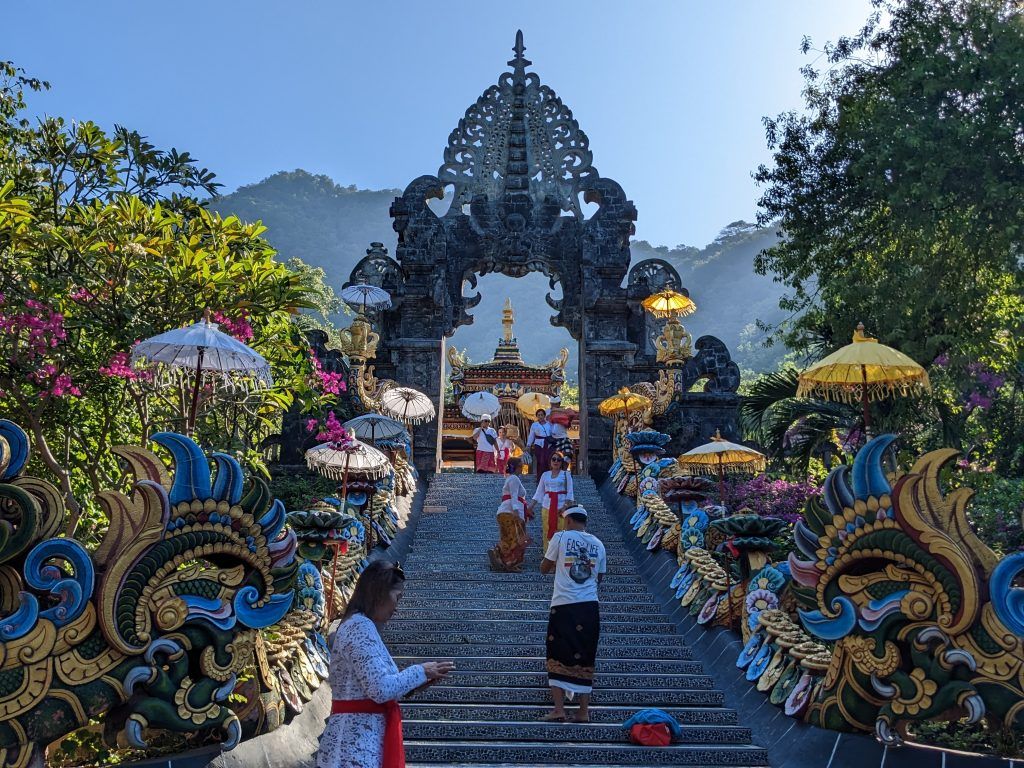
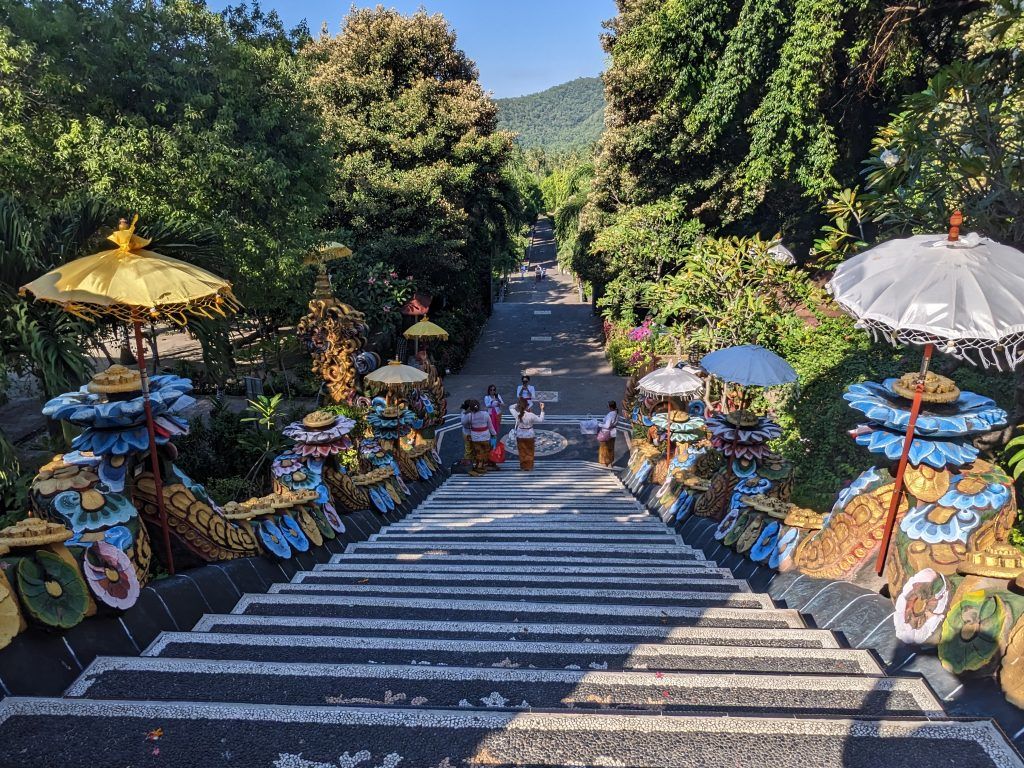
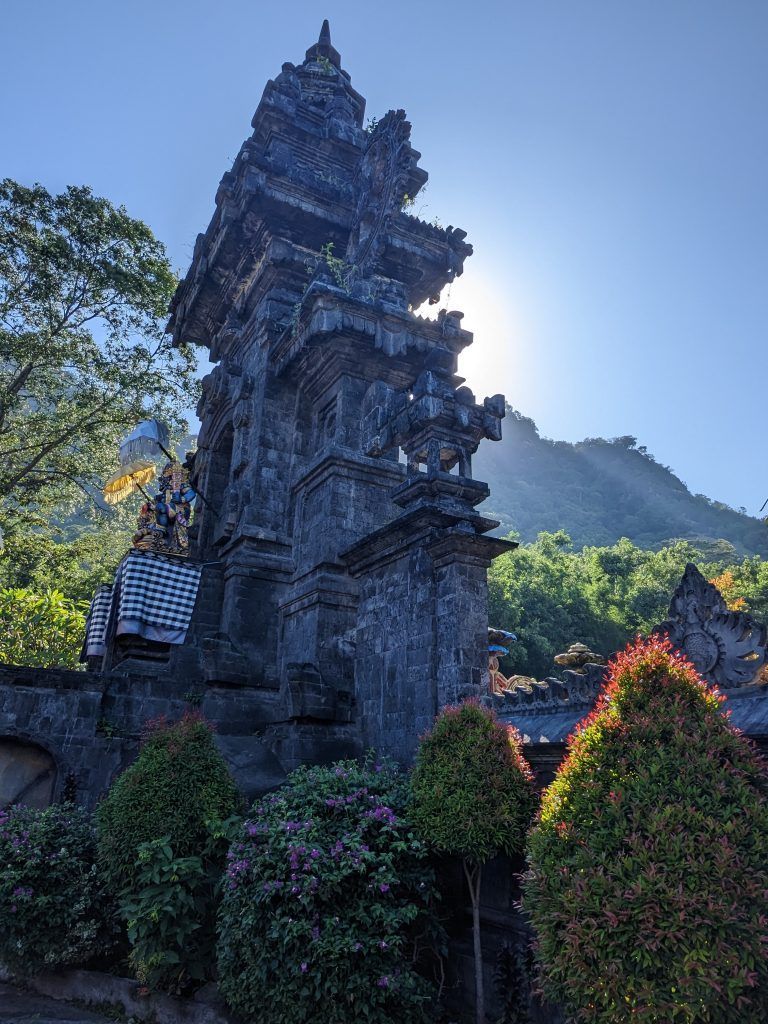
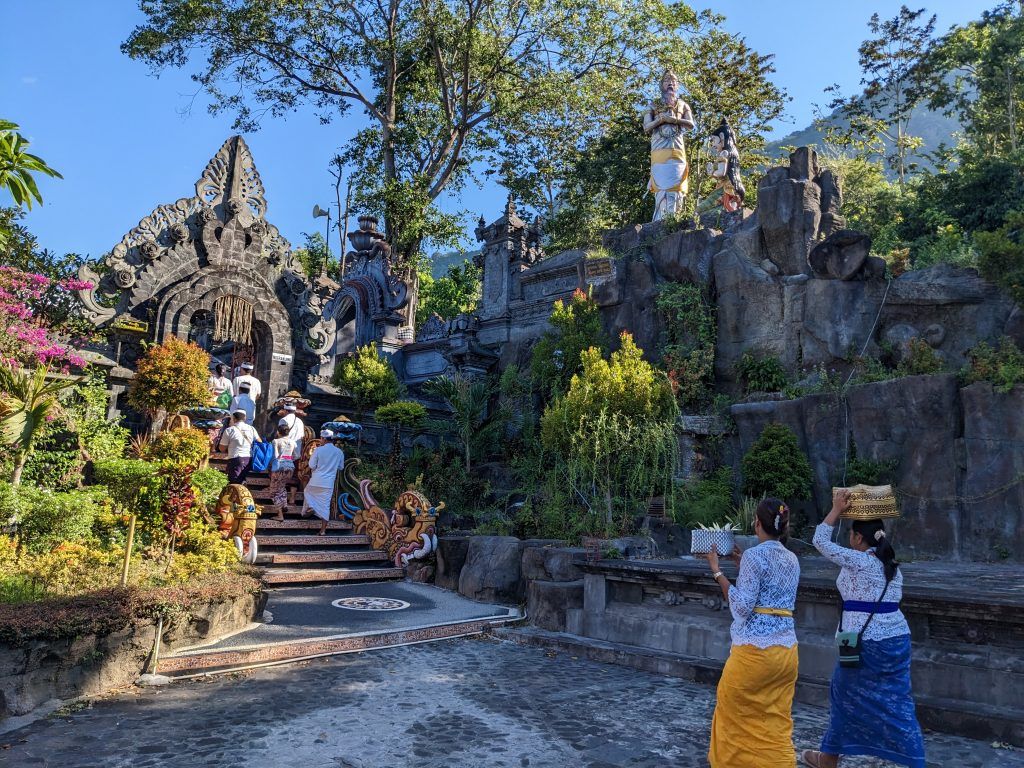
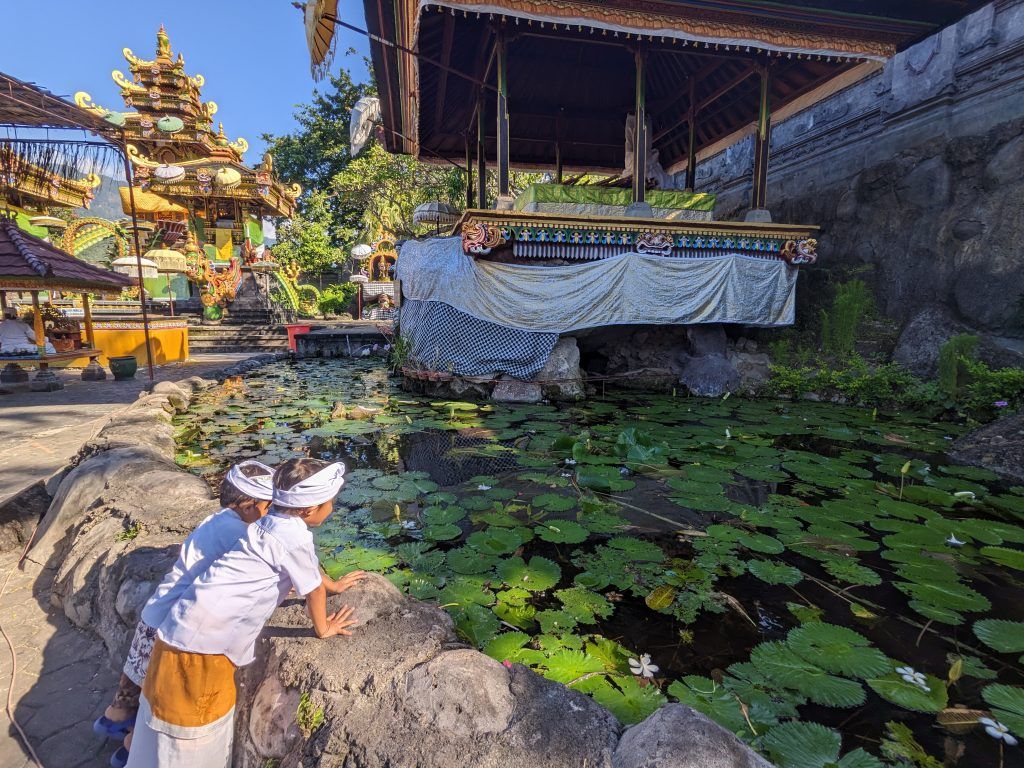
I stayed in a wonderful six room guesthouse with a tranquil pool area and a comfortable large room.
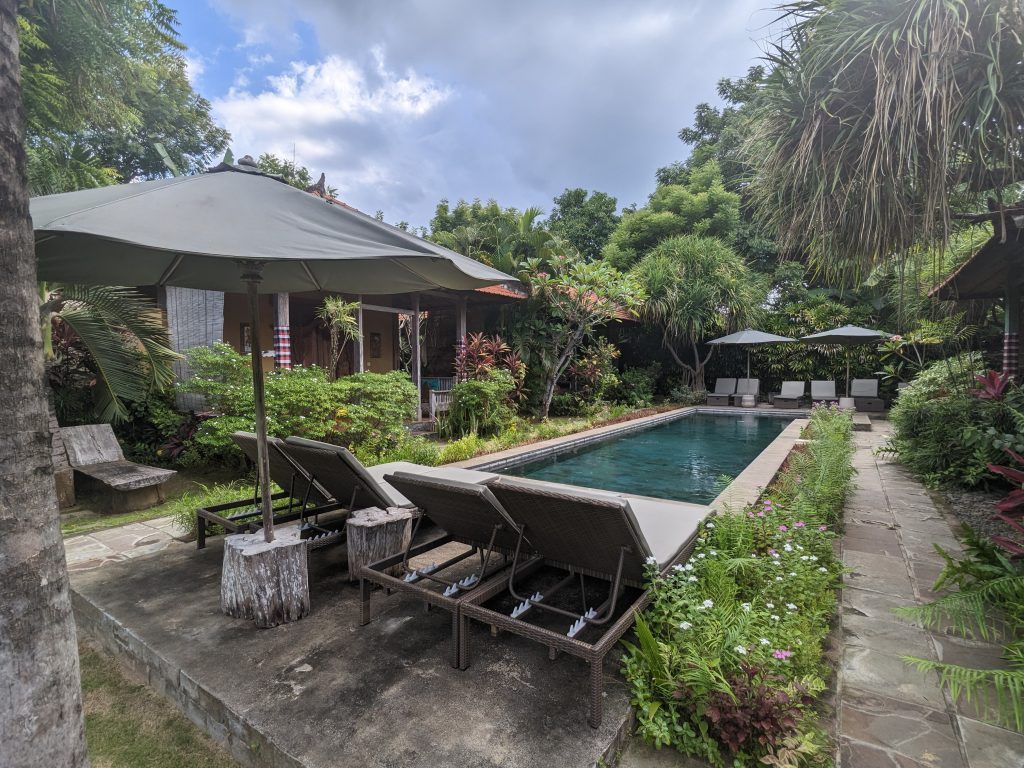
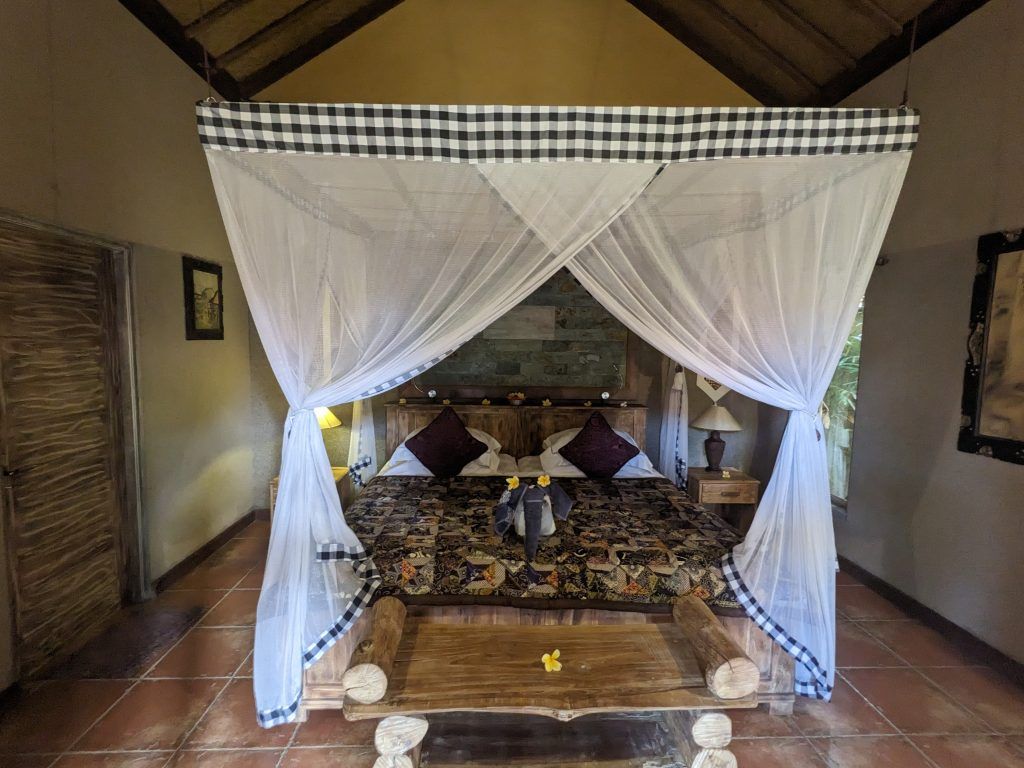
The highlight was the traditional Balinese outdoor bathroom. It was a really nice experience taking a shower at night looking up at the stars.
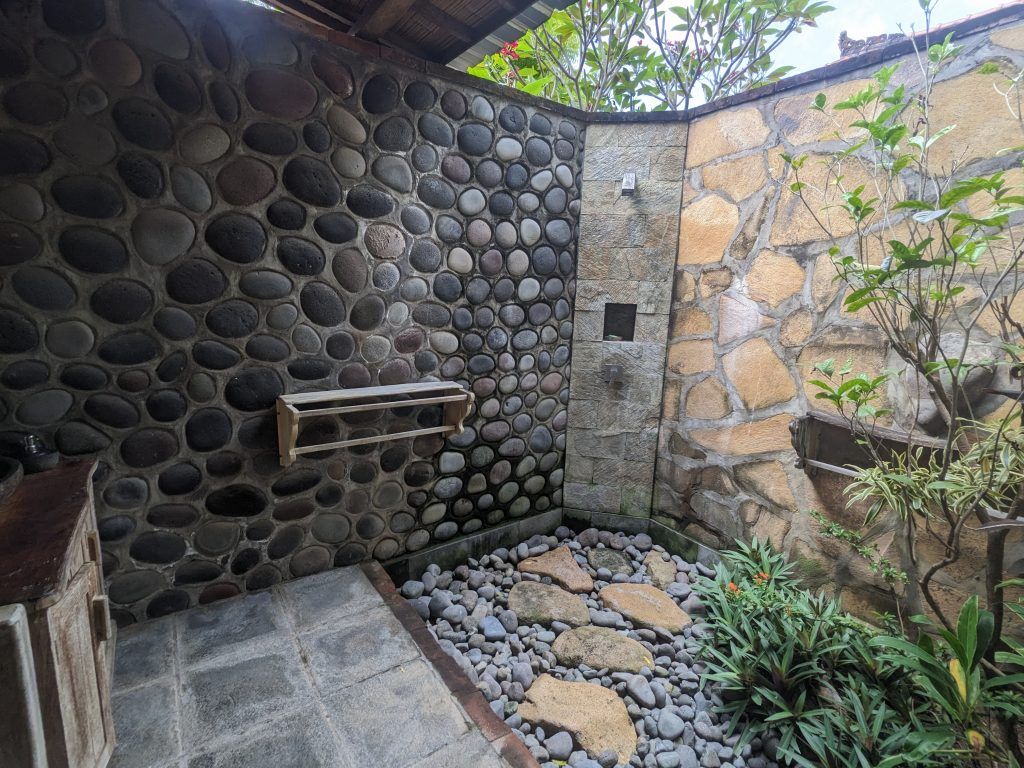
Ubud
Ubud was my favorite place the first time I went to Bali. It was a small town with insanely beautiful rice fields, sublime temples, and a relaxed, spiritual vibe to it. Unfortunately its fame grew after being featured in the film Eat, Pray, Love starring Julia Roberts. It’s now incredibly crowded for its size with a ton of yoga studios, spas, high end restaurants and boutique shops. It’s still a beautiful area, but not nearly as tranquil.
The streets in Ubud are small and they can be packed with both cars and scooters. More than once I had to dodge scooters coming behind me on the sidewalk as they tried to get past traffic blockages.
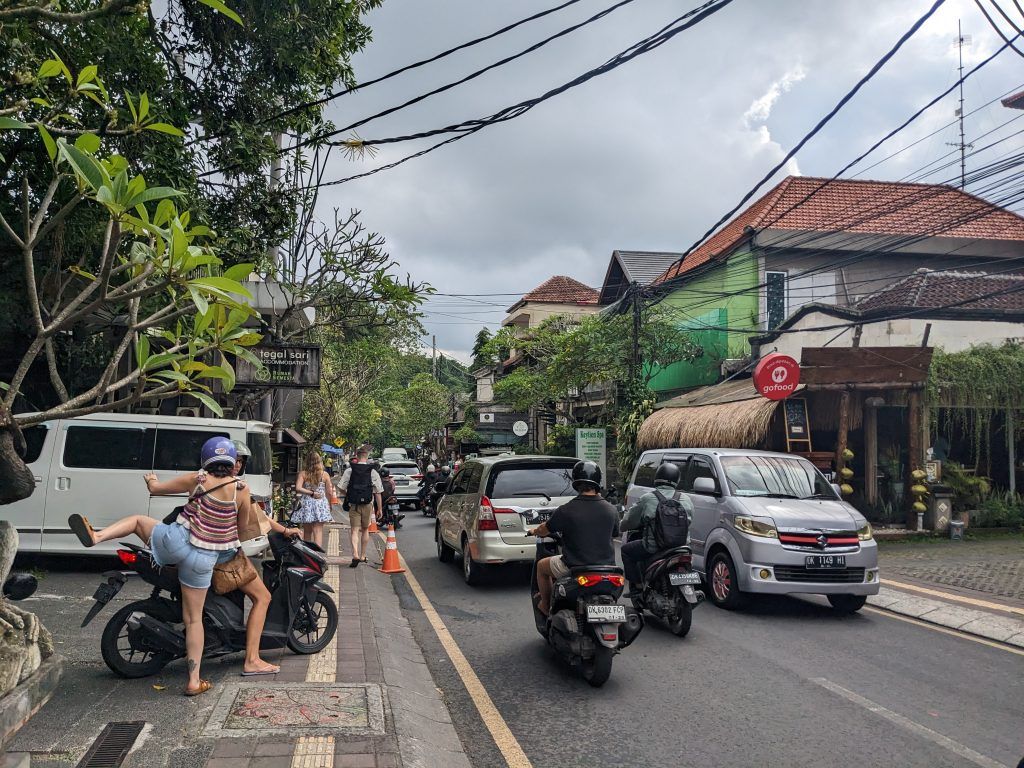
The appropriate juxtaposition of an intricately carved Hindu doorway and a Polo shop in front.
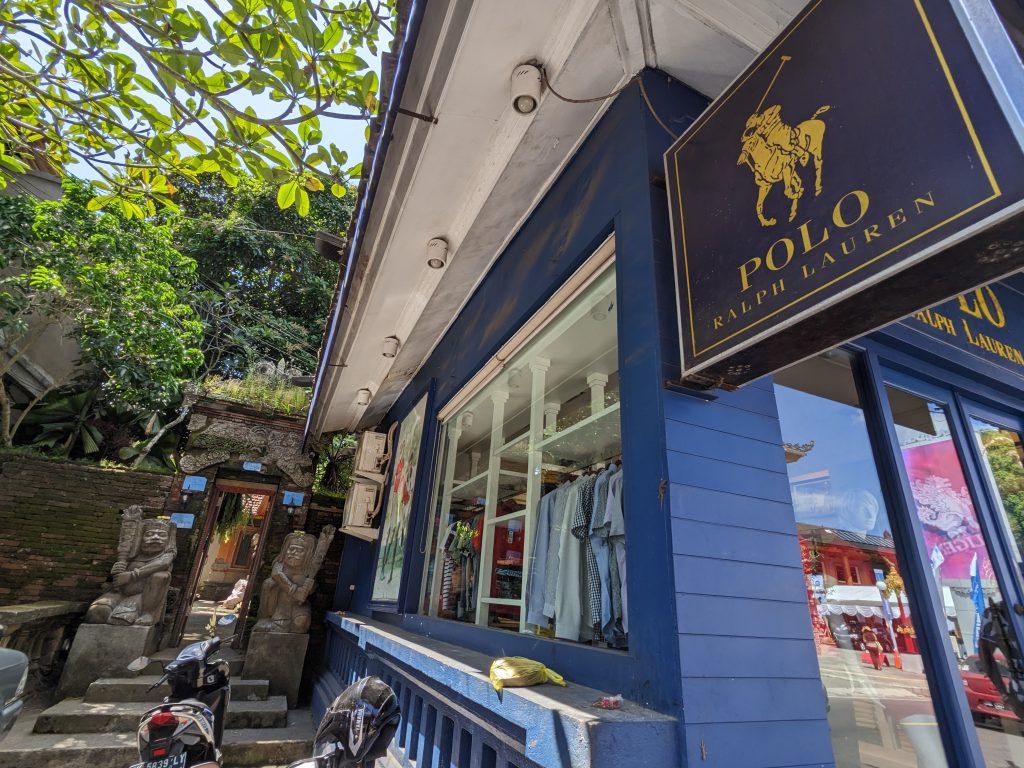
There are numerous beautiful temples and doorways throughout the city. Before they may have been surrounded by rice fields. Now they are mixed in with stores and restaurants.
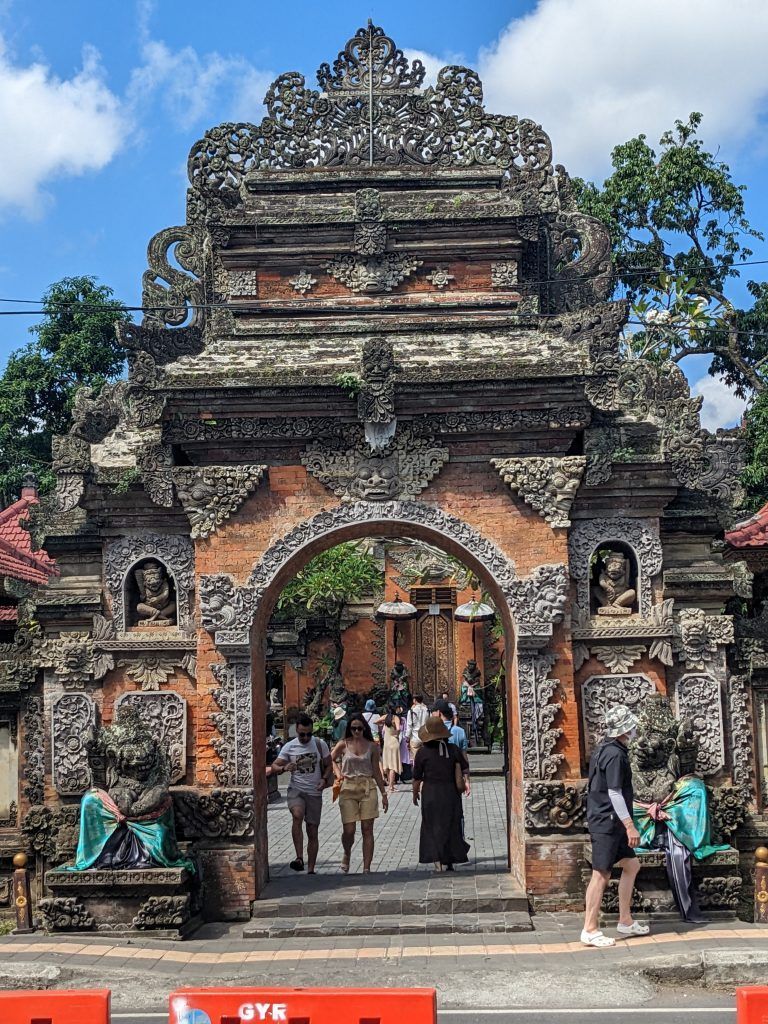
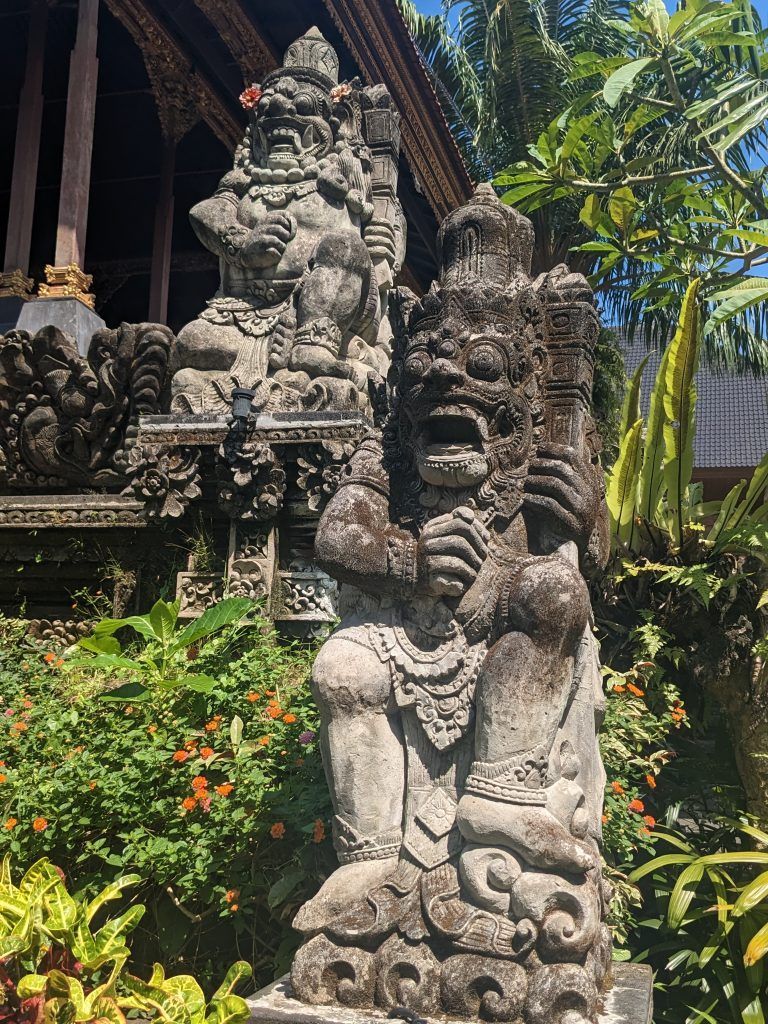
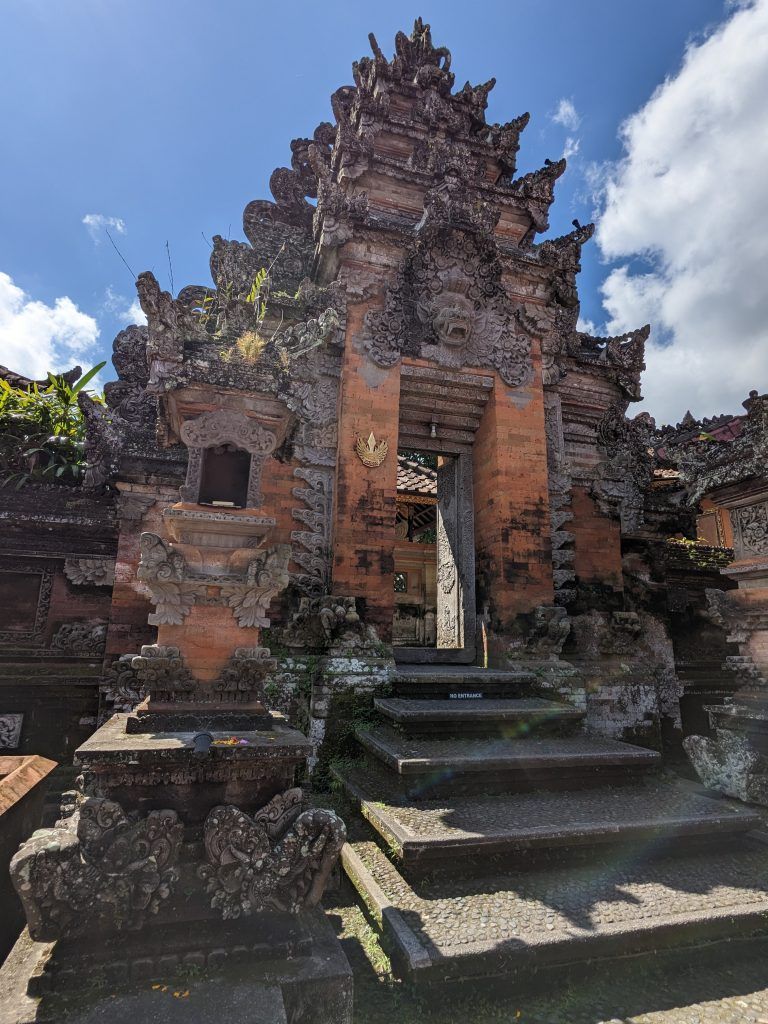
One of the highlights of a visit to Ubud is the Monkey Forest. While it’s now extremely crowded with tourists, it is large and lush and you can still find quiet places within it.
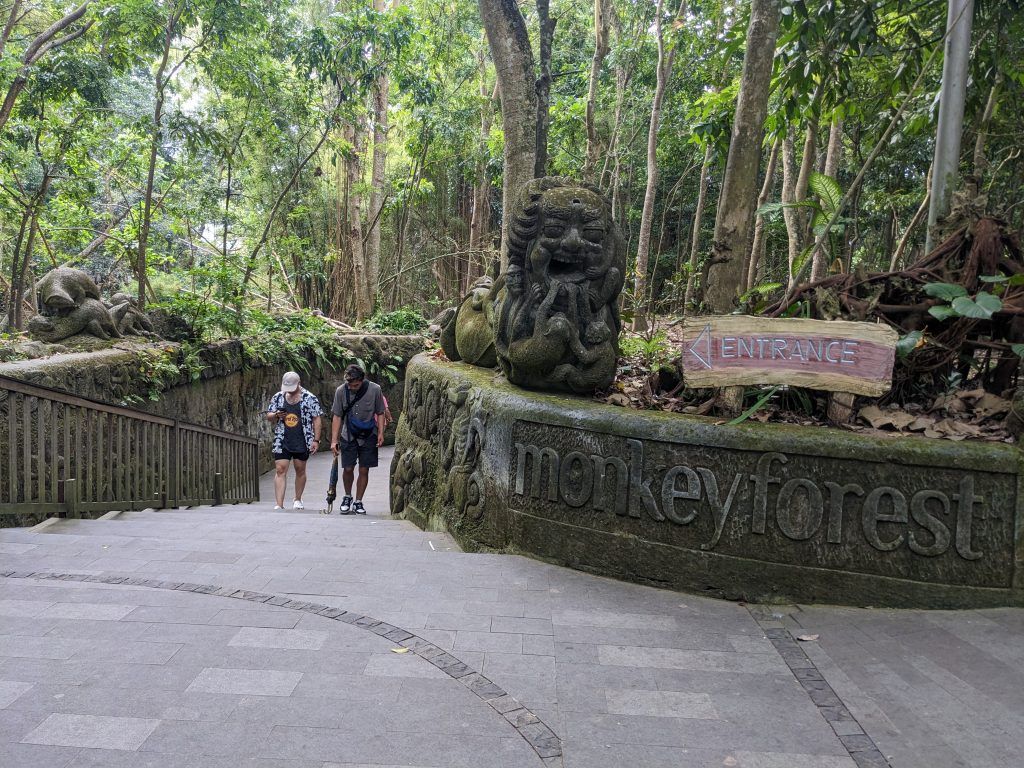
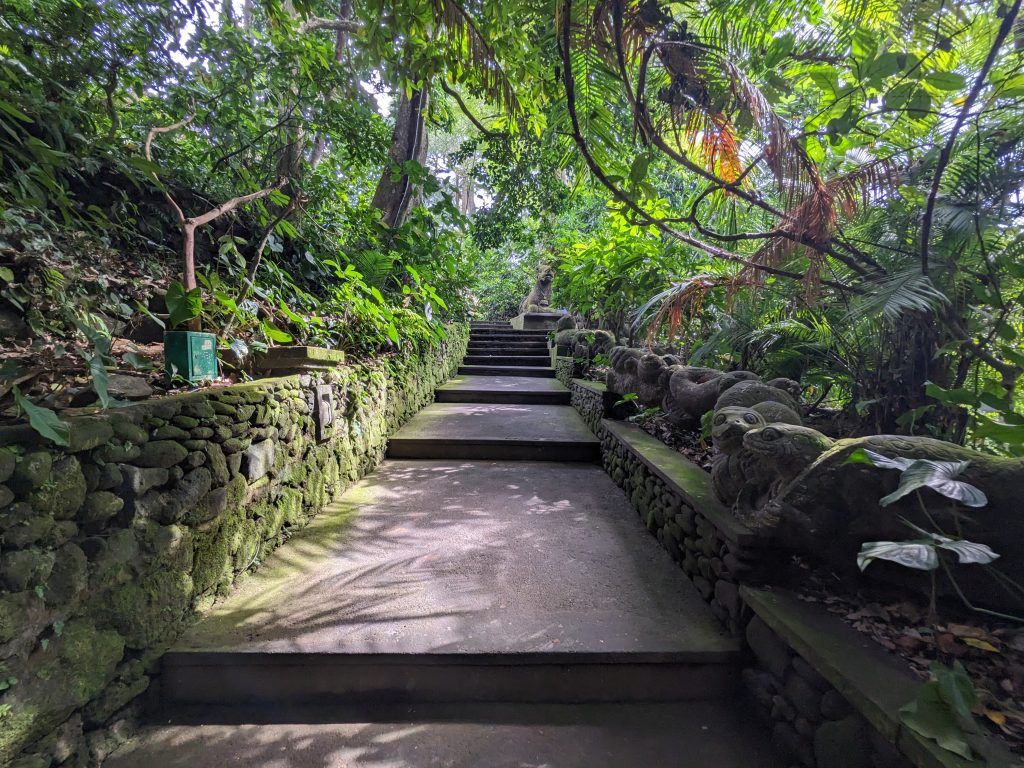
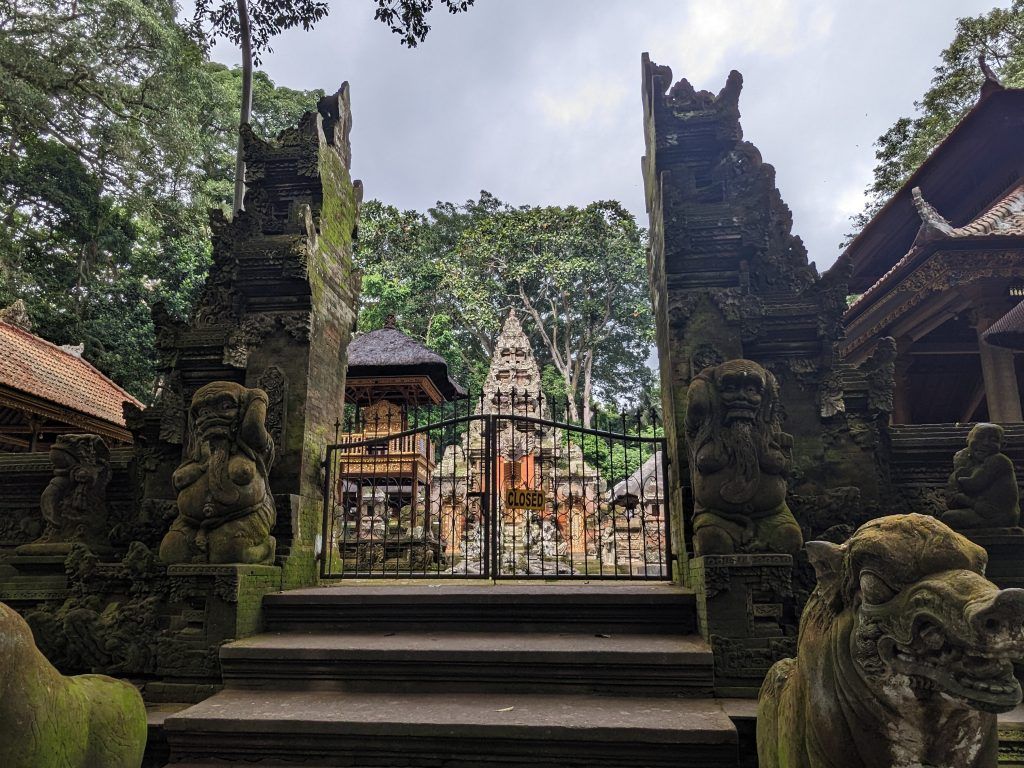
And what would a Monkey Forest be without monkees? They are everywhere and if they even hint you have food on you, they will be all over you.
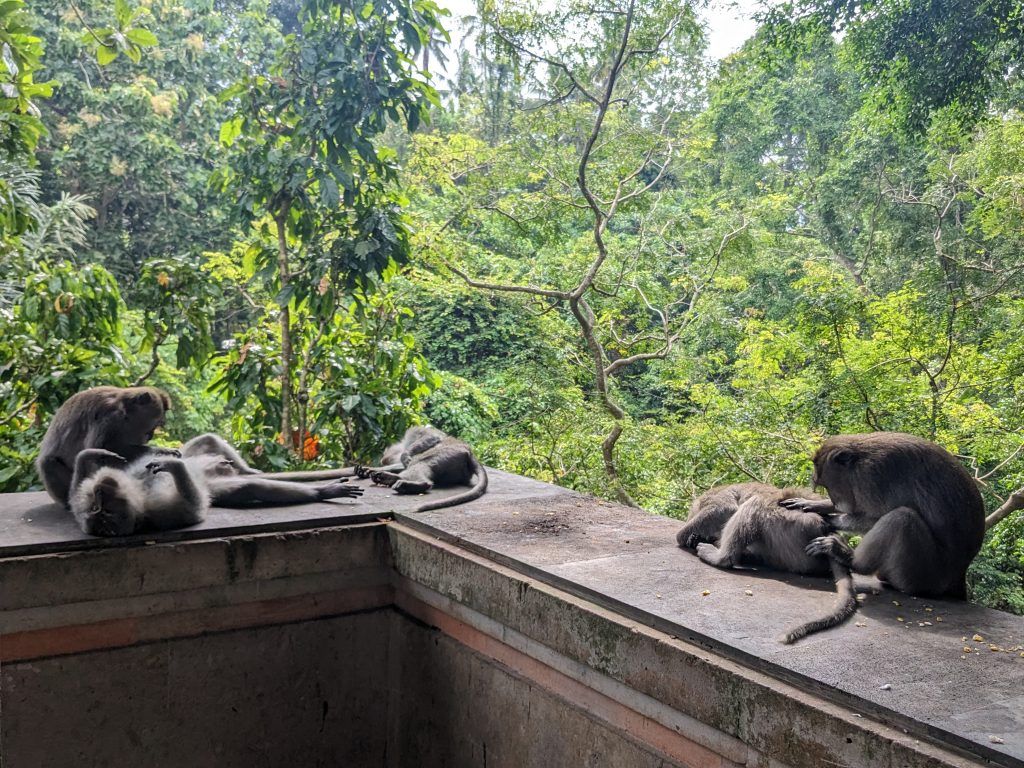
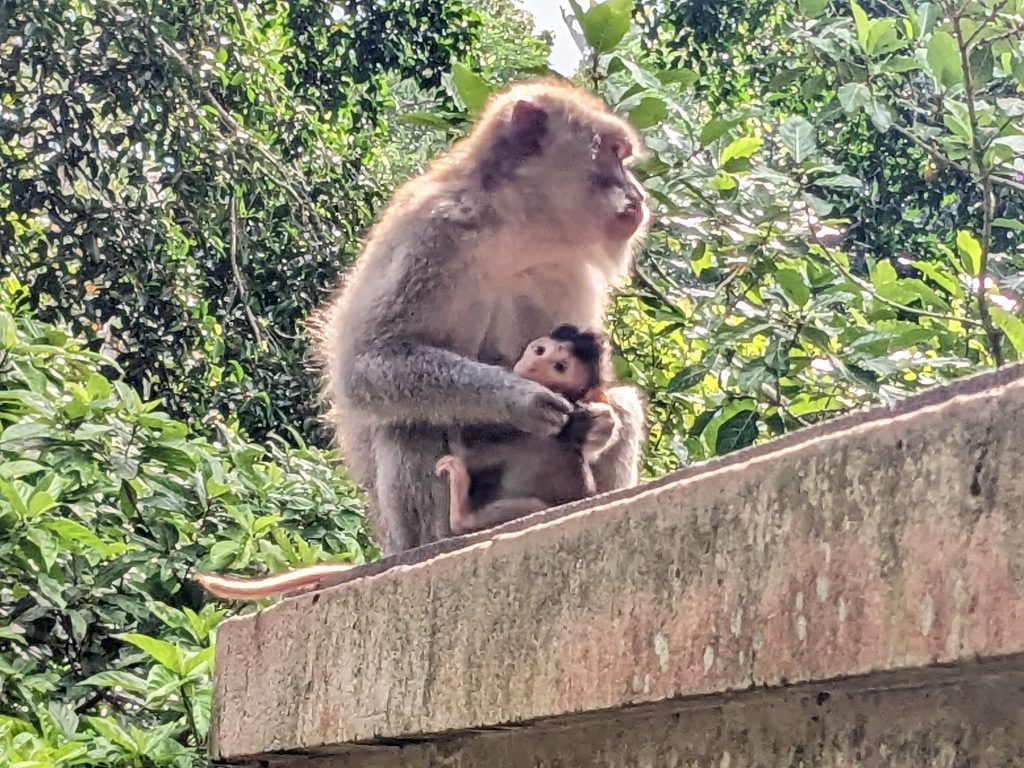
It seems one wayward monkey was able to escape the forest on a stolen scooter 🙂
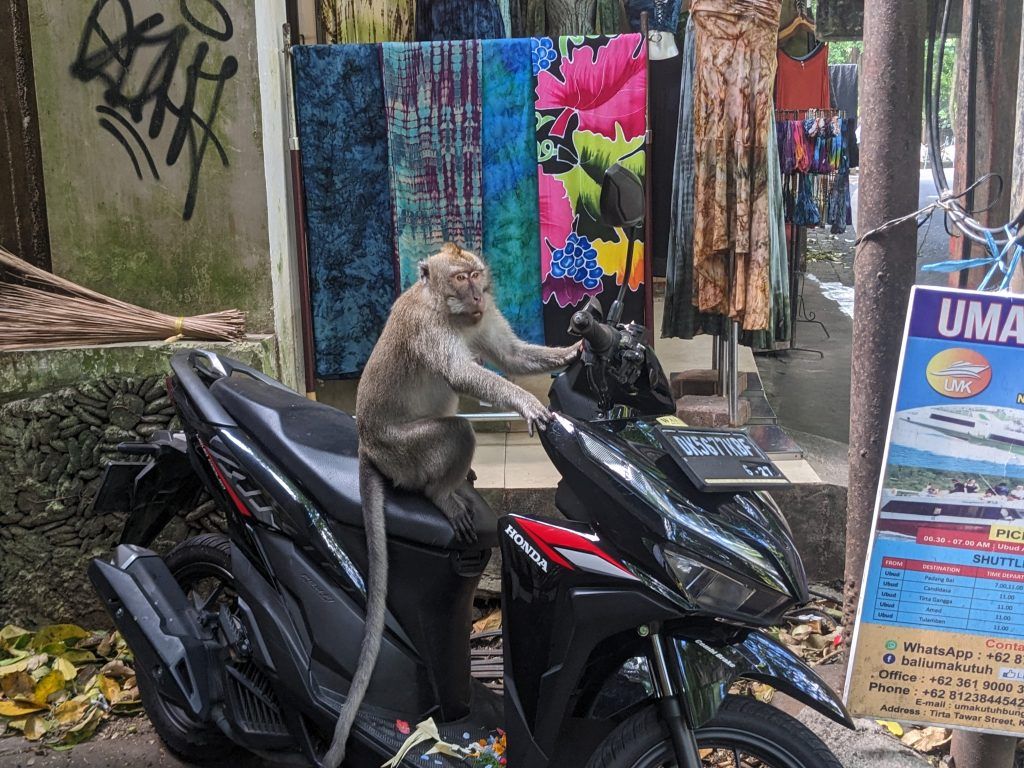
Just outside the main city there are still lush roads winding through beautiful rice fields; some where you can get off your scooter and, for a small fee, walk through nice trails.
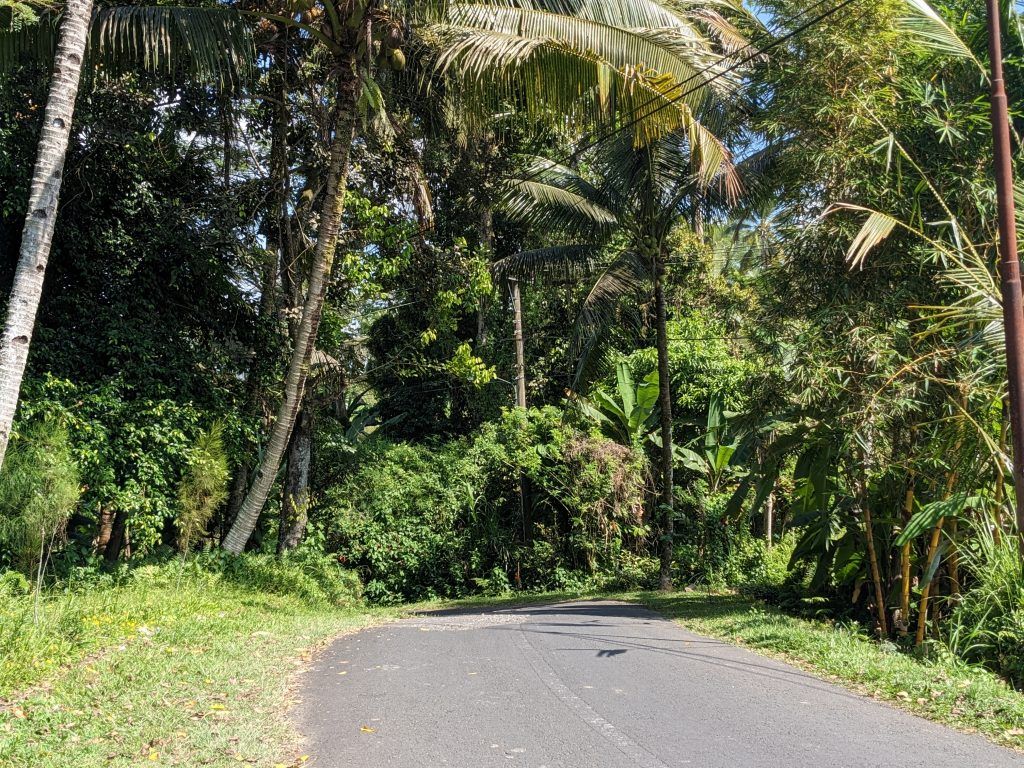
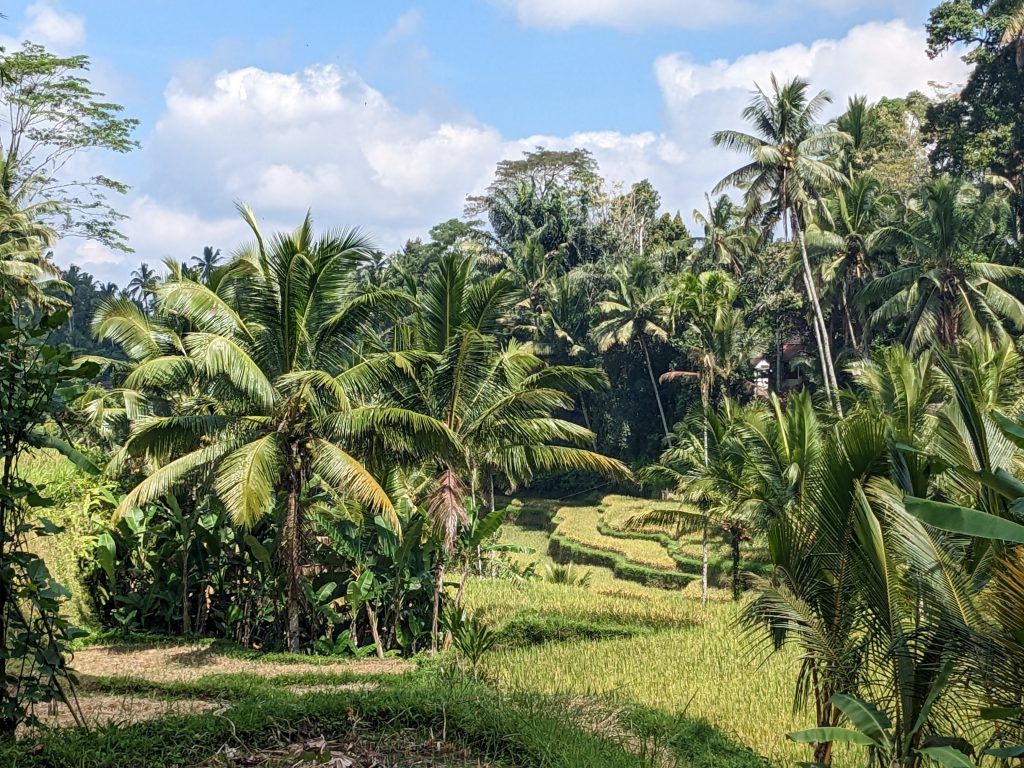
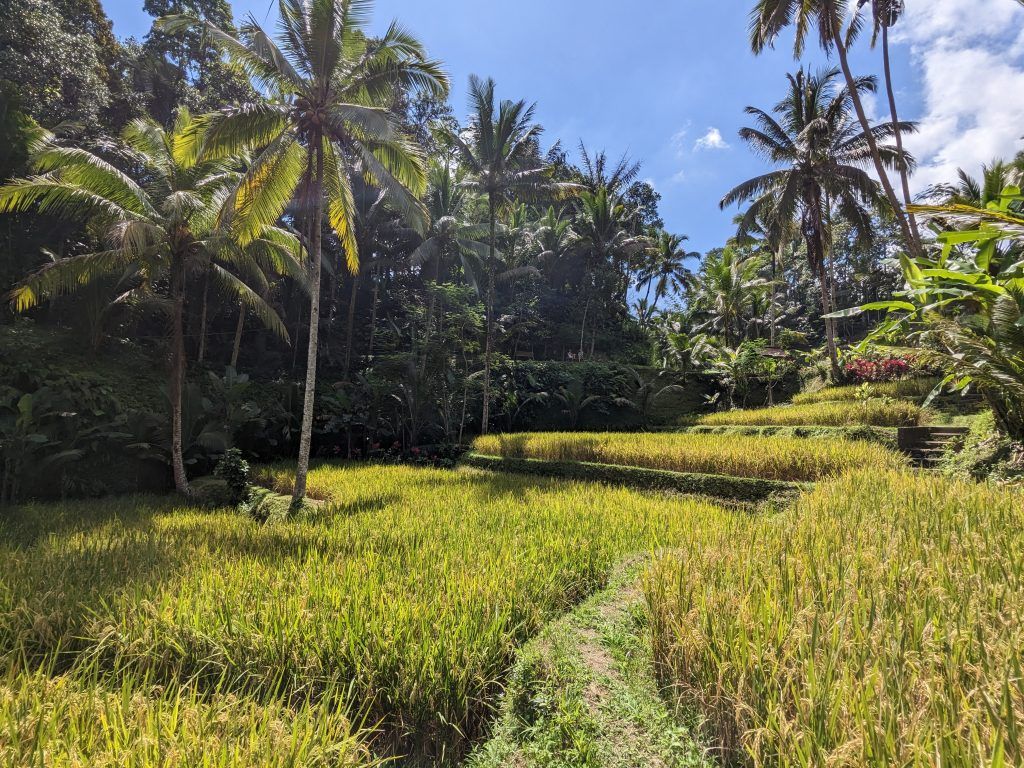
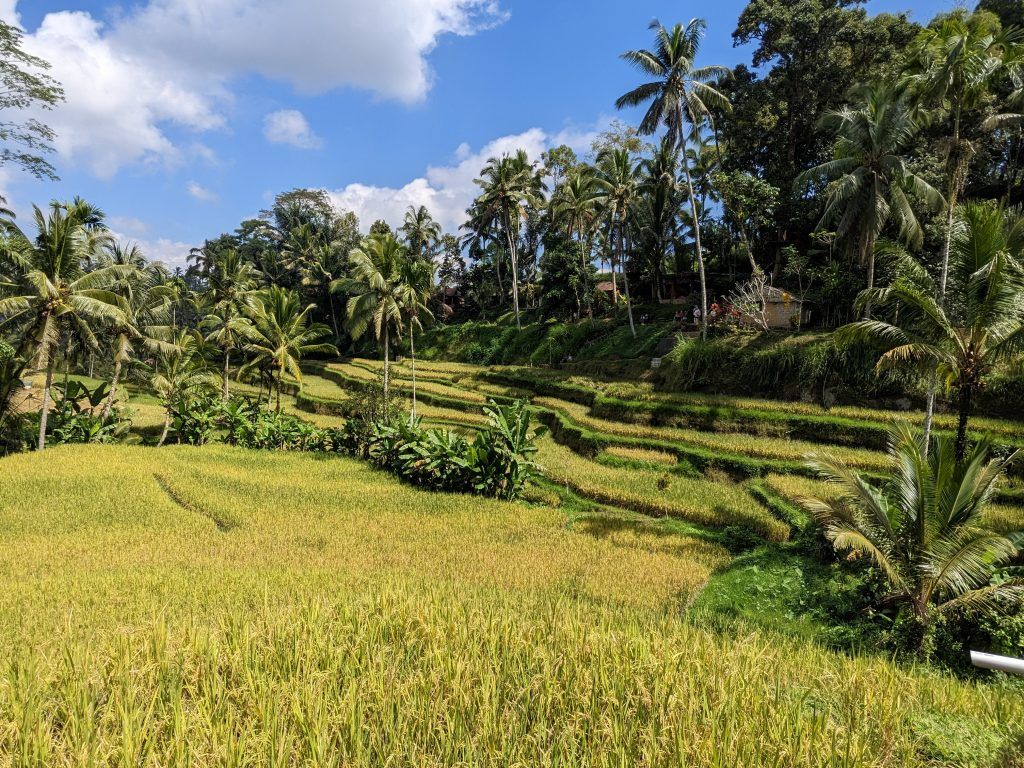
About a 40 minute scooter ride north of Ubud is the unique Tirta Empul temple. It was founded around a series of natural springs around 960AD. Its claim to fame is a bathing structure formed from the flowing spring water where Balinese Hindus go to for ritual purification. Tourist can also pay extra, don green sarongs, and join the locals in the their water rituals.
The temple is dedicated to Vishnu, where he stands over the entrance.
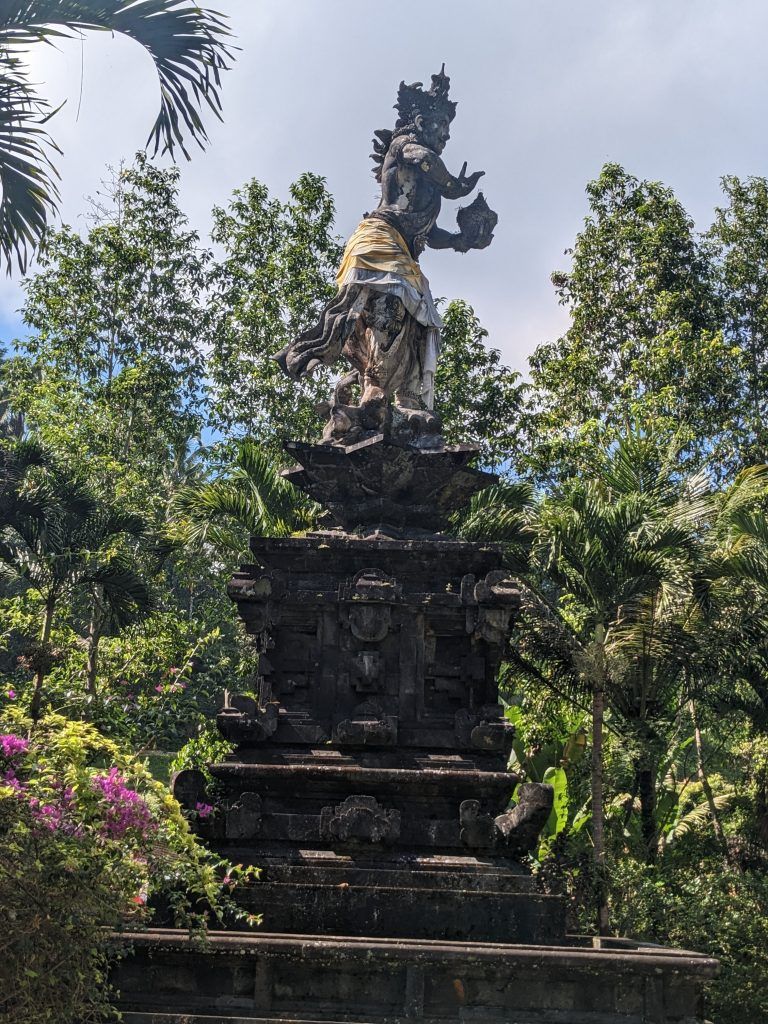
The bathing section where Balinese and tourists can mingle together in the ritualistic bathing.
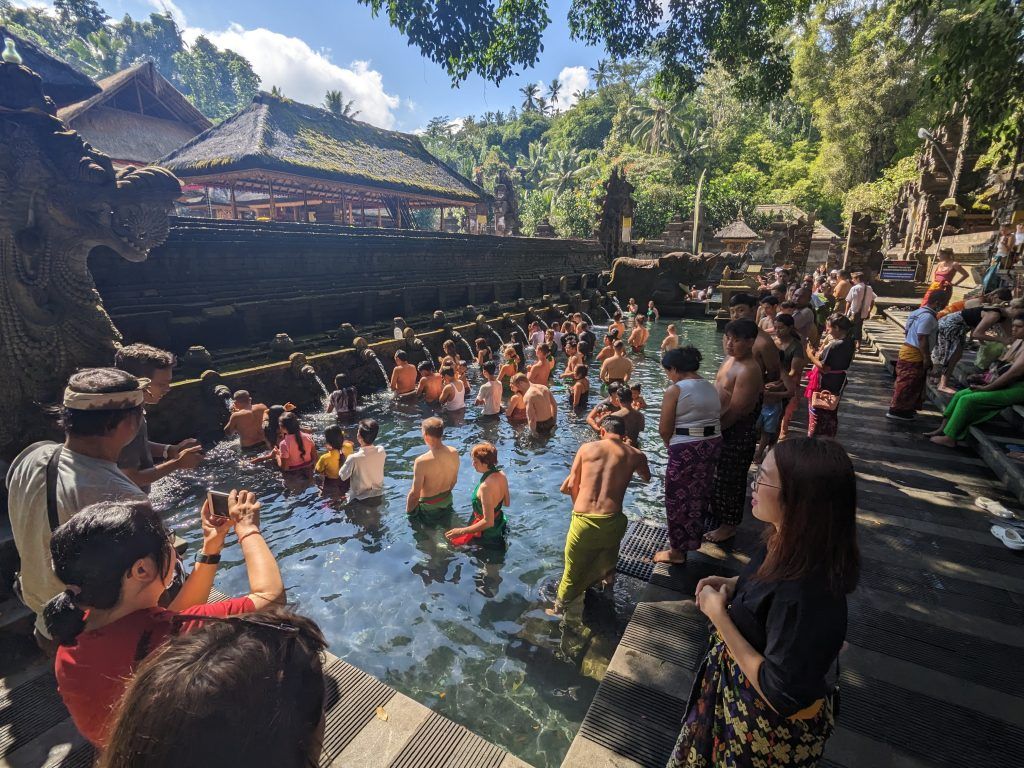
There are a number of other relaxing non-bathing pools around the temple.
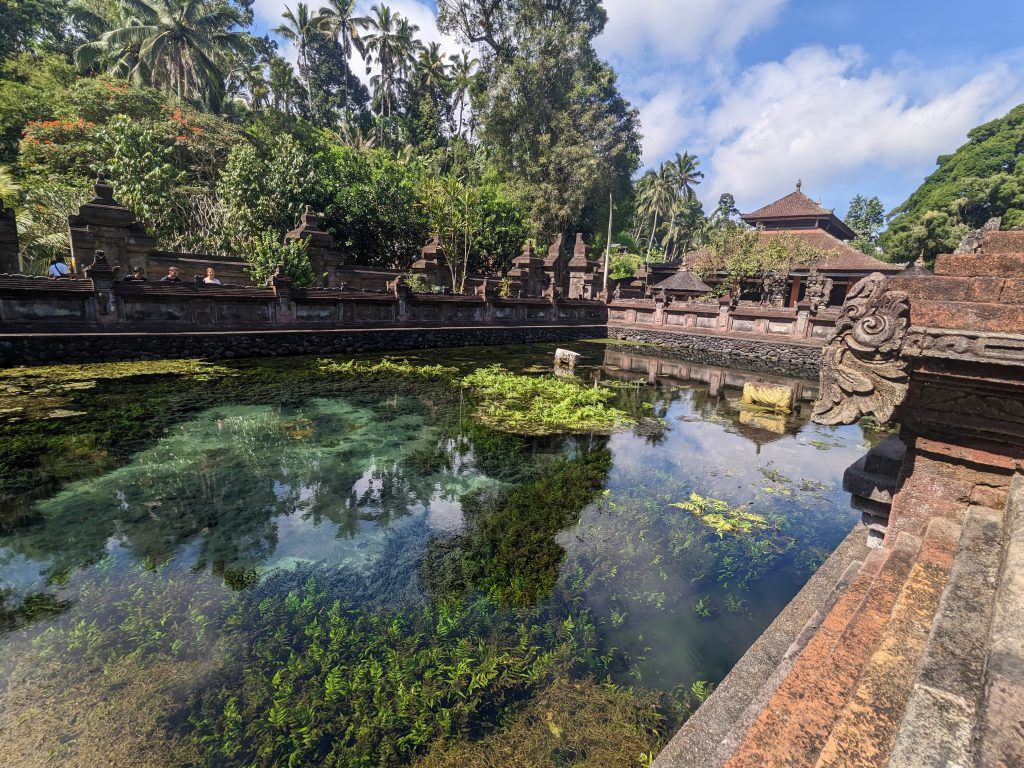
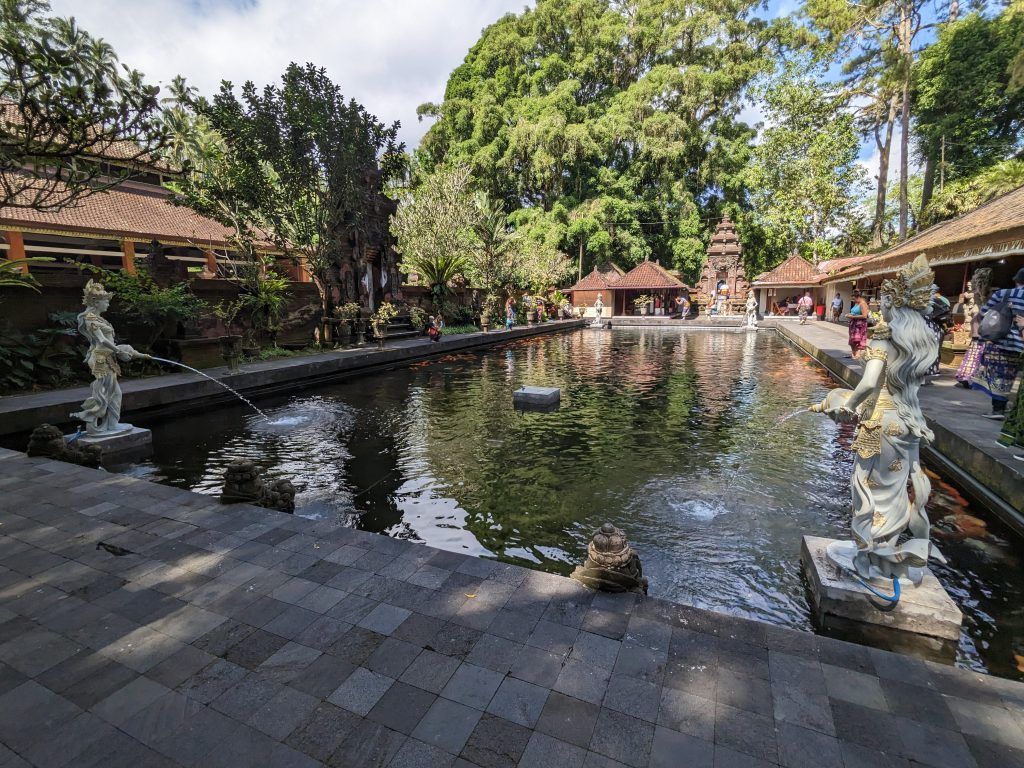
I had a chance to visit the nearby Bali Reptile Park. It’s situated in a lush area near the Bali Zoo and Bali Bird Park.
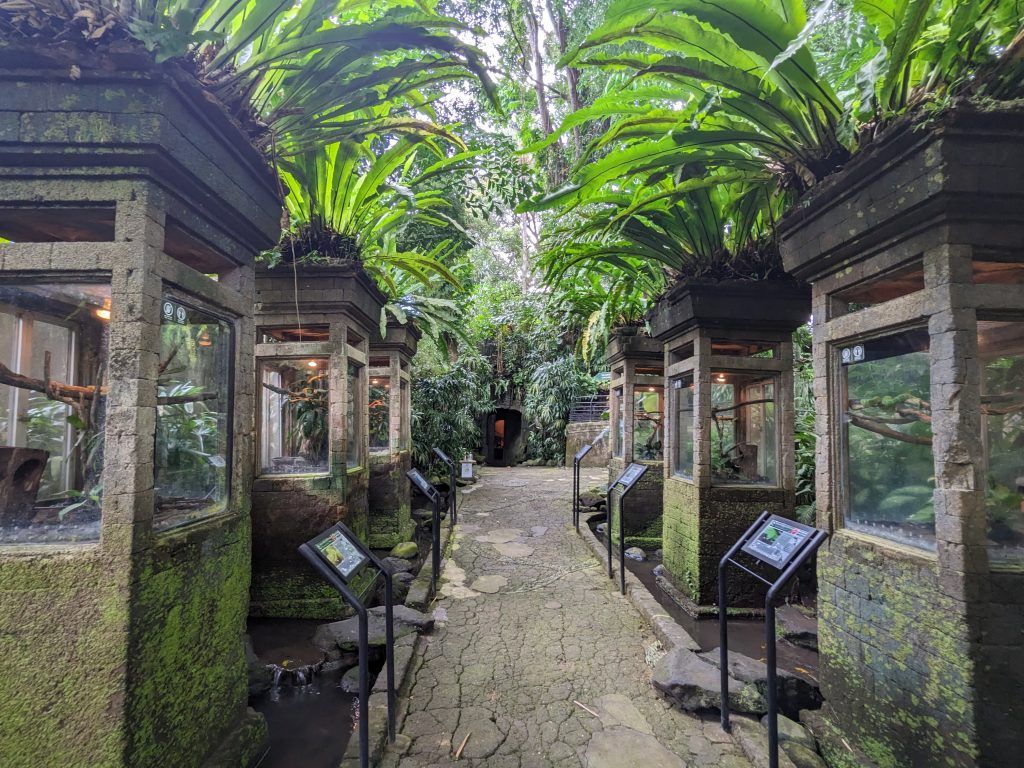
I got to meet a new friend, Anna, a friendly yellow anaconda.
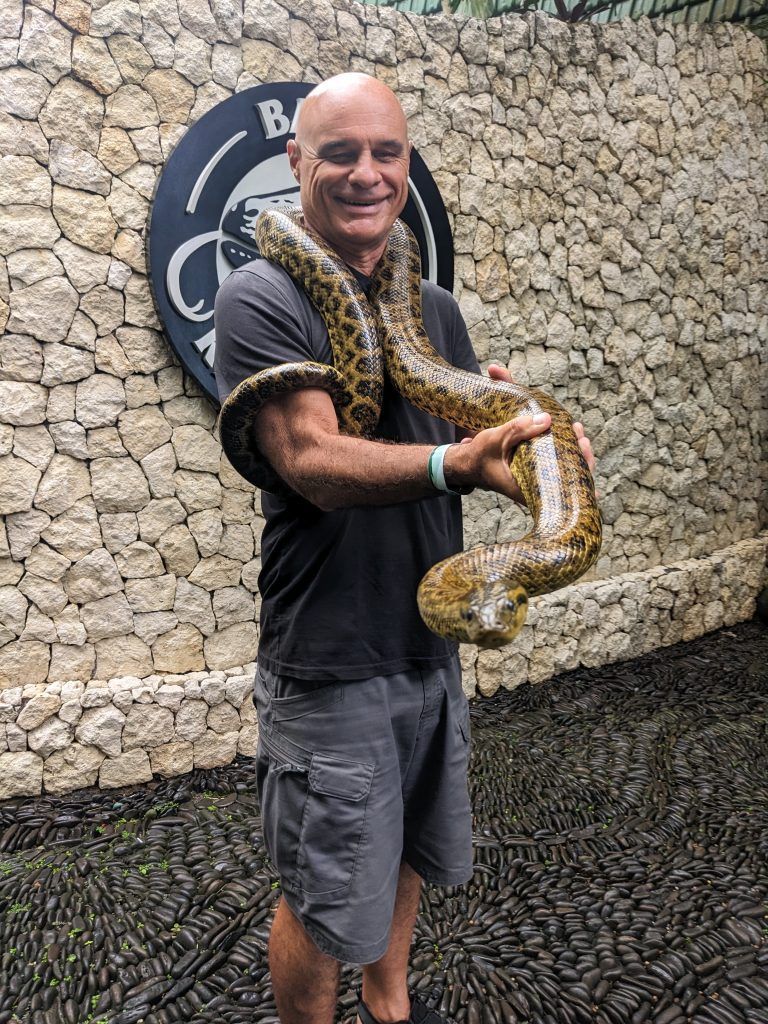
I also got to meet Gugu, a wonderfully ugly tegu lizard.
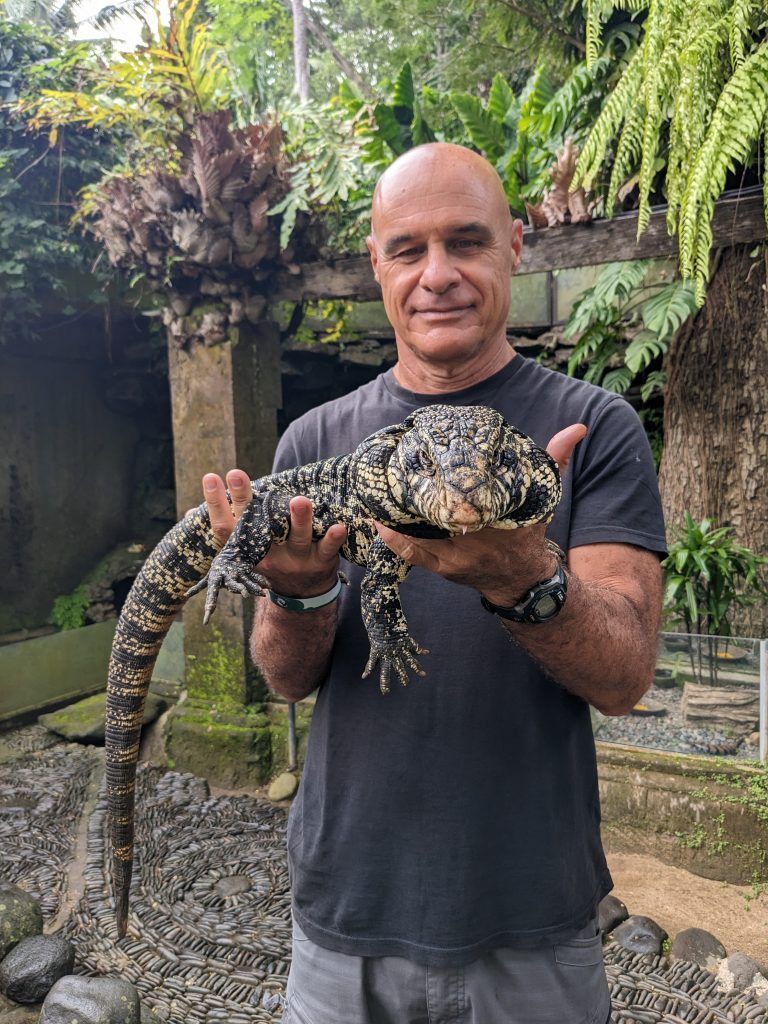
But I definitely did not try to make friends with the handful of crocodiles safely tucked in their enclosures in the park.
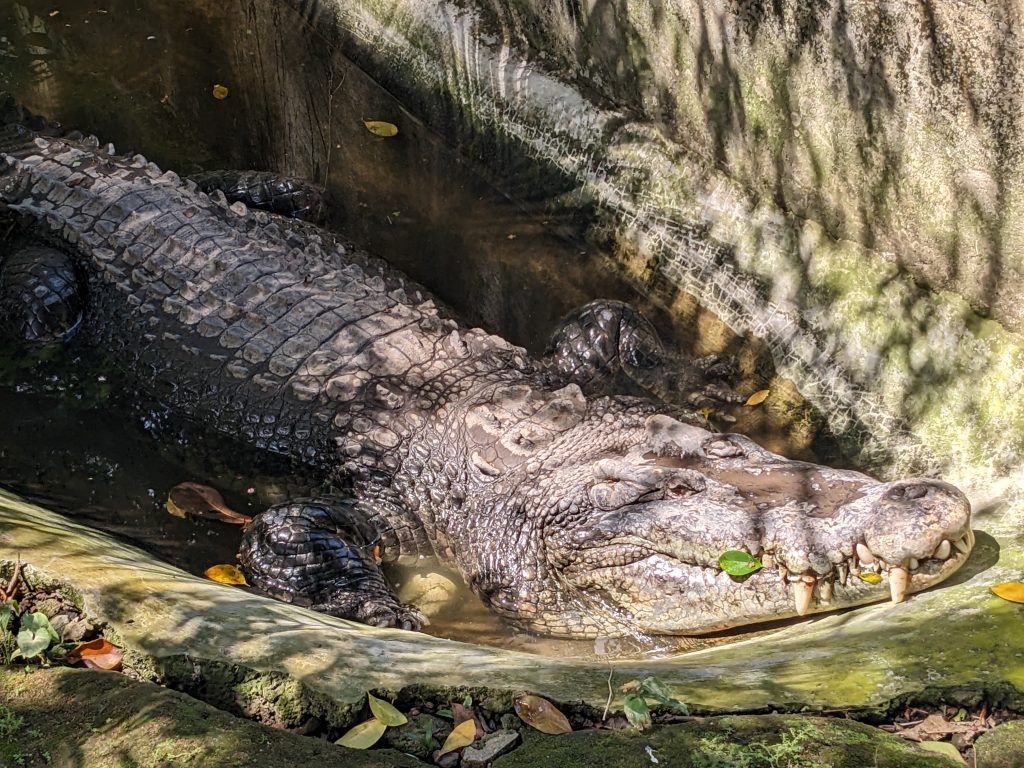
I stayed in a tranquil guesthouse/resort on a quiet sidestreet in the middle of town. I even got a relaxing 60 minute hot oil and hot stone back and shoulder message for under $20 at their spa facility.
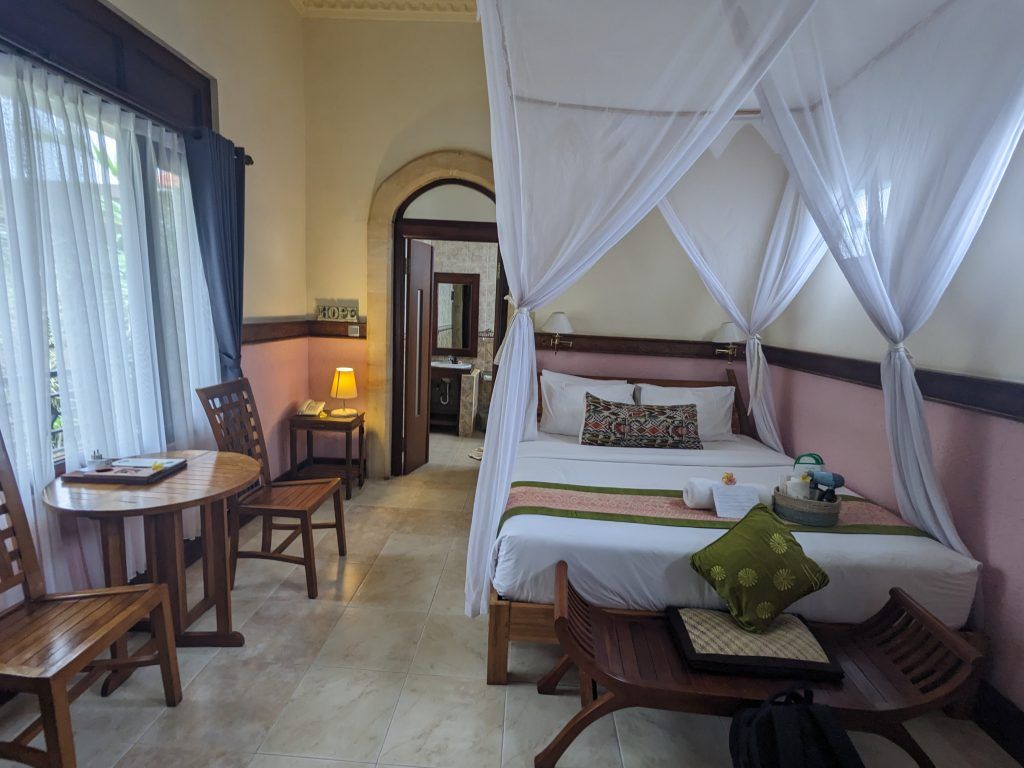
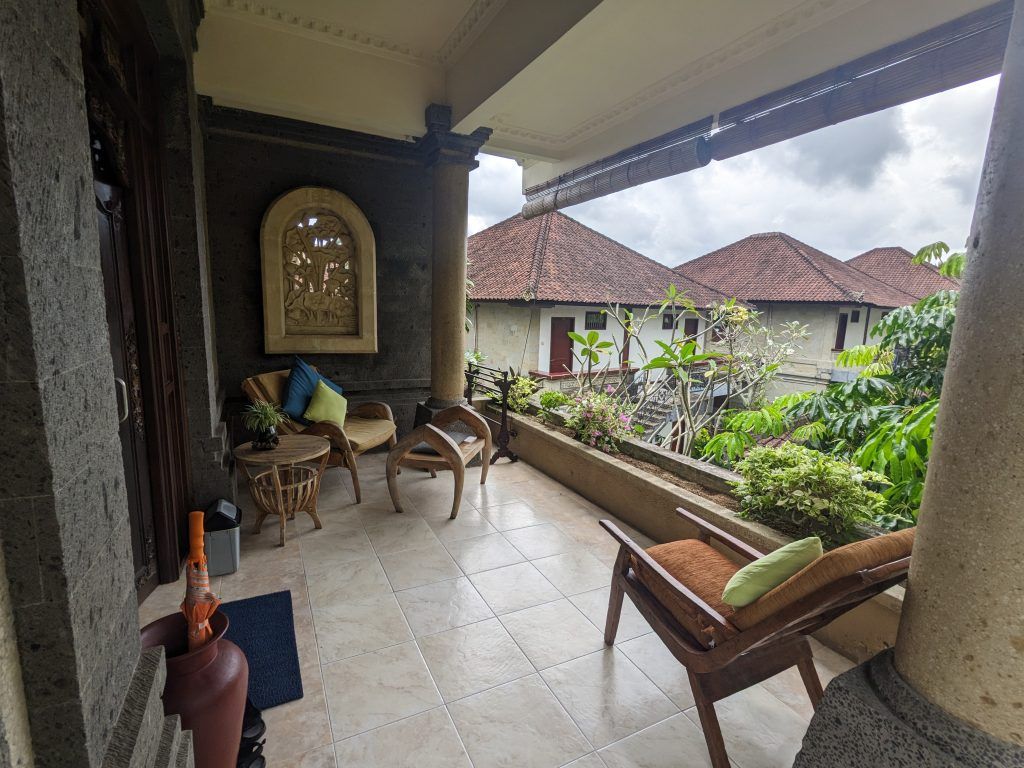
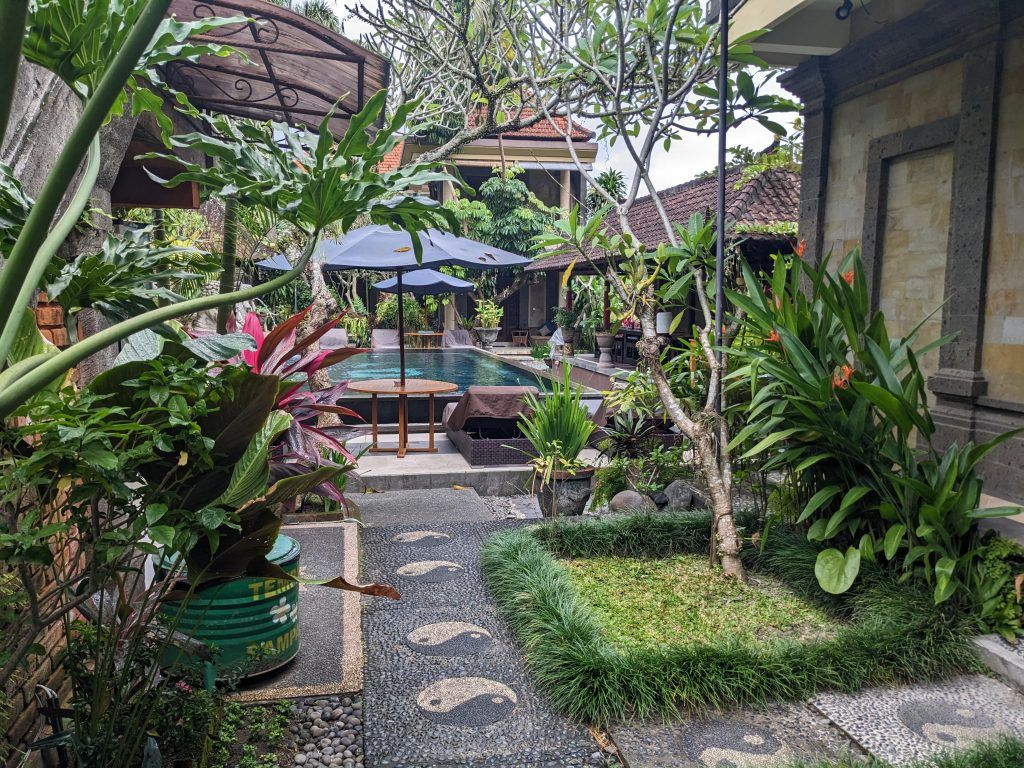
Canggu
Canggu is a victim of its own success. In less than 15 years it has gone from a small village that only some diehard surfers knew about to a crowded cacophony of western restaurants and shops, extensive beach clubs with internation guest DJs, and wave upon wave of scooters and cars clogging its small streets. It’s still a wonderful place in many ways, but it is definitely no longer a peaceful village. And riding a scooter there can sometimes be like being in a fun video game trying to avoid everyone, but mostly just damn annoying.
Another beautiful Canggu sunset from one of its ubiquitous beach bars
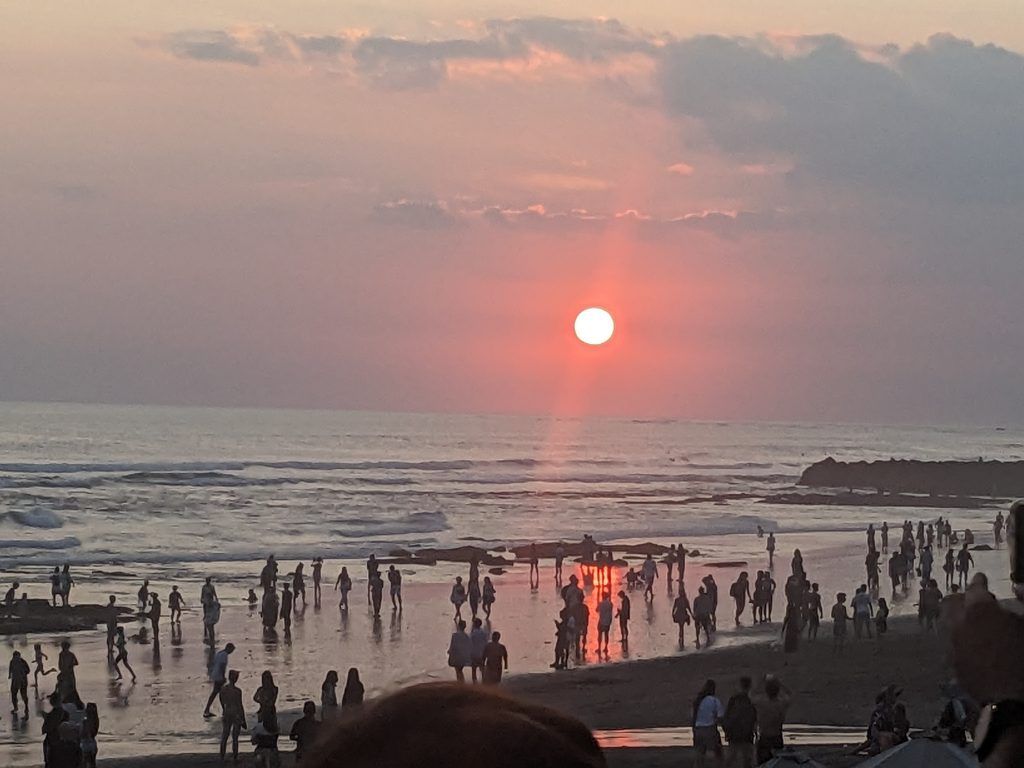
The famous Old Man’s bar which had recently reopened with new ownership near the aptly names Old Man’s beach, which is known for its easy beginner longboard waves. Since I had just started getting shoulder therapy in Kuala Lumpur and was continuing it in Canggu, I was under strict orders not to surf for a few weeks. Which was OK, because it was pretty crowded there and I wanted to get as much healing in as possible before my more extensive surfing expedition to Lombok in August.
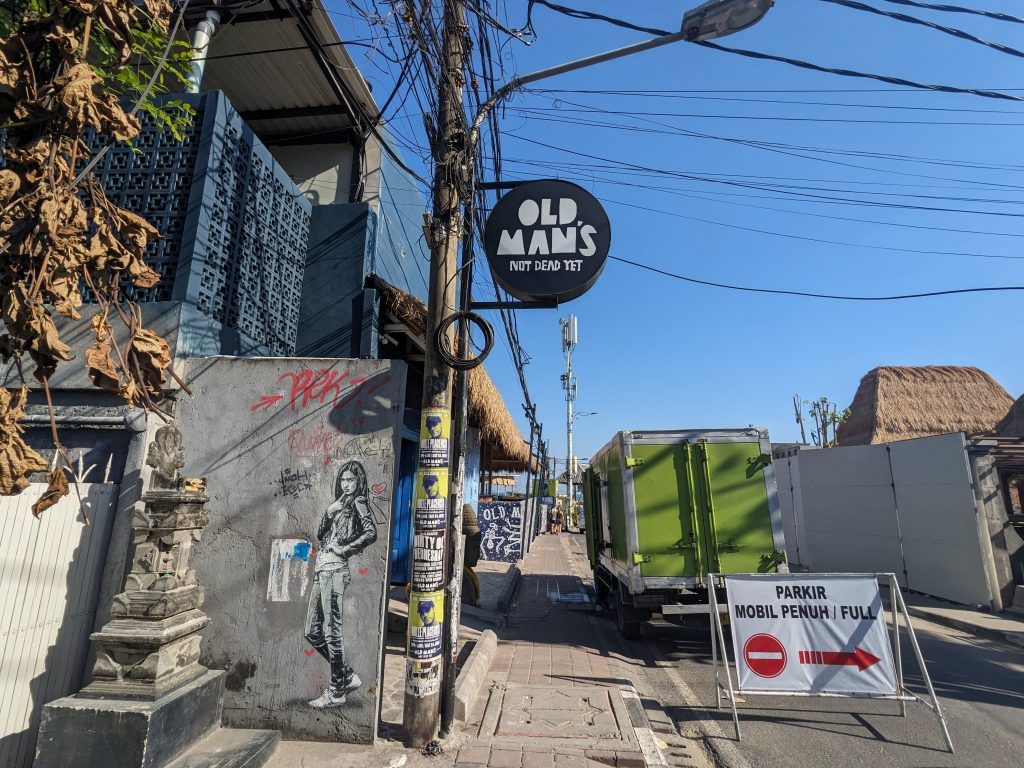
What seems to be a typically crowded surfing day at Old Man’s. I saw a couple of real nice collisions of people taking off on the same “party waves” and no one ceding right of way. I wish I could have been quick enough to have gotten pictures.
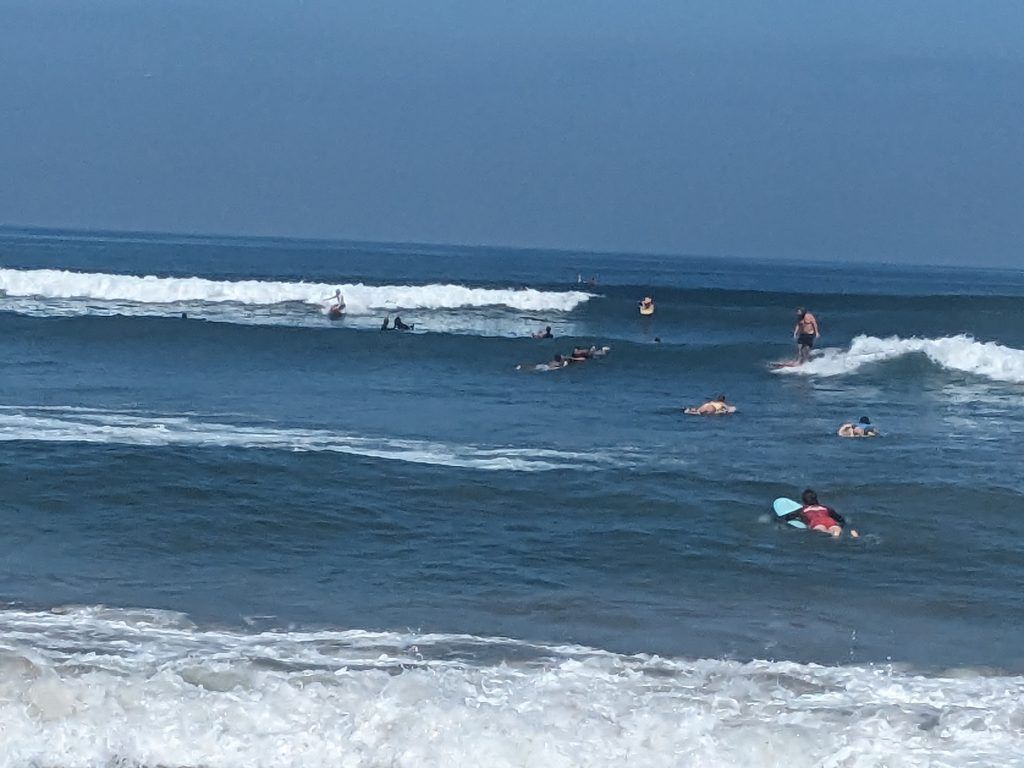
One of the multitude of shopping opportunities.
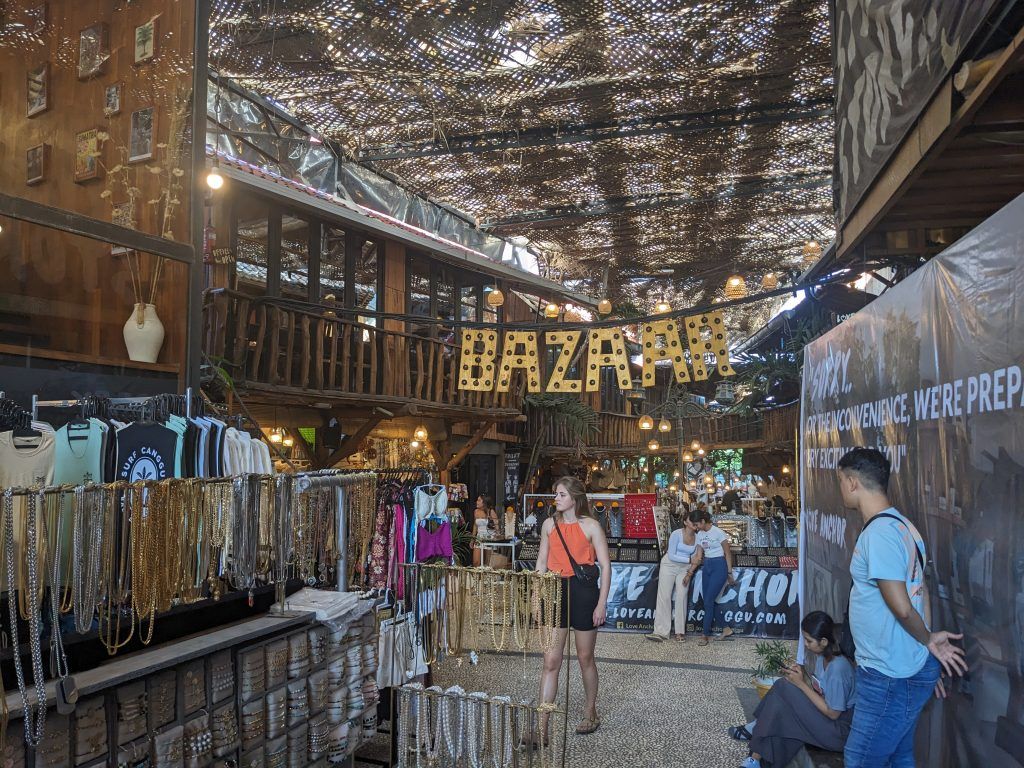
What were once rice fields are now shops, on a rare moment without a hoard of scooters whizzing by.
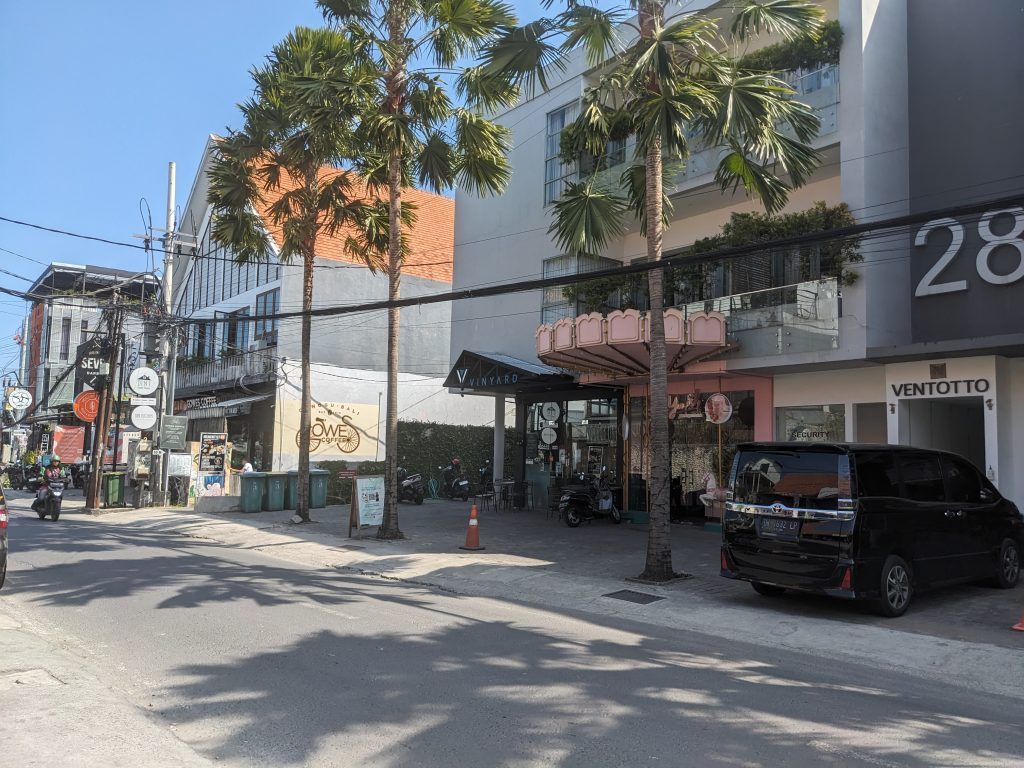
A nice view from one of the rooftop restaurants in town.
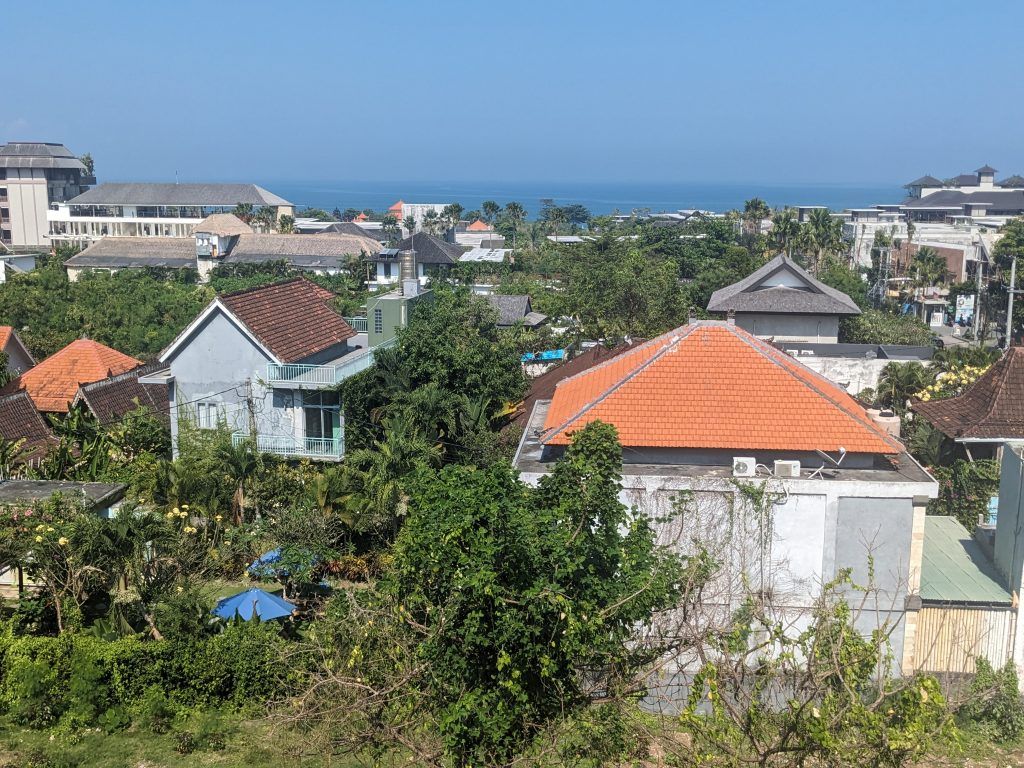
And there are still beautiful rice fields popping out amongst the newer, rampant development.
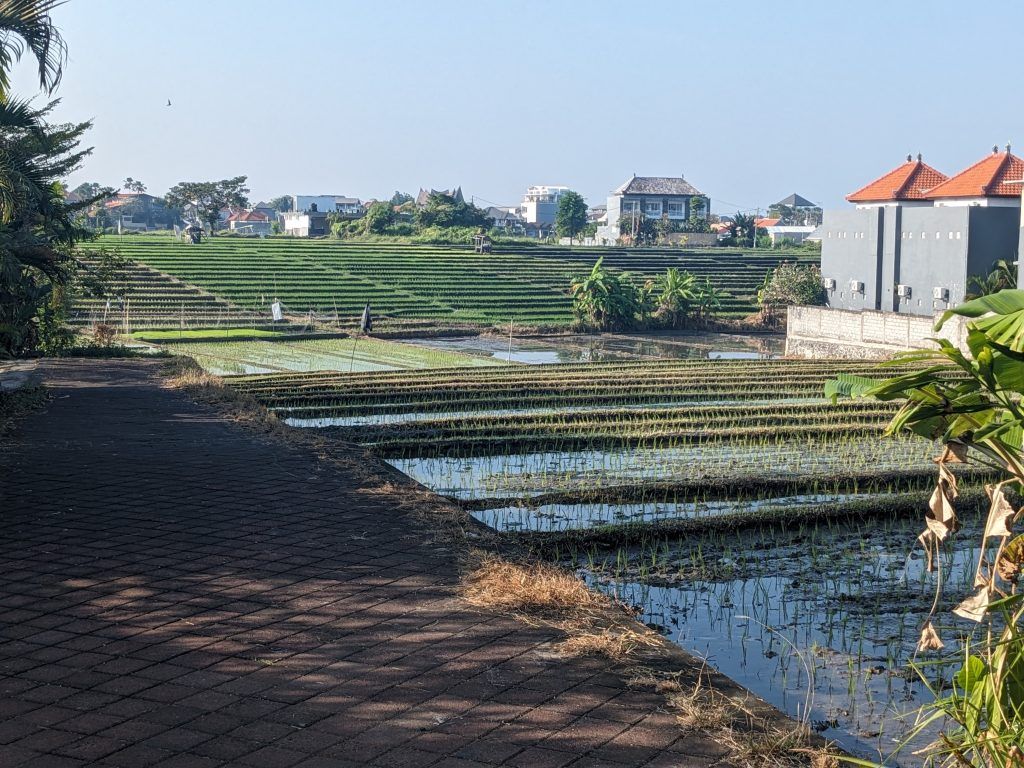
A small, musical funeral procession winds its way down one of Canggu’s main streets. The body in the white box will be cremated at the nearby beachside cemetary.
About 30 minutes north of Canggu are the incredibly scenic oceanside temples of Tanah Lot and Batu Bolong. Below is the gateway to the temple area.
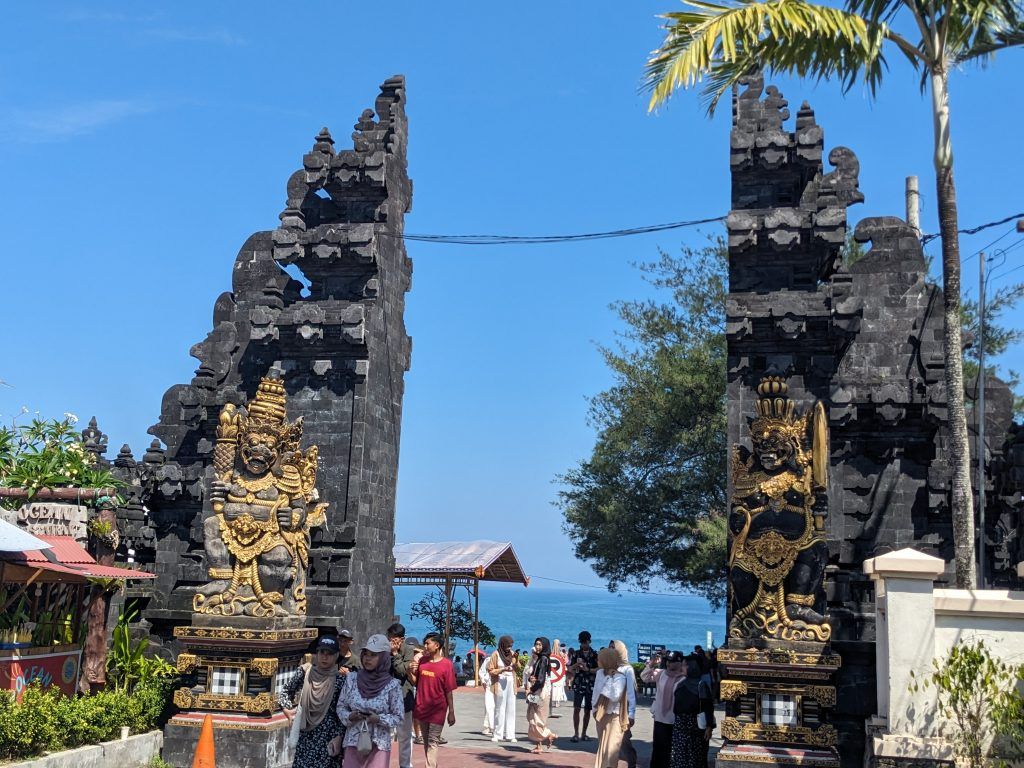
The spectacular view of Tanah Lot at high tide. If I had been able to arrive at low tide, I might have been able to walk across to the actual temple.
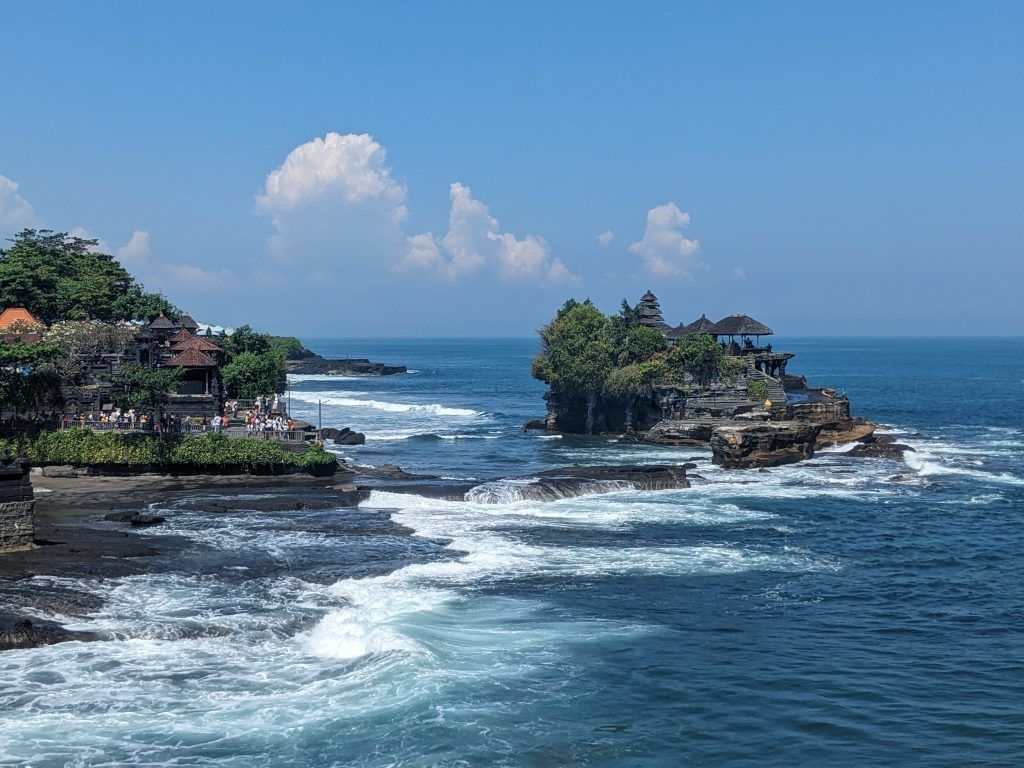
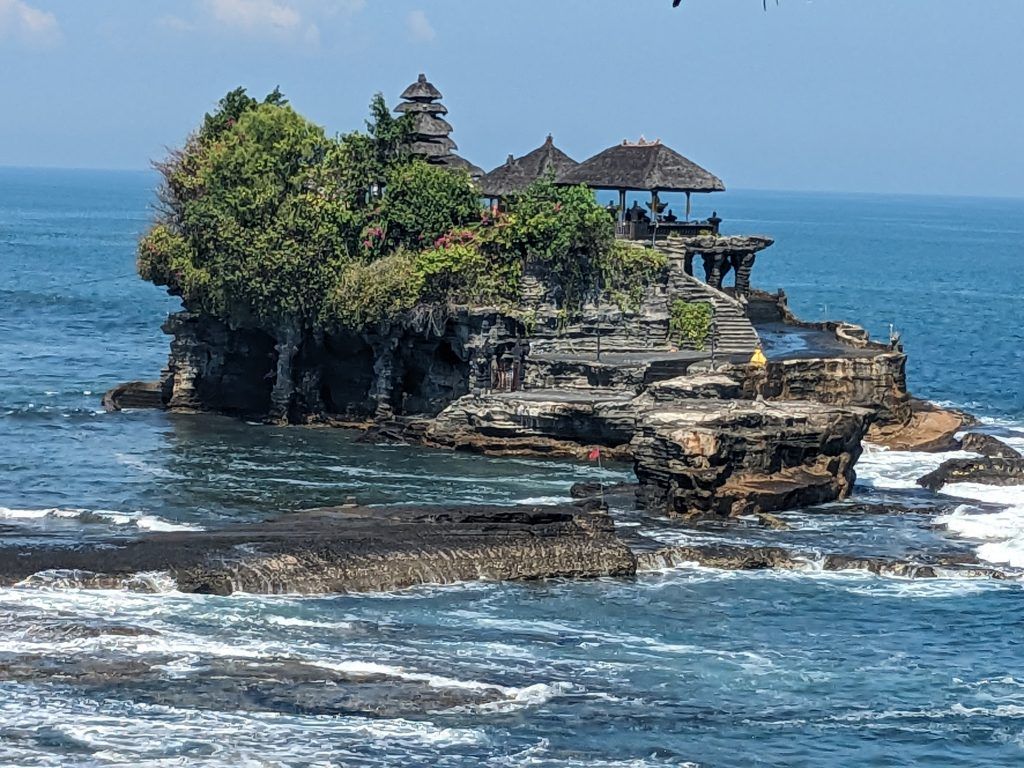
Right next to Tanah Lot is the less famous, but still incredibly scenic, temple of Batu Bolong.
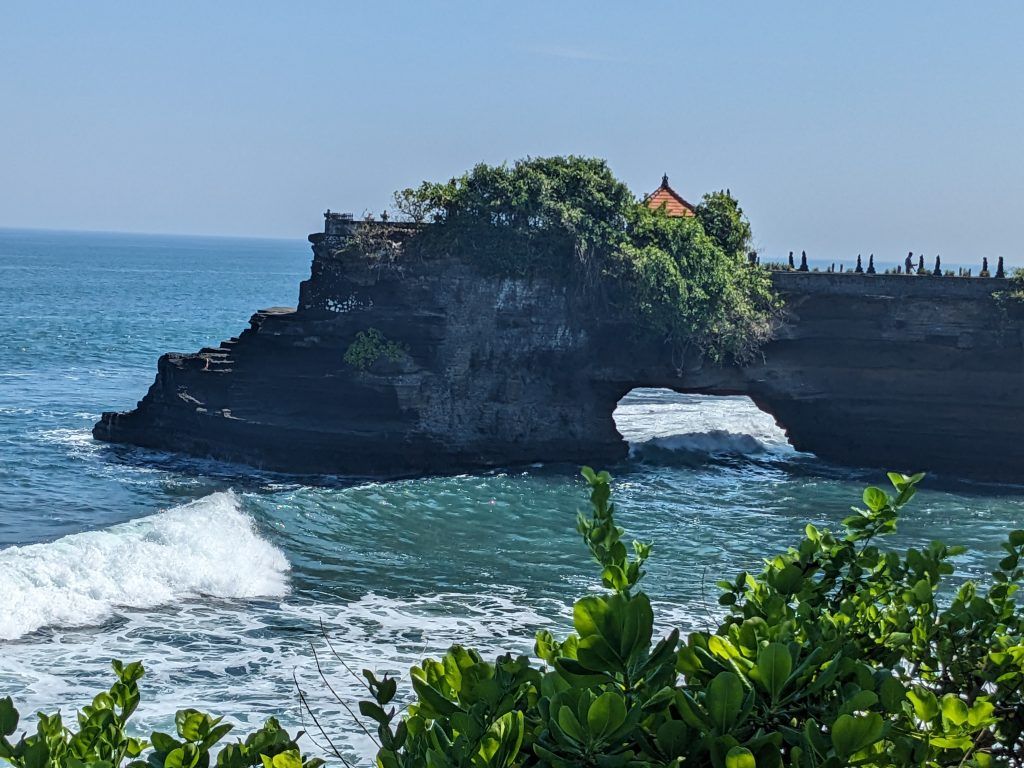
I stayed in a simple, comfortable guesthouse right in the main part of town.
